
- 0086-891-6679450
- Everest Base Camp Tour Mount Kailash Tour Lhasa Tour Top 7 Tibet Tours Tibet Private Tour
- 4 Days Lhasa City Essential Group Tour from USD490 8 Days Lhasa to Everest Base Camp Group Tour from USD930 9 Days Lhasa Shigatse Mt.Everest Namtso Tour from USD1230 15 Days Mt.Everest & Mt Kailash Group Tour from USD1990
- 7 Days Lhasa Mt. Everest Kathmandu Overland Group Tour from USD980 12 Days Lhasa Mt Everest & Mt Kailash Kathmandu Group Tour from USD1990 13 Days Classic Tibet Nepal Bhutan Group Tour from USD2706 13 Days Tibet Nepal Nature Scenery Tour from USD2810
- Beijing and Tibet Tours Shanghai and Tibet Tours Chengdu and Tibet Tours Xian and Tibet Tours Guangzhou and Tibet Tours
- 6 Days Xining Lhasa Train Tour from USD880 6 Days Chengdu Lhasa Train Tour from USD785 7 Days Beijing Lhasa Train Tour from USD1040 8 Days Shanghai Tibet Train Tour from USD1235 Trains to Tibet
- Flights to Tibet
- Tibet Attractions
- Tibet Hotels
- Tibet Weather
- Tibet Permit
- When to Travel
- Plan a Trip
- How to Get to Tibet
- Travel Tips
- Tibetan New Year Tibetan Festivals Customs and Traditions Tibetan Food Tibetan Buddhism
- Bhutan Nepal Tibet Tours Nepal Tours Bhutan Tours Lhasa to Kathmandu India to Tibet
- Tibet Travel Tips

Top 10 Meditation Retreats in Tibet
- Tibet Travel Guide
- Introduction to Tibet
- Reasons to Visit Tibet
- Top Things to Do
- Tibet Tour Packages
- Attractions
- Tibet Travel Permit
- Weather & Climate
- Things to Know Before Going
- Plan a Trip to Tibet
- How to Visit Tibet
- Best Time to Visit Tibet
- Avoid Altitude Sickness
- Packing List
- Tibet Landscape
- Tibetan Culture
- Tibetan Festivals
- Tibetan Buddhism
- Tibetan People
- Tibet Currency
- Shopping in Tibet
- Tibetan Food
- Etiquette and Taboos
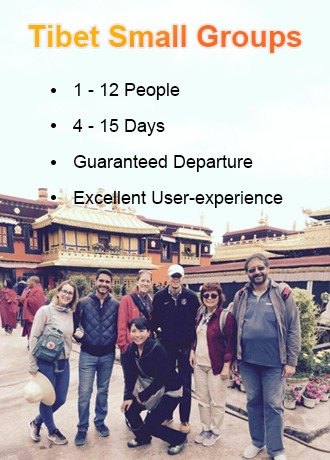
- by Catherine
- Last Updated: 2024-03-15
Meditation can allow us to fully release stress, find inner peace and explore the potential of the mind. While traveling to Tibet can allow us to see different plateau scenery and find freedom and relaxation during the journey. If you combine meditation and Tibet travel, it will be an amazing journey of a lifetime!
Here are the best five meditation destinations in Tibet including the top ten meditation retreats. Where do you prefer to go?
No.1: In and Around Lhasa:
Lhasa, the holy land of Tibetan Buddhism, also called Sunlight City, is located in the middle of the Tibetan Plateau . It is the capital of the Tibet Autonomous Region and the political, economic, cultural, and religious center, at an altitude of 3658 meters above sea level.
This is a gathering place for devout believers. All the time, countless believers prostrate thousands of times, along their pilgrimage roads to Lhasa.
What you should experience most in Lhasa is a slow lifestyle. Here, you will unconsciously slow down your pace and rhythm, follow the local Tibetans on the kora road of Barkhor Street at will and make some good wishes and blessings.
There are some great places for meditation in and around Lhasa,
Drak Yerpa Retreat
Drak Yerpa Monastery is one of the four major meditation retreats in Tibet. It was built in the 7th century and has a history of 1,500 years. Located about 20 kilometers northeast of Lhasa, it belongs to Dazi County.
Unlike the surrounding mountains with only a shallow layer of turf on the surface, the mountain where Drak Yerpa sits is full of a natural aura. The pines and cypresses on the mountain are tall and straight, dense and green, the spring water on the mountainside trickle down, and streams are gurgling at the foothill. In spring and summer, the mountain flowers are blooming, and all the birds are singing.
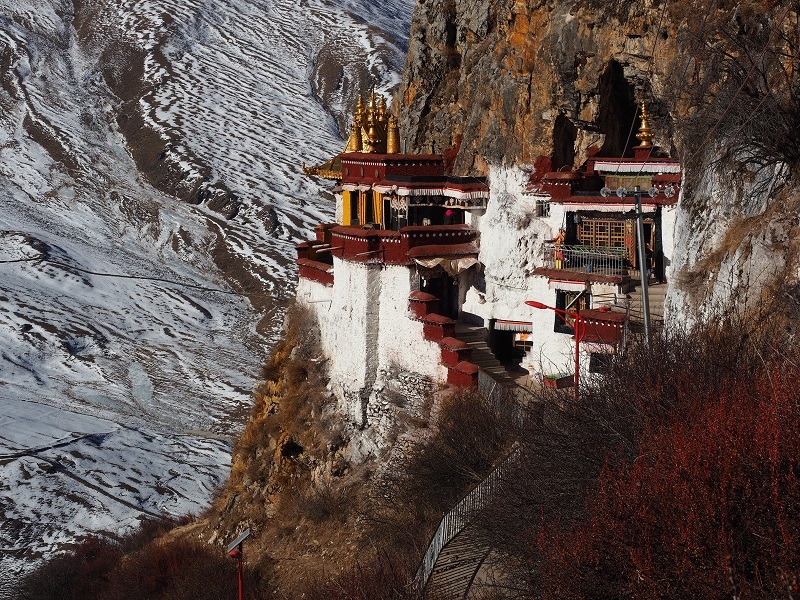
There are many caves for practice in the mountains, and the temple was built on the basis of these caves. The caves include Dharma Cave where the King Songtsen Gampo practiced, the Moon Cave where the Padmasambhava practiced, the Lhalung Cave where the Lhalung Palkyi Dorje who assassinated the last Tubo Emperor practiced, the Patriarch Cave where the Atisha practiced, etc. This is a highly recommended place for meditation tours.
√ 5 Days Lhasa & Ganden Monastery Tour
Pabonka Hermitage
Pabonka is located in the northern suburbs of Lhasa, about 7 kilometers from the center of Lhasa, with Sera Monastery on the left.
Pabongka is a temple built on the rock, where Princess Wencheng and Songtsen Gambo practiced before they got married. And there is also a cave where Master Padmasambhava practiced. Pabongka enshrines a stele with the first Tibetan six-syllabled Sanskrit mantra, and it is the birthplace of the six-syllabled Sanskrit mantra.
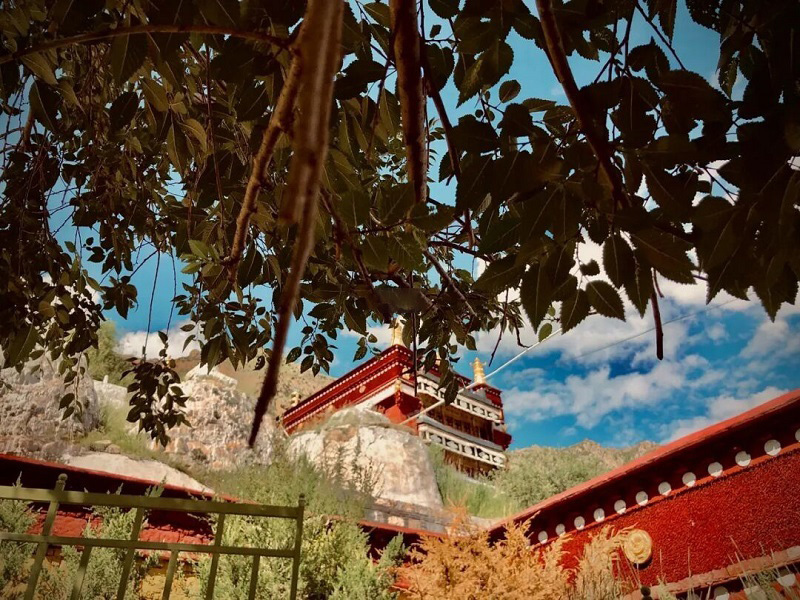
There are very few tourists, mainly locals. On the back mountain, there are many prayer flags fluttering and cattle and sheep grazing. From here, you can overlook the scenery of the entire Lhasa River Valley as well as the back view of the Potala Palace. It is absolutely suitable for meditation in Tibet.
√ 5 Days Sera Utsé Hermitage Half Day Tour
Namtso Lake
Namtso, located in the central part of the Tibet Autonomous Region is the second largest lake in Tibet. Namtso, Manasarovar, and Yamdrok Lake are collectively known as the three holy lakes in Tibet.
For thousands of years, they have been deeply imprinted in people's minds with their unique natural charm and many mythical legends. Namtso is like a crystal gem, inlaid on the prairie. With its magnificent scenery and beautiful legends, it has intoxicated many tourists and pilgrims.
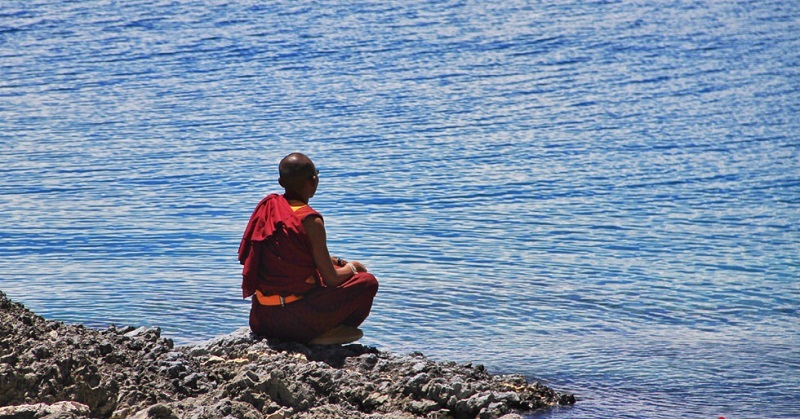
Everyone who has been to Namtso, whose entire soul might be cleaned by pure lake water, as if exposed to the blue ocean. Coming here to have Tibetan meditation tours, you can eliminate all interference from the outside world, and devote yourself to such a pure blue world. It is simply wonderful!
√ 5 Days Lhasa & Namtso Lake Tour
No.2: Shannan (Tsetang) – Birthplace of Tibetan
Shannan is the birthplace of Tibetan culture, where the legend is that the god monkey and the Rakshasi combined to give birth to Tibetans. The Shannan area is located in the middle valley of the Yarlung Zangbo River. There're magnificent mountains and rivers, mysterious sacred lakes, picturesque virgin forests, vast grasslands, majestic and steep Yarlung Zangbo waterfalls, as well as time-honored cultural relics and ancient books. There is no severe cold in winter and no scorching heat in summer. The weather is pleasant in all seasons and is very suitable for meditation.
Samye Monastery
Samye Monastery is located at the foot of Mount Harbu on the north bank of the Yarlung Zangbo River. It was built in the 8th century AD during the Tubo dynasty and was the first monastery in Tibet where laymen were ordained as a monk.
The whole monastery was built like a mandala in the Buddhist Tantra. The Utse Hall is like Mount Sumeru, the center of the universe. The four temples around the main hall seem to symbolize the four continents, the four pagodas symbolize the four heavenly kings guarding the four continents, and there are a total of 1,028 small pagodas on the surrounding wall of Samye Monastery. This is also very special, symbolizing the Cakravāda-parvata around the world.
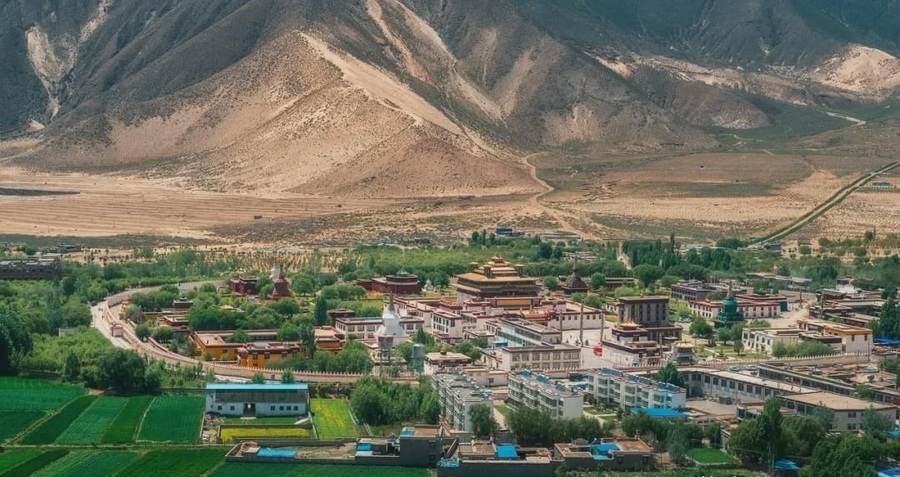
If you overlooked the whole view of Samye Temple from nearby mountains, you can see its beautiful structural layout, just like a three-dimensional mandala. This beautiful mandala standing in the real world allows people to understand the strict order of the Tibetan Buddhist worldview.
√ 5 Days Lhasa & Samye Monastery Tour
Chim-puk Valley
Chim-puk Valley is located on the side of Hapori Mountain, 15 miles northeast of Samye Monastery, with an average elevation of 4,300 meters. It is surrounded by mountains on three sides. The open area on the south side of the valley is directly opposite the broad Yarlung Zangbo Valley and the view is very impressive.
Because Chim-puk Valley is deep in the mountains and the streams are gurgling with dense vegetation, there's no severe cold in winter and no scorching heat in summer but mild climate throughout the year. This is probably the reason why many eminent monks and laymen have regarded this place as a sacred place for self-cultivation and enlightenment throughout the ages. The eminent monks such as Śāntarakṣita and Padmasambhava practiced here successively, leaving many sacred sites.
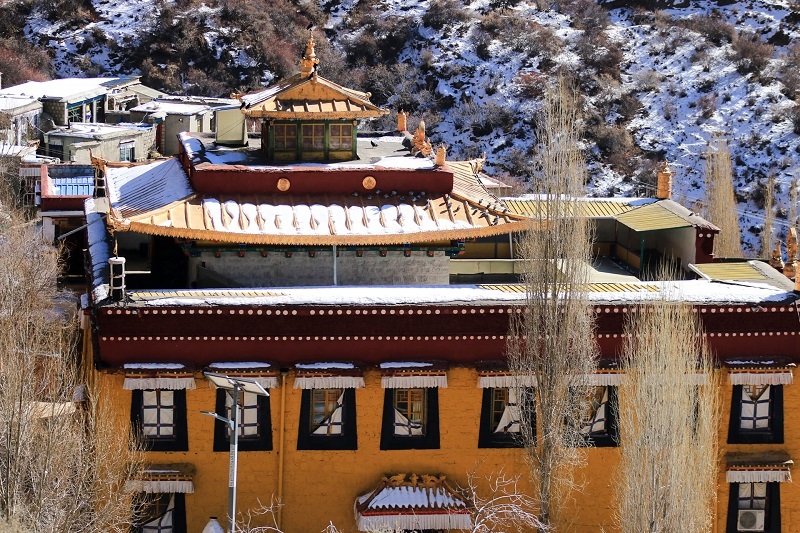
Tibetans believe Chim-puk is an important place. They think that only visiting Samye Monastery without going to Chim-puk is as if they have never been to Samye Monastery.
√ 7 Days Samye Chimpuk Tour
No.3: Shigatse, the Seat of the Panchen Lama
Shigatse, the second-largest city in Tibet, is about 300 kilometers away from Lhasa. It is the seat of the successive Panchen Lamas. The famous Tashilhunpo Monastery, Sakya Monastery, Pelkor Chode Monastery, Shalu Monastery, and many other temples constitute the dense religious culture of many sects.
There's beautiful natural scenery and rich cultural landscapes, such as the snow-capped mountains and ice peaks represented by Mount Everest, the beautiful virgin forest, the sacred mountains, holy lakes, and grasslands that complement each other, as well as the mysterious temples, and the unique cultural customs of Ü-Tsang, which make Shigatse a suitable destination for tourists who wish to go to Tibet for meditation.
Tashilhunpo Monastery
Tashilhunpo Monastery is located in the urban area of Shigatse. It's the resident place for successive Panchen Lamas since the fourth generation. The entire temple is built on the hillside, backed by mountains, and located in the North, facing the sun from the north. There are many temples in the complex, and they are connected one after another, with equal distances apart, appearing harmonious and symmetrical.
The worshippers can be seen everywhere, but they are very quiet. Their devotion to the Buddha is that no matter where they are, they will come to temples, sacred mountains, and holy lakes to fulfill their aspirations in this life.
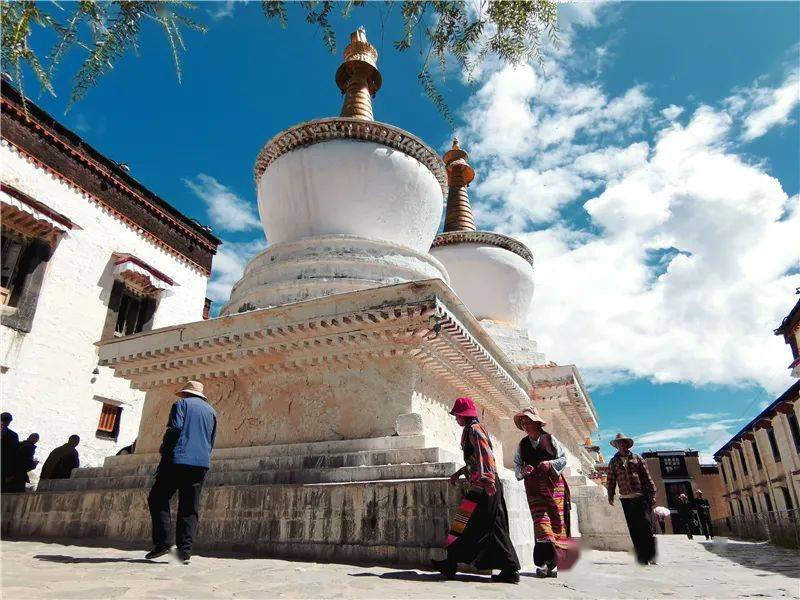
There is also a meditation place on the back mountain of Tashilhunpo Monastery where you can free up your mind. Stopping here for a while will make your body and soul sublimate.
√ 6 Days Lhasa Gyantse Shigatse Group Tour
Sakya Monastery
The Sakya Monastery is located at the foot of Benbo mountain, only 45 kilometers away from Shigatse City. It's the main monastery of the Sakya Sect of Tibetan Buddhism.
At the entrance of the temple, you will be attracted by the color of the outer wall of the monastery. The red symbolizing Manjushri, the white symbolizing Guanyin Bodhisattva, and the blue symbolizing the Vajra Bodhisattva. The three colors decorate the walls in harmony and unity.
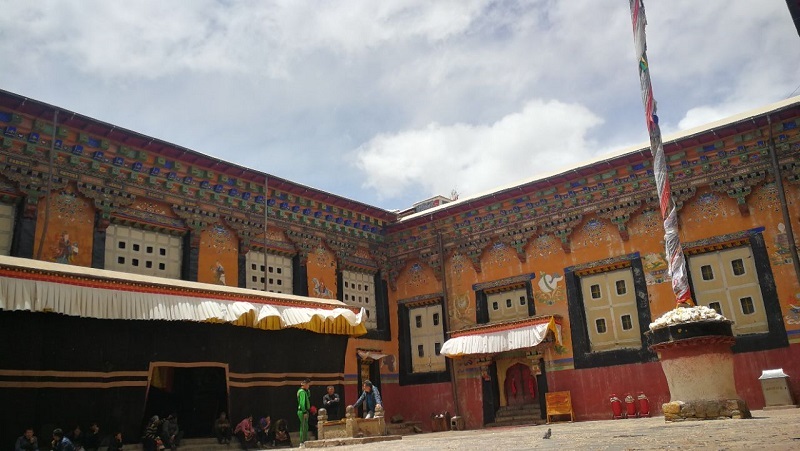
The most stunning feature of Sakya Monastery is its huge wall of scriptures. This wall is all made up of piles of scriptures one by one, about 9 meters high and more than 60 meters wide. Renowned as the monastery with most scriptures in Tibet and even the world, there're more than 84,000 scriptures. For a thousand years, generations of monks were writing Buddhist scriptures with gold, silver, and cinnabar powder or ink, using Sanskrit or Tibetan to translate, copy, and worship religiously.
Besides its scriptures, Sakya Monastery is also famous for Buddha statues and mural paintings. Here, you can clean yourself and let your impetuous soul slowly calm down. It is a good place to relieve stress and meditation.
√ 7 Days Lhasa Shigatse Everest Base Camp Sakya Tour
No.4: the Everest Region
Mount Everest in the Himalayas is the highest mountain in the world, with soaring heights, steep and uneven peaks, amazing valleys and alpine glaciers, in which you cannot help sighing that the world is big and we are so tiny beings, like dust.
This is a holy place for extreme sports enthusiasts, and it also attracts many meditation practices to come to the vicinity of Mount Everest, to experience the realm of being one with nature.
Rongbuk Monastery
Rongbuk Monastery is just next to the Everest Base Camp. The monstery is not very big, but it is the highest monastery in the world, at an altitude of 5145 meters above sea level.
The Rongbuk Monastery was set into a hillside. Around the monastery, there's a white pagoda, tall Mani stones, golden prayer wheels, and fluttering prayer flags, making the monastery spectacular, especially with the backdrop of Mount Everest not far away. The murals on the wall in Rongbuk Monastery are bright in color, soft in line, and clear and vivid for the characters. The sacred and solemn hall cannot help but let people hold their breath, and pray in piety.
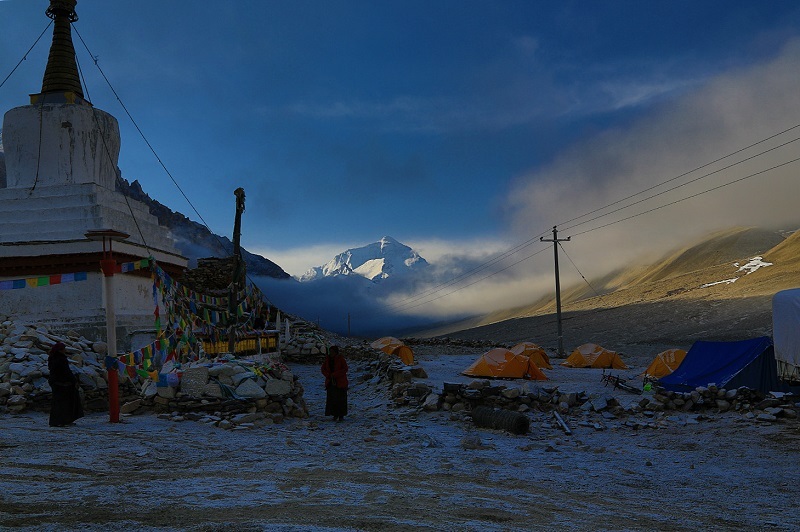
Three kilometers north of Rongbuk Monastery, there's a cave where Guru Padmasambhava ever practiced. Till today, you can still see the stones with the handprints and footprints of Padmasambhava as well as some stone pagodas.
√ 8 Days Lhasa to Everest Base Camp Group Tour
No.5: Ngari Area in West Tibet
The Ngari area is located in the core area of the Qiangtang Plateau, in the northern part of the Tibetan Plateau. It is one of the least densely populated areas in the world and has a unique plateau natural style. Ngari is also the place where the Himalayas, Gangdisi Mountains, and Kunlun Mountains converge, so it's called "the ancestor of ten thousand mountains."
Meanwhile, Ngari is a mysterious tour destination. There are not only holy mountains, sacred lakes, the most shocking yellow sand, and the blue sky, but also endless long roads ahead of you. It is a spiritual journey to sharpen the wits.
Mount Kailash and Lake Manasarovar
Mount Kailash and Lake Manasarovar can be the most profound holy places among all pilgrimage destinations, and they are regarded by many pilgrims as the peak experience in a lifetime.
The five major religions---Hinduism, Jainism, Buddhism, Sikhism, and Bon religion all recognize the sacred Mount Kailash and Lake Manasarovar as the center of the world, and countless myths and legends were passed down from here.
The first yogi Shiva, Buddha, and Jain Theerthankars(founder of Jainism) established a certain connection with Mount Kailash and Lake Manasarovar, which increased the sacredness and mystery of this place.
The lake surface of Manasarovar Lake is 4,588 meters above sea level and 20 kilometers away from Mount Kailash, known as the most beautiful and sacred lake in the world.
It is said that the holy lake nurtures the wish tree Kalpavriksha and Kalpavriksha is considered the source of all creation. The blue and emerald green water of the holy lake has a magical healing effect.
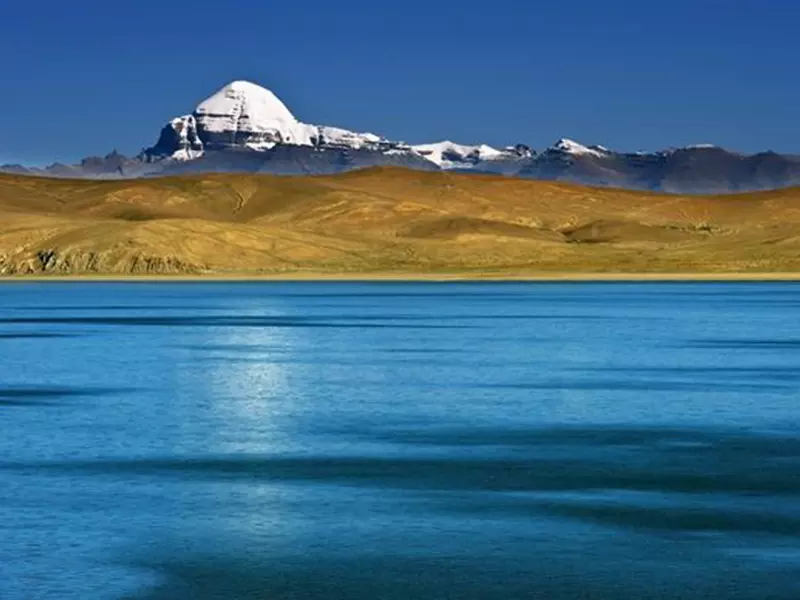
This area is very suitable for meditation tours. Hiking here is not just a journey, and it is the ultimate expression of pilgrims' pursuit of enlightenment. Doing a kora around Mount Kailash or Manasarovar, you can achieve deep spiritual transformation, absorb the power and energy contained in this holy land, and step into higher dimensions of life, especially when you follow an enlightened master, every step you take will be firmer, stronger, and clearer.
√ 15 Days Mt.Everest & Mt.Kailash Kora Pilgrimage Group Tour
Pangong Tso
Pangong Tso is located on the border of the Ngari region. In Tibetan, it means "bright and narrow lake". One part of the lake is in Ngari, and the other part is in India. The most peculiar thing about Pangong Lake is that it is fresh water on the Chinese side but saltwater on the Indian side. The morning sun shines on the mountains by the lake, showing golden yellow and gleaming, but the surface of the lake is quite blue.
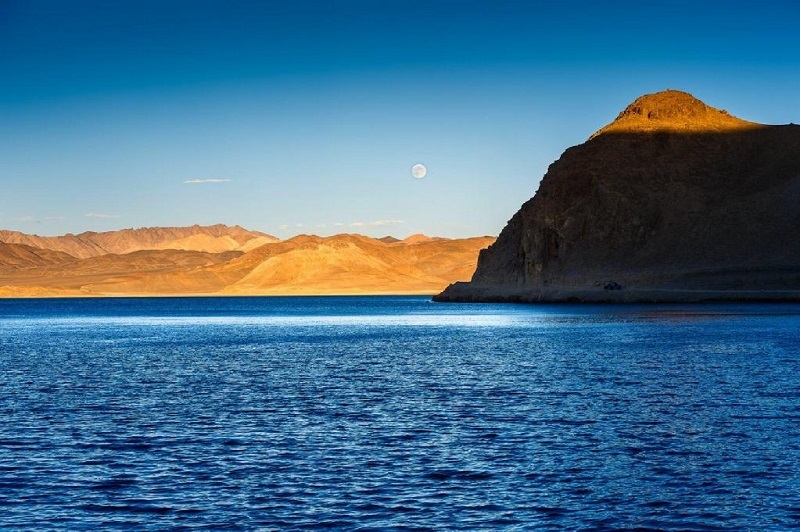
The surrounding scenery of Pangong Tso Lake is beautiful. The lake is embraced by mountains, with snow on the mountain tops in distance. The water is clear and has a visibility of 3 to 5 meters. Due to factors such as light, depth, and brightness, it presents different colors such as dark green, light green, and dark blue, which are very beautiful. At night, the sky above is starry, and the wide lake reflects the sky, quiet and deep. So the night scene also has a different charm. A dozen islands of various sizes sit in the lake, with about 20 species of birds on the islands. Here is a paradise for birds and animals.
Meditating in such a peaceful and serene place, all your worries will become a let-down emptiness in the sky.
√ 19 Days Mt. Everest & Ngari Off-The-Beaten-Path Tour
Related Articles
Nepal Bhutan Tibet Travel Map Nepal, Bhutan and Tibet are distributed on the south and north sides of the Himalayas, sharing the beautiful scenery. Here're detailed travel maps.
What to Pack for Mount Kailash Trekking Tour? What to pack for your Mt.Kailash trekking tour? You don't have to carry all the items for the 3-day Kailash trek. Here's the list you might need.
Tibetan Plateau - The World's Highest Plateau Tibetan Plateau is the world's highest plateau, known as the "roof of the world". Most areas are located in western China, and part of Kashmir.
Sichuan Tibet Highway - Southern and Northern Routes Sichuan Tibet Highway includes the Northern and Southern routes. Most people choose the southern route as it's the most scenic part of G318.
How to Travel to Tibet from Germany? German travelers can travel to Tibet from Frankfurt to Beijing, Chengdu, etc., and then get to Tibet by flight or train. Or travel to Tibet via Kathmandu.
The 10 Greatest Trekking in Tibet Trekking in Tibet provides a unique and closer encounter with the natural beauty and spirituality of Tibet. Check out the greatest hikes that await you.
Kailash Mansarovar Yatra: Once in A Lifetime Experience Kailash Mansarovar is a pilgrimage site nestled in the Himalayas in Tibet. Over the years, Yatris across the world come to witness its mystical beauty.
Travel to Tibet from United States For US citizens, you can travel to Tibet via mainland China or Nepal. You need to apply for China Visa or China Group Visa and obtain your Tibet visa prior.
How to Get to Tibet? You can travel to Tibet by flight, train, or road from China OR by flight or road from Nepal. The best way depends on your place of departure and travel plans.
A Quick Guide to Tibet Currency and Money How to refer to Tibet money? The official name of Tibet currency is Renminbi. Check info about currency exchange and international transfers in Tibet.
Email response within 0.5~24 hours.
Typically Asked Questions from Our Clients
Asked by Jami***
Hello, I was searching for answers and peace within my soul. I think I am going through some sort of spiritual awakening, but I have a very cynical mind and tend to question everything. I though spiritual retreat where I could stay in the monastery, experience, learn and being guided by the monks in order to understand and trust in the spirituality concept might be very healing and enable my journey of soul searching. Reading through the options I am attracted to option 1, in and out of Lhasa, however I am open minded for the suggestions. Could you please let me know what do you think and costs?

Dear Jami****,
We can arrange a meditation tour for you. However, guests are not allowed to stay overnight in the monastery and we are not able to arrange the monks to guide you. You can stay in the monastery or the cave during the daytime to do meditation. What's your idea?
I recommend 5 days Lhasa & Ganden Monastery Tour for you. Here is the itinerary. If you agree, I'll quote you in my next email. Let me know your preferred hotel class. Thanks.
Asked by Kary***
Hi, I am looking for a meditation immersion tour in Tibet, preferably in a Monastery. I would like to know if any of your tours offer it, or if you know any company that does.

Dear Karym****,
We can arrange a meditation immersion tour in Tibet for you in May 2024. For the monastery to meditate, I suggest Drak Yerpa Monastery.
Drak Yerpa Monastery is one of the four major meditation retreats in Tibet. It was built in the 7th century and has a history of 1,500 years. Located about 20 kilometers northeast of Lhasa, it belongs to Dazi County. There are many caves for practice in the mountains, and the temple was built on the basis of these caves. The caves include Dharma Cave where the King Songtsen Gampo practiced, the Moon Cave where the Padmasambhava practiced, the Lhalung Cave where the Lhalung Palkyi Dorje who assassinated the last Tubo Emperor practiced, the Patriarch Cave where the Atisha practiced, etc. This is a highly recommended place for meditation tours.
Asked by Kris***
Hi, I'd like to attend a meditation retreat in Tibet or a combination of sightseeing and several days of meditation (full on day would be the best). Time to visit would be from September 29th to Sep. 7th.
Dear Kris****,
Thank you for sending us an inquiry!
As per your request, we can arrange a Tibet tour with a meditation retreat for you. However, is your tour date from 7 September to 29 September or from 29 September to 7 October? I can recommend the tour accordingly!
Asked by Anna***
Hello.. I am wanting to find a retreat for the purpose of finding peace and meditiation for onger than 1 day. I am a solo traveller older (57) but young for my age and fit. I Desperately need to find some spiritual nurturing. I have always wanted to visit Tibet and i think the time has come, my soul is calling out for it. what suggestions would you have in and around Lhasa.
Dear Anna****,;
As per your request, we can arrange 5 days Tibet tour with meditation retreats for you.
Here is the itinerary for your reference. If you agree, I'll quote you in my next email. Let me know your preferred hotel class. Thanks.
If you have any further questions or doubts, please let me know without hesitation. It is my pleasure to work with you at any time.
Asked by Juli***
Hello, I'm looking for spiritual experience where I can stay at one of the monasteries in Lhasa and learn meditation from one of the Buddhist monk. I would also like to visit lake Namtso for a day or so. Do you have any tour like that? If so, I'll be traveling from the US, what type of permit or visa do I need to obtain? Thank you!

For your monastery tour, you can't stay overnight at any of the monasteries, according to the local policy. You may visit monasteries in the daytime and return back to your hotel at night. To learn meditation, we can arrange a related training course for you in Lhasa, and under the company of your guide, you may communicate with some monks. Not all monks are majoring in meditation, as there're many sects of Tibetan Buddhism. For touring Namtso Lake, we can arrange for you. If you are traveling alone, I suggest you join our group tour to save costs:)
Read More ...
Sign up for our newsletter below. It's a great way to stay in touch with us and receive great news when we have them ready for you.
- Favorites 0
- [email protected]
- Newsletter signup

Great Tibet Tour is a local tour company based in Lhasa, Tibet. It was founded in 2005 and recommended by Lonely Planet as one of the best reputed local Tibet travel agencies.
With the great responsibility, professional know-how and passion for innovation, Great Tibet Tour endeavors to provide you with enjoyable, thoughtful service, and authentic culture discovery.

- Heritage & Culture
5 Destinations For A Tibet Spiritual Retreat Where You Can Connect With Yourself

These destinations for a Tibet spiritual retreat take you through the meditative calm of the Himalayan lakes, beautiful Buddhist monasteries, palaces and temples. Their serenity, and scenic beauty are sure awake spirituality in anyone exploring Tibet, the culture that upholds peace and tolerance.
Note that there are no direct long-haul flights to Tibet. You will have to transfer to Lhasa from Kathmandu or Beijing. Visit the Tibet Autonomous Region is restricted for non-Chinese and Taiwan citizens. Foreign tourists need the Tibet Entry Permit. Independent travel is also not allowed, and visitors must be accompanied by a licensed tour guide at all times.
1. Lake Manasarovar

Lake Manasarovar is fed by the Glaciers of Mount Kailash. According to Hindu Mythology, the lake is the epitome of purity. This freshwater lake is a pilgrimage site for Hindus and other religions, and part of the Tibet spiritual retreat. It is located 15,060 ft above sea level.

Lhasa is the administrative capital of the Tibet Autonomous Region of China. The city features many beautiful monasteries, including Drepung Monastery and the popular Jokhang temple.
Its famous Potala Palace used to be the residence of the Dalai Lama until the uprising of 1959. The palace now serves as a museum and World Heritage Site since the 14th Dalai Lama, Tenzin Gyatso, fled to exile in India at the outset of the Tibetan uprising. Yerpa, located to the east of Lhasa has more monasteries and meditation caves.
3. Mount Kailash

The Sacred Mount Kailash dominated the Tibetan landscape. It is a pilgrimage site for Hindus, Buddhists, Bon, and Jainis. Devotees walk 53 kilometres around the mountain (Kailash Parikrama). Located in the foothills is the town of Darchen where you can spend the night. In Hindu mythology,, it is associated with the god Shiva, and is also known as Mount Meru.
4. Pangong Tso

Tibetan for “high grassland lake,” Pangong Tso, or Pangong Lake is located on the border between India and China. Despite being salty, the waters completely freeze over each winter. The lake is a popular film location; it has been featured in 3 Idiots, Dil Se, Jab Tak Hain Jaan and more. Boating is not allowed, but you can get inner line permits issued by Leh tourism board to enjoy views of this serene beauty The best time to visit is during May to September.
5. Namtso Lake
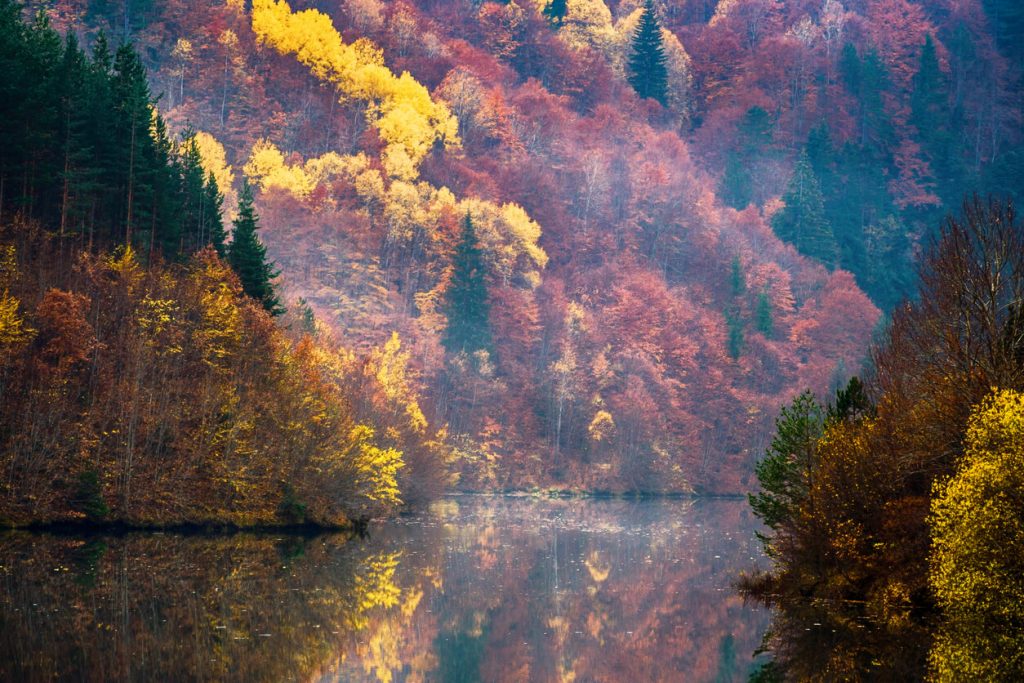
Namsto is a Tibetan word for heavenly, and this mountain lake is known as the most picturesque place in the Nyenchen Tanglha Mountain ranges. Pilgrims used to stay in the small islands of Namsto for a Tibet spiritual retreat. It is situated between the Damxung County of Lhasa and the Bango County of Nagqu region.
Tibet has many other places to explore. It is also the perfect place to go on your soul searching journey .
LEAVE A REPLY Cancel reply
Save my name, email, and website in this browser for the next time I comment.
Unveiling the wonders of culture and tradition!

Are you ready to embark on a journey filled with adventure, culture, tradition, and exciting attractions? Let your explorer's spirit soar and make unforgettable memories as you explore the beauty of our diverse world.

- Top 5 Tibet Tours
- Mt.Everest Adventures
- Cultural & Spiritual Tour
- Tibet Mt.Kailash Tours
- China Tibet Train Tours
- Tibet Trekking Adventures
- Overland Journeys
- Motorbike And Mountain Bike Tours
- Tibet Day Tours
- Tibet Winter tour
- Customise A Tour
- 4 Days Tibet Lhasa Tour Package
- 6 Days Tibet Culture Tour
- 8 Days Lhasa to Kathmandu Overland Tour
- 8 Days Tibet Everest base Camp Group Tour
- 10 Days Easy Acclimatizing Tibet Everest base Camp Tour
- 15 Days Kailash Mansarovar Tour
- Tibet Group Visa & Tibet Permits
- Tibet Travel Permit Online Application
- Tibet Group Visa vs Chinese Visa
- 5 Countries That No Require China Visa to Get Tibet Permit
- Important Tips to Apply the Tibet Group Visa
- How to get to Tibet?
- Tips to avoid high altitude sickness problem in Tibet tour
- Flights to Tibet
- 2024 Tibet Train Ticket Booking
- Hotels and Guesthouses in Tibet
- Meals and Restaurants in Tibet
- How to Plan Tibet Tour
- Health and Safety Guide
- Tibet Travel Maps
- Etiquette & Taboo in Tibet
- Tibet Attractions
- Tibet Travel Packing List
- Tibet Trekking Guide
- Tibetan Buddhism
- Tibet Weather & Climate
- Tibetan Culture & Arts
- Tibetan History
- Why Tibet Group Tours
- 2024 Tibet Festival Calendar
- Monasteries in Tibet
- Transportation in Tibet
- Clients Feedback
- Video Feedback
- Clients Travel Stories
- Why Travel With Us
- Our Community Projects
- We Are Highly Recommended By
- Our Staff Community
- Tibet Responsible Travel
- Privacy Policy
- +86-13398000993(Lhasa)
- [email protected]

- About Tibet

Tibet Tour: Discover the Spiritual Side of the Tibet
Tibet holds great spiritual significance for many people around the world. The region is known for its rich spiritual traditions and practices, which have been passed down through generations. Tibet is home to numerous monasteries, temples, and sacred sites that attract pilgrims and spiritual seekers from all over the globe.

Mount Kailash
Table of Contents
Introduction to Tibet’s spiritual significance
One of the most well-known aspects of Tibetan spirituality is Tibetan Buddhism , which plays a central role in the lives of many Tibetans. The spiritual leader of Tibetan Buddhism has long been a symbol of peace and compassion, and his teachings have inspired millions of people worldwide.
In addition to Tibetan Buddhism, Tibet is also home to other spiritual traditions, such as Bon, which predates Buddhism in the region. Bon incorporates shamanic practices and focuses on the balance between the physical and spiritual worlds.
The landscape of Tibet itself is often seen as a reflection of its spiritual significance. The towering Himalayas, vast grasslands, and serene lakes create a sense of awe and wonder that is often associated with the divine. Many sacred sites, such as Mount Kailash and Lake Namtso, are believed to be places of great spiritual power.
For those seeking a deeper connection with their spirituality, a journey to Tibet can be a transformative experience. The peacefulness and serenity of the region, combined with the presence of ancient spiritual traditions, create an environment conducive to introspection and self-discovery.
Overall, Tibet’s spiritual significance lies in its ability to inspire and uplift those who visit. Whether it’s through the teachings of Tibetan Buddhism, the ancient practices of Bon, or the natural beauty of the landscape, Tibet offers a unique and profound spiritual experience for all who seek it.

Overview of Tibetan Buddhism
Tibetan Buddhism is the dominant religion in Tibet , and it holds a significant influence on the cultural and spiritual aspects of the region. It is a unique form of Buddhism that incorporates elements of Buddhism, Bon, the indigenous religion of Tibet, and local beliefs. This rich mixture of influences has shaped Tibetan Buddhism into a distinct and vibrant tradition.
One of the notable features of Tibetan Buddhism is the presence of key figures who hold important roles within the religion. The Lama, who is considered to be the spiritual leader of Tibetan Buddhism, is highly revered and holds great influence over its followers. He is believed to be the incarnation of Avalokiteshvara, a Bodhisattva known for his compassion. Another important figure is the Panchen Lama, who is considered to be the second highest-ranking spiritual leader in Tibetan Buddhism.
In addition to its spiritual practices and teachings, Tibetan Buddhism is also known for its unique rituals and practices. These may include chanting, meditation, and elaborate ceremonies that are performed to promote spiritual growth and enlightenment. Tibetan Buddhist monasteries are also an integral part of the tradition, serving as centers for study, meditation, and religious practice.
Overall, Tibetan Buddhism is a fascinating and deeply rooted tradition that encompasses not only religious beliefs and practices but also cultural and historical elements. Its teachings of compassion, wisdom, and mindfulness continue to inspire and resonate with people around the world.
Exploration of Tibetan monasteries
Tibetan monasteries are not only places of worship but also serve as centers for spiritual learning and practice. These monasteries hold great significance in Tibetan Buddhism and attract visitors from all over the world. One of the most famous Tibetan monasteries is the Potala Palace, located in Lhasa. This magnificent palace is a UNESCO World Heritage site and was the winter residence of the Dalai Lama. Its architectural grandeur and intricate designs are awe-inspiring, reflecting the rich Tibetan culture and heritage.
Another notable Tibetan monastery is the Tashilhunpo Monastery, located in Shigatse. It is the seat of the Panchen Lama, the second-highest spiritual leader in Tibetan Buddhism. The monastery’s architecture is a blend of Tibetan and Nepalese styles, with colorful murals and statues adorning its halls. Tashilhunpo Monastery is also known for its vibrant festivals and rituals, attracting pilgrims and tourists alike.

Potala Palace in Lhasa
The Jokhang Temple, situated in the heart of Lhasa , is another significant Tibetan monastery. It is considered one of the holiest sites in Tibetan Buddhism and houses a precious statue of Buddha. The temple’s architecture showcases a mix of Tibetan, Nepalese, and Indian influences, making it a true masterpiece. Pilgrims come from far and wide to perform kora (circumambulation) around the temple, praying for blessings and enlightenment.
In addition to their architectural beauty, these monasteries are centers for religious rituals and practices. Monks and nuns devote their lives to studying Buddhist scriptures, meditating, and performing sacred ceremonies. These rituals often include chanting, prayer wheels, and prostrations, creating a serene and spiritual atmosphere within the monasteries.
The significance of Tibetan monasteries goes beyond their religious importance. They play a vital role in preserving Tibetan culture and traditions. The monasteries act as educational institutions, passing down ancient knowledge and wisdom to future generations. They also serve as community centers, providing support and assistance to the local population.
Exploring Tibetan monasteries offers a unique opportunity to delve into the rich spiritual and cultural heritage of Tibet. From the intricate architecture to the profound rituals, these monasteries leave a lasting impression on visitors and provide a deeper understanding of Tibetan Buddhism.

Jokhang Temple in Lhasa
Pilgrimage sites in Tibet
Tibet is home to some of the most revered pilgrimage sites in the world, attracting thousands of religious devotees and spiritual seekers each year. One of the most famous destinations is Mount Kailash, believed to be the abode of Lord Shiva in Hinduism and a sacred site for Buddhists, Jains, and Bon followers as well. The mountain’s majestic presence and remote location make it a challenging but rewarding pilgrimage for those seeking spiritual enlightenment.
Lake Manasarovar, located near Mount Kailash, is another important pilgrimage site in Tibet. Known as the “mother of all lakes,” it is believed to possess extraordinary spiritual power. Pilgrims often perform ritual circumambulation (known as kora) around the lake, praying for blessings and purification. The crystal-clear waters and serene surroundings create a tranquil atmosphere conducive to deep reflection and meditation.
The spiritual significance of these pilgrimage sites goes beyond their natural beauty. Every aspect of the journey, from the arduous trek to the rituals performed along the way, holds deep meaning for pilgrims. Many believe that by undertaking this pilgrimage, they can cleanse their sins, accumulate merit, and attain spiritual liberation.
Namtso Lake in Tibet
The rituals associated with these sites vary depending on the religious tradition. Hindu pilgrims perform parikrama (circumambulation) around Mount Kailash, while Buddhists follow a similar practice known as korawa. These rituals involve walking in a clockwise direction around the sacred sites, often accompanied by chanting prayers or mantras.
For many pilgrims, the journey itself is as important as reaching the destination. They endure physical hardships and face personal challenges, all in pursuit of spiritual growth and enlightenment. The sense of community and shared purpose among fellow pilgrims adds to the overall experience, fostering a deep sense of connection and devotion.
Visiting these pilgrimage sites in Tibet is not just a religious or spiritual endeavor; it is an opportunity to immerse oneself in the rich culture, history, and natural beauty of the region. The stunning landscapes, ancient monasteries, and vibrant traditions make Tibet an extraordinary destination for anyone seeking a profound and transformative pilgrimage experience.

Mount Kailash is one of the most sacred pilgrimage sites in Tibet
Tibetan festivals and rituals
Tibetan festivals and rituals hold a significant place in Tibetan culture and spirituality. One of the most important festivals is Losar, which marks the Tibetan New Year. It is celebrated with great enthusiasm and lasts for 15 days. During Losar, families come together to clean and decorate their homes, offer prayers, and perform rituals to bring good fortune for the upcoming year. Traditional dances, music, and colorful costumes are also a part of the festivities.
Another significant festival is Saga Dawa, which commemorates the birth, enlightenment, and passing away of Gautama Buddha. It is considered a very sacred time for Tibetans and is observed with various rituals and religious ceremonies. Pilgrimages to holy sites like Mount Kailash and Lhasa are common during Saga Dawa.

During these festivals, Tibetans also engage in various rituals and traditions. Prayer flags are hung throughout the region, symbolizing good luck and spreading positive energy. Butter lamps are lit in monasteries, symbolizing the dispelling of darkness and ignorance. Prostrations, chanting of mantras, and offerings to deities are also common practices during these celebrations.
These festivals hold immense importance in Tibetan spirituality. They are seen as opportunities for spiritual purification, renewal, and strengthening of faith. They provide Tibetans with a sense of community and unity as they come together to celebrate their shared culture and faith. The rituals performed during these festivals are believed to bring blessings, peace, and prosperity to individuals and the entire community.
Tibetan festivals and rituals are not only a celebration of cultural heritage but also a way to deepen their spiritual connection. They serve as reminders of the importance of faith, compassion, and mindfulness in their daily lives. These celebrations continue to be cherished and passed down through generations, keeping the rich Tibetan traditions alive.

Festival in Tibet
Preservation of Tibetan spiritual traditions
The preservation of Tibetan spiritual traditions is of great importance to many individuals and communities around the world. There is huge support from the government of China. Tibetan Buddhism is known for its rich and ancient teachings, which have been passed down through generations. These teachings offer valuable insights into the nature of the mind, compassion, and the interconnectedness of all beings.
One way to preserve Tibetan spiritual traditions is through the practice and study of Buddhism. Individuals can engage in meditation, prayer, and ritual practices to deepen their understanding and experience of these traditions. By dedicating time and effort to this practice, individuals contribute to the preservation and continuation of these ancient teachings.
Additionally, supporting Tibetan monasteries, nunneries, and cultural institutions is crucial in preserving Tibetan spiritual traditions. These institutions serve as centers for learning, meditation, and community gatherings. By providing financial support, individuals can help maintain these vital spaces for the practice and transmission of Tibetan Buddhist teachings.
Furthermore, raising awareness about Tibetan spiritual traditions is an essential aspect of preservation. Sharing knowledge about the history, philosophy, and practices of Tibetan Buddhism can help foster appreciation and understanding among people from different cultures and backgrounds. This can be done through educational programs, workshops, lectures, and cultural events.
The preservation of Tibetan spiritual traditions requires active participation from individuals, support for institutions, raising awareness, and advocating for the protection of Tibetan cultural heritage. By engaging in these efforts, we can contribute to the continuity and vibrancy of these ancient teachings.
Tibet is known for its rich spiritual practices and traditions, which hold significant meaning for both the people of Tibet and visitors alike. These practices, such as Tibetan Buddhism, meditation, and mindfulness, have been passed down through generations and are deeply ingrained in the culture.
They provide a spiritual foundation for individuals to connect with themselves, others, and the world around them. Exploring the spiritual side of Tibet can be a transformative experience, as it offers a chance to delve into the depths of one’s own consciousness and gain a deeper understanding of the universe.
By immersing oneself in the rituals, teachings, and practices of Tibetan spirituality, one can find inner peace, clarity, and a sense of purpose. It is an opportunity to let go of external distractions and embark on a journey of self-discovery and personal growth. So, I encourage readers to embrace the opportunity to learn about and explore the spiritual side of Tibet, as it has the power to truly transform their lives.

- Share This Post:
Recent Posts

The Best Tibet Tours for Every Adventurer

10 Must-Visit Destinations for Every Traveler

Exploring Tibet by Train
All categories.
- book a Tibet tour
- Buddhism Practice
- Budget Tour
- China-Tibet Train
- Customized Tibet tour
- Historical Sites
- Hot Springs in Tibet
- Photography in Tibet
- Tibet attraction
- Tibet Group Visa
- Tibet Motorcycle Tour
- Tibet Small Group Tours
- Tibet Tours and Tibetan Tour Guide
- Tibet Train
- Tibet Travel FAQs
- Tibet Travel Information
- Tibet Travel News
- Tibet Travel Permit Update
- Tibet Travel Prices Rises
- Tibet Trekking Tour
- Tibet weather and climate
- Tibet Wildlife animals
- Tibet Winter Tour
- Tibetan Cultural Features
- Tibetan Culture and Poeple
- Tibetan Festivals
- What to see in Tibet
Reset Password
- Mon. Apr 8th, 2024
TIBET JOURNEY QUEST
Eight Days Of Enlightenment: A Spiritual Journey Through Tibet
“Eight Days of Enlightenment: A Spiritual Journey Through Tibet” is a captivating account of a life-changing spiritual journey undertaken by the author in the mystical land of Tibet. The book takes readers on an immersive journey through the stunning landscapes, ancient monasteries, and profound teachings of Tibetan Buddhism.
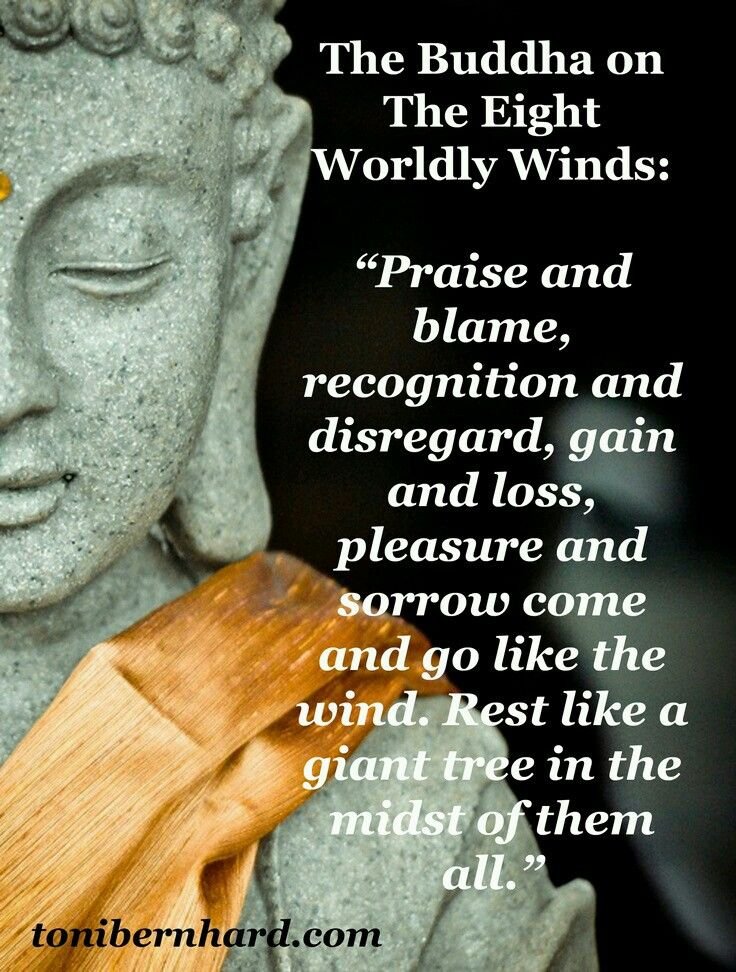
The author embarks on an eight-day pilgrimage to explore the sacred sites and teachings of Tibet, seeking a deeper understanding of spirituality and a connection with the divine. As they progress through the journey, they encounter wise teachers, engage in deep meditation practices, and witness awe-inspiring sights that challenge their preconceived notions and open their hearts to new possibilities.
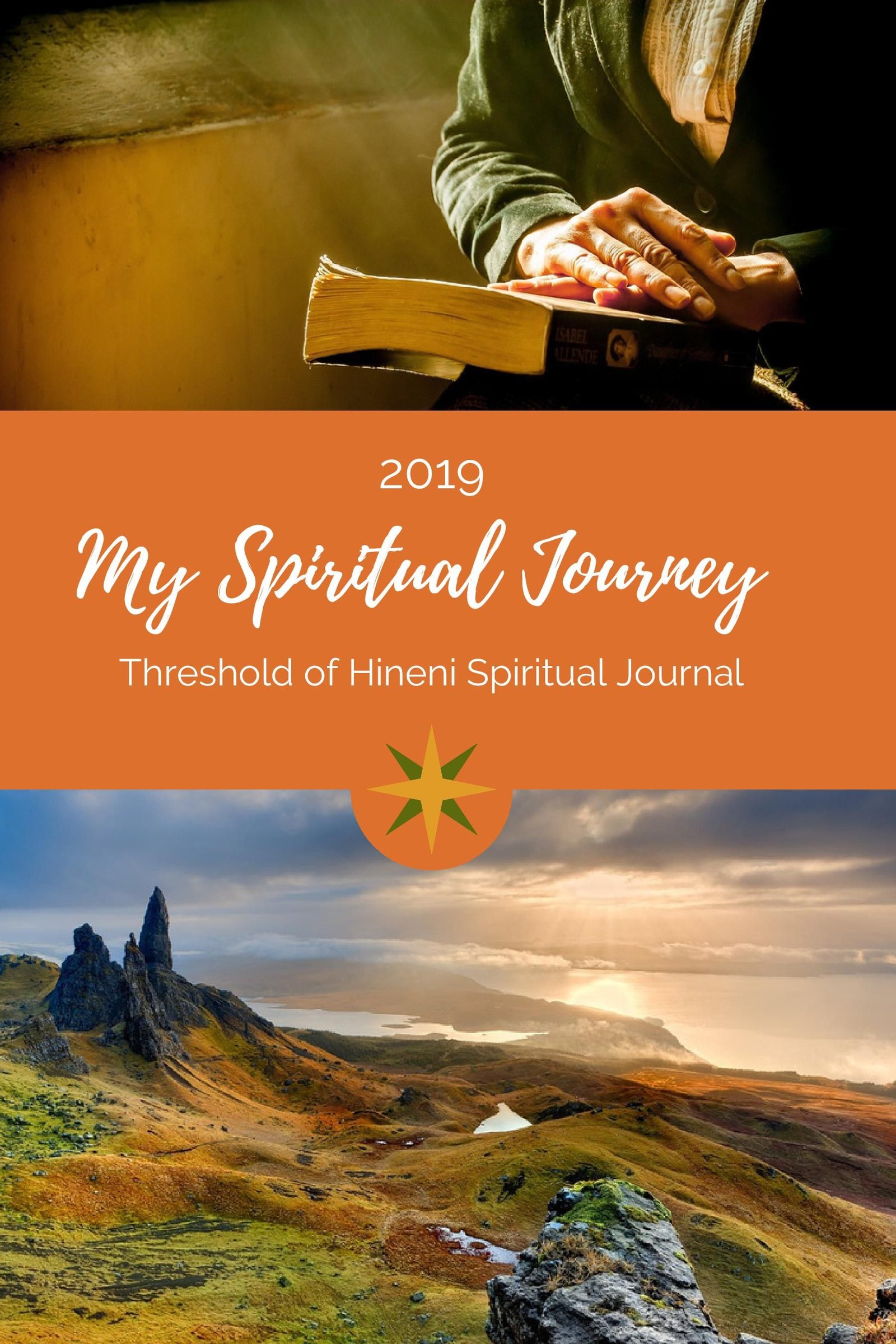
The book delves into the rich history and traditions of Tibetan Buddhism, shedding light on its unique practices, rituals, and beliefs. Readers are introduced to the profound teachings of compassion, non-attachment, and the interconnectedness of all beings. The author’s personal reflections and introspections provide a deeply intimate and authentic perspective on the transformative power of spiritual practices.
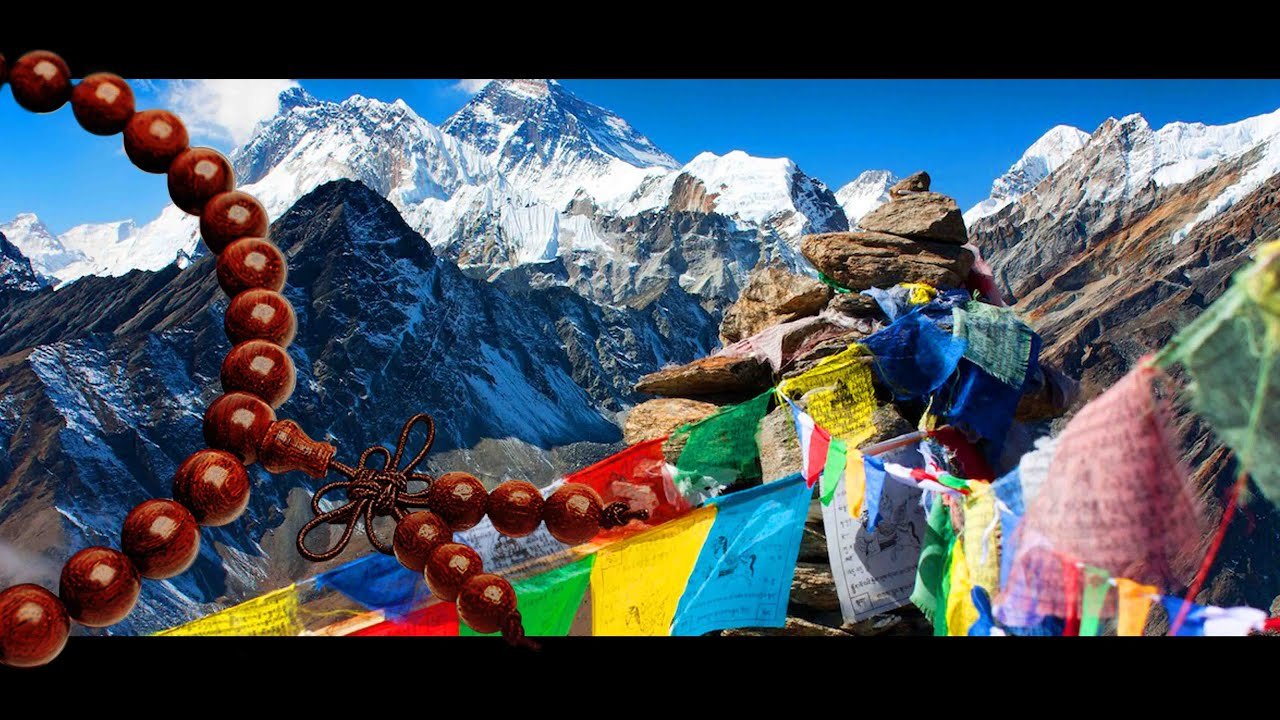
“Eight Days of Enlightenment” is a spiritual travelogue that takes readers on an inspiring odyssey of self-discovery and spiritual awakening. It explores the timeless wisdom of Tibetan Buddhism and its relevance to modern life. Through vivid imagery, heartfelt storytelling, and insightful reflections, the book offers valuable lessons on finding inner peace, living with intention, and cultivating a deeper connection with the universe.
The journey through Tibet becomes a metaphor for the journey within, inviting readers to embark on their own spiritual odyssey. The author’s experiences serve as a guiding light, illuminating the path towards personal transformation and enlightenment. With each day of the pilgrimage, they delve deeper into the profound teachings of Tibetan Buddhism, unlocking hidden truths and gaining a fresh perspective on life, death, and the nature of reality.
Ultimately, “Eight Days of Enlightenment” is a celebration of the human spirit’s capacity for spiritual growth and transformation. It reminds readers of the limitless potential that lies within each of us and inspires them to embark on their own unique journey of self-discovery and enlightenment.# Eight Days of Enlightenment: A Spiritual Journey Through Tibet
Executive Summary
This article provides an in-depth exploration of an eight-day spiritual journey through Tibet, a land steeped in rich history, ancient wisdom, and profound spiritual practices. Through detailed descriptions and captivating storytelling, the article unravels the transformative experiences and profound insights gained during this journey, including encounters with revered spiritual masters, visits to sacred sites, and participation in traditional ceremonies. The article highlights the diverse aspects of Tibetan spirituality, encompassing meditation, mindfulness, compassion, and the pursuit of inner peace, offering readers a glimpse into the profound wisdom and transformative power of this ancient tradition.
Introduction
Nestled in the heart of the Himalayas, Tibet is a place of breathtaking beauty and profound spiritual significance. For centuries, it has been a sacred land, home to a rich tradition of Buddhism and a culture deeply rooted in spirituality. This article invites you on an extraordinary eight-day journey through Tibet, a pilgrimage that promises to awaken your spirit, expand your consciousness, and leave you forever transformed. As you traverse through mystical landscapes, encounter wise spiritual teachers, and immerse yourself in ancient rituals, you will discover the transformative power of Tibetan spirituality and return home with a renewed sense of purpose and inner peace.
Unveiling the Sacred: Exploring Tibet’s Spiritual Treasures
- The Heart of Tibetan Spirituality: Lhasa and Its Sacred Sites
- Lhasa, the capital of Tibet, is a city of immense spiritual significance, home to the revered Potala Palace and the Jokhang Temple.
- The Potala Palace, a UNESCO World Heritage Site, was the traditional residence of the Dalai Lama and remains a symbol of Tibetan Buddhism.
- The Jokhang Temple, one of the holiest sites in Tibet, houses the sacred statue of Jowo Shakyamuni, the Buddha of Compassion.
- The Wisdom of the Masters: Encounters with Tibetan Lamas
- Tibetan lamas, or spiritual masters, are renowned for their profound wisdom and compassion.
- Through teachings, blessings, and personal interactions, these masters guide seekers on their spiritual journeys.
- Their teachings encompass meditation, mindfulness, and the cultivation of compassion and wisdom.
- Sacred Ceremonies and Rituals: Connecting with Tibetan Traditions
- Tibetan spiritual practices include elaborate ceremonies, rituals, and festivals.
- These practices, deeply rooted in Buddhist teachings, aim to purify the mind, cultivate compassion, and connect with the divine.
- Participation in these rituals offers a profound opportunity to immerse oneself in the heart of Tibetan spirituality.
- The Himalayas: A Sacred Landscape for Contemplation
- The Himalayas, with their towering peaks and pristine landscapes, are considered sacred in Tibetan culture.
- Many spiritual seekers embark on pilgrimages to Mount Kailash, a sacred mountain revered by Hindus, Buddhists, and Jains.
- The beauty and grandeur of the Himalayas create a conducive environment for meditation, contemplation, and spiritual growth.
- The Art of Tibetan Buddhism: Thangkas and Mandalas
- Tibetan art, particularly thangkas (painted scrolls) and mandalas (sacred diagrams), plays a significant role in spiritual practice.
- Thangkas depict deities, bodhisattvas, and sacred scenes, serving as objects of devotion and meditation.
- Mandalas, with their intricate designs and vibrant colors, represent the universe and are used for meditation and contemplation.
This eight-day spiritual journey through Tibet is a transformative experience that offers a profound exploration of Tibetan spirituality. From encountering revered spiritual masters to participating in sacred ceremonies, from traversing stunning landscapes to contemplating ancient wisdom, this journey promises to awaken your spirit, expand your consciousness, and leave you forever transformed. Tibet is a land of profound spiritual significance, where ancient wisdom and transformative teachings await those willing to embark on a journey of self-discovery and enlightenment.
Keyword Phrase Tags
- Spiritual Journey Through Tibet
- Tibetan Spirituality
- Sacred Sites in Tibet
- Tibetan Lamas
- Tibetan Ceremonies and Rituals
Related Post
Join the adventure: group tours across tibet, stay informed: latest booking updates for your tibet journey, expert planning for your dream tibet tour: a travel agency’s guide, tibetan trilogy: lhasa, namtso, and gyantse tour, the ultimate expedition: 10-day lhasa, ebc, and namtso tour, discover the hidden gems of tibet: tour 4323 unveiled, by rail through the roof of the world: the tibet train journey.
7 Days in Tibet: A Journey of Tranquility and Spiritual Exploration
7 Days in Tibet: Are you a first-time international visitor with a desire to embark on a journey that combines tranquility, spirituality, and breathtaking landscapes? Look no further than Tibet, a mystical region nestled high in the Himalayas. In this guide, we will take you on a memorable adventure through the land of snow, sharing essential tips and captivating destinations to make your 7-day Tibetan experience truly unforgettable.
Introduction
Welcome to the “ Roof of the World “! Tibet, also known as the “Land of the Snows,” offers a unique blend of natural beauty, rich cultural heritage, and deep spiritual significance. As a first-time visitor, you’ll be amazed by the region’s awe-inspiring landscapes, ancient monasteries, vibrant festivals, and warm-hearted locals.
Getting to Tibet
Before embarking on your journey, it’s important to plan your entry into Tibet. There are two primary options: flying directly into Lhasa, the capital of Tibet, or taking an overland route from neighboring provinces. Flying offers convenience and allows you to acclimatize to the high altitude gradually. If you prefer a scenic route, consider the overland options, such as the world-famous Qinghai-Tibet Railway or the epic Sichuan-Tibet Highway.
Tibet Travel Permits and Visa
To visit Tibet, you’ll need to obtain the necessary permits and a Chinese visa. The Tibet Travel Permit is a must and can be obtained through a registered travel agency in Tibet. Additionally, if you plan to visit restricted areas outside of Lhasa, such as Mount Everest Base Camp or Mount Kailash, additional permits are required. Ensure you apply for these permits well in advance to avoid any last-minute complications.
Exploring Lhasa
Lhasa, the heart and soul of Tibet, is an excellent starting point for your 7-day journey. Immerse yourself in the ancient Tibetan culture as you explore its iconic attractions.
Potala Palace
No trip to Lhasa is complete without a visit to the magnificent Potala Palace. This UNESCO World Heritage Site, perched on a hilltop, is a symbol of Tibetan Buddhism and the former winter residence of the Dalai Lama. Marvel at its grandeur, intricate artwork, and panoramic views of the city.
Jokhang Temple
Located in the heart of Lhasa, Jokhang Temple is the holiest shrine in Tibet. This sacred site attracts pilgrims from all over the world who come to pay their respects. Witness the devotion of the Tibetan people as you stroll through the bustling Barkhor Street surrounding the temple.
Barkhor Street
Get lost in the vibrant atmosphere of Barkhor Street, a bustling marketplace where you can find traditional Tibetan handicrafts, religious artifacts, and colorful prayer flags. Indulge in the local cuisine, interact with friendly locals, and soak in the spiritual energy that fills the air.
Tibetan Cuisine
Tibetan cuisine offers a delightful blend of flavors and textures, influenced by neighboring countries like China, India, and Nepal. During your visit, don’t miss the opportunity to savor authentic Tibetan dishes.
Momos and Thukpa
Taste the traditional Tibetan momos, delicious steamed dumplings filled with meat or vegetables, and the hearty thukpa, a nourishing noodle soup that will warm your soul on chilly Tibetan evenings.
Experience the unique flavor of butter tea, a Tibetan staple. This hot beverage made from tea leaves, yak butter, and salt is not only a source of warmth but also an integral part of Tibetan hospitality.
Sacred Lakes and Mountains
Tibet’s natural beauty is unparalleled, with its serene lakes and majestic mountains offering a glimpse of heaven on earth. Venture beyond Lhasa to explore these awe-inspiring wonders.
Yamdrok Lake
Embark on a scenic journey to Yamdrok Lake, one of Tibet’s most sacred lakes. Marvel at its turquoise waters surrounded by snow-capped mountains, and witness the reflection of the clear blue sky, creating a surreal landscape.
Mount Kailash
For the adventurous souls, a pilgrimage to Mount Kailash is a must. This sacred peak is revered by four major religions and is believed to be the abode of deities. Experience the thrill of trekking around the mountain, immersing yourself in its spiritual aura.
Tibetan Festivals
Tibetan festivals provide a unique insight into the region’s vibrant culture and religious practices. Witness the colorful celebrations and join the locals in their joyous festivities.
Losar Festival
Celebrate the Tibetan New Year, known as Losar, and be part of the lively processions, traditional dances, and vibrant rituals. Experience the sense of unity and renewal as you immerse yourself in this joyous occasion.
Saga Dawa Festival
Join the Saga Dawa Festival, a month-long celebration commemorating the birth, enlightenment, and parinirvana (passing) of Gautama Buddha. Witness the devotion of thousands of pilgrims as they circumambulate holy sites and participate in religious ceremonies.
Tibetan Buddhism and Monasteries
Tibetan Buddhism is deeply rooted in the region’s culture, and exploring the monasteries allows you to delve into its spiritual essence.
Sera Monastery
Visit the Sera Monastery, known for its lively debates among monks. Witness the intellectual rigor and philosophical discussions that take place in the monastery’s courtyard, offering a unique insight into Tibetan Buddhist teachings.
Drepung Monastery
Discover the historic Drepung Monastery, once the largest monastery in the world. Explore its grand halls, chapels, and meditation caves, and immerse yourself in the serene ambiance that emanates from this sacred site.
Exploring Beyond Lhasa
While Lhasa offers a wealth of experiences, venture beyond the city to uncover hidden gems and expand your Tibetan adventure.
Namtso Lake
Journey to the heavenly Namtso Lake, one of the highest saltwater lakes in the world. Experience the tranquility of its pristine waters, surrounded by snow-capped mountains, and witness breathtaking sunrises and sunsets that will leave you in awe.
Explore the city of Shigatse, the second-largest city in Tibet, and visit the Tashilhunpo Monastery. Admire its stunning architecture, intricate murals, and the awe-inspiring Maitreya Buddha statue, a testament to Tibetan craftsmanship.
Tips for Traveling in Tibet
To ensure a smooth and enjoyable journey, keep these essential tips in mind:
- Acclimatize : Tibet’s high altitude requires proper acclimatization. Take it slow, drink plenty of water, and avoid strenuous activities in the first few days.
- Respect Local Customs : Tibetan culture is deeply rooted in traditions and religious beliefs. Respect local customs, dress modestly, and seek permission before taking photographs in sensitive areas.
- Pack Accordingly : Tibet’s weather can be unpredictable. Pack warm clothing, comfortable shoes, sunscreen, and medications for altitude sickness.
- Stay Hydrated : The dry climate can dehydrate you quickly. Carry a refillable water bottle and drink water regularly to stay hydrated.
- Engage with Locals : Interact with the friendly Tibetan people, learn about their traditions, and immerse yourself in their warm hospitality.
Embarking on a 7-day journey through Tibet is an experience of a lifetime. From the enchanting city of Lhasa to the serene lakes, majestic mountains, and vibrant festivals, Tibet offers a unique blend of spiritual exploration, natural beauty, and cultural immersion. Plan your trip carefully, respect the local customs, and open your heart to the wonders that await you in this mystical land.
Q1: How do I obtain the necessary permits to visit Tibet?
To obtain permits for visiting Tibet, you need to go through a registered travel agency in Tibet. They will assist you in obtaining the required permits based on your travel itinerary.
Q2: What are some must-visit attractions in Lhasa?
Some must-visit attractions in Lhasa include the Potala Palace, Jokhang Temple, and Barkhor Street. These iconic sites showcase the rich cultural heritage and spirituality of Tibet.
Q3: Is the high altitude in Tibet a concern?
Yes, the high altitude in Tibet can be challenging for some visitors. It’s important to acclimatize slowly, stay hydrated, and consult with a healthcare professional if you have any concerns.
Q4: What is the best time to visit Tibet?
The best time to visit Tibet is during the months of April to October when the weather is milder, and the region is more accessible. However, each season offers its own unique charm, so plan according to your preferences.
Q5: Are there any restrictions on photography in Tibet?
While photography is generally allowed in most areas of Tibet, there may be restrictions in certain religious sites or sensitive areas. Always seek permission before taking photographs and respect the local customs and beliefs.
Share This Story, Choose Your Platform!
Related posts, travel to tibet from nepal, wildlife of tibet, tibet travel tips 2024, planning your trip to tibet, tibet travel regulations, unlocking the mysteries of tibet: a journey to the roof of the world, explore the enchanting land of tibet, exploring the enchanting landscapes of tibet: a journey to remember, everything you need to know about traveling to tibet, how to travel to tibet, about the author: tseten dolkar.
Pilgrimage/Retreat In The Ancient Land Of Lamas, Yaks & Sacred Mountains
Start a new life and visit the place that is considered for many the source of spirituality and the most sacred land on earth.
Aug 3-16, 2024
LHASA - POTALA PALACE - YAMDROK LAKE -MT. NYECHEN KANGSAR GLACIER - GYANTSE KUBUM STUPA - PELKHOR CHOEDE MONASTERY - TASHI LHUNPO MONASTERY - MANASAROVAR LAKE - PILGRIMAGE AROUND THE SACRED MOUNTAIN OF TIBET, KAILASH MT. - MILAREPA'S HOLY CAVE
An unforgettable journey to tibet.
THE TRIP IN A NUTSHELL!
13 Nights/14 Days in Tibet to Discover and Enjoy this magnificent place, to visit The Most Sacred Monasteries, Lakes & Mountains of Tibetan Culture and learn About Yourself Discovering Your Higher Calling in Life
TIBET - Lasha, Shigatse, Pilgrimage to Sacred Kailash Mt. and much more...
August 3 -16, 2024
Arriving Through Our International Flights, We will meet at Lasha, the Capital of Tibet, on Aug 3, from Where Our Journey Will Start
ACTIVITIES INCLUDED:
- A spiritual retreat with Alexander Northern Deer
- Visiting The Potala palace
- Visiting Some of The Oldest and Most Sacred Monasteries of Tibet
- Visiting Sacred Lakes
- Hiking/Pilgrimage (sacred Cora), 3 days, around Kailash Mt - the Holy Mt. of Tibet.
- Visiting The Holy Cave of The Enlightened Yogi Milarepa
PARTICIPATION?
Watch the video.
You can access all the information necessary for our trip to TIBET by writing to us at [email protected]
WHY TO MAKE THIS TRIP
Mother Nature has created a land full of Incredible Mountains, Mystical lakes and Holly People - a place, ready to be explored, prayed, walked, and lived: TIBET.
Coming to Tibet with us offers a unique opportunity to explore this mysterious region's culture, history, and breathtaking natural beauty. As one of the world's most remote and least visited destinations, Tibet offers an unparalleled experience for adventurous travelers. Our knowledgeable local guides will guide us and take you to sacred temples, monasteries, and landmarks while introducing you to the friendly locals and their fascinating way of life. You'll also have the chance to witness stunning landscapes, from towering mountain ranges to turquoise lakes and vast grasslands. Join us for a once-in-a-lifetime journey to discover the enchanting and mystical land of Tibet.
We call all of you adventure lovers to join forces with us in this off-the-beaten-path retreat/pilgrimage and let Tibet immerse us in silence and self-discovery and reveal to us the essence of our being.
Let us enjoy these two weeks together in The Sacred Land Of Tibet to sacred temples and caves, walk around the Holy mountain of Tibet, the Kailash Mt, visit the stunning Palace of Dalai lama Potala, and experience the 7000+ m tops of the Himalayas live in their natural environment. We will visit amazing places, and get to experience the essence and the spirit of Tibet. Our group will be led by Alexander Northern Deer, a Spiritual Teacher, Shaman, and Healer, and we will have many in-depth practices.
We are welcoming you with love! This life is for freedom!
An unforgettable trip to TIBET
14 DAYS LHASA -KAILASH PILGRIMAGE with WOW - ITINERARY
DAY 01 - Aug. 3
ARRIVAL IN LHASA EITHER BY AIR OR TRAIN AND MEET WITH YOUR FELLOW TRAVELLERS IN LHASA
A short flight into Tibet gives you a panorama of the snowy Himalayan ranges or the days of train-ride over the high plateau by crossing the mighty Thangu la ranges get you to Lhasa with beautiful sceneries along the route, your arrival at the Gonggar airport or Lhasa Train Station will be greeted by our Tibetan guide and driver and transfer to your hotel in Lhasa city, from the airport to Lhasa it is about 60km and it takes less than an hour through the recently built highway, from the train station it is only 25km and it takes about half hour, check in the hotel and maybe meet with other fellow travelers, then take it easy for the rest of the day to acclimatize and alleviate the jet lag. Overnight in Shambala Palace or Kyichu hotel
DAY 02 - Aug. 4
LHASA ESCORTED TOUR.
Attractions; Jokhang temple and bustling Bakhor street and Potala palace.
Today is your first day on the high plateau and some of you may have a little headache which is very common for travelers by the high altitude, so drinking enough water and mild activity on the first few days is recommendable. In the morning, our guide will meet you at the hotel and take an easy visit to Jokhang Temple in the center of Old Lhasa city. Jokhang temple is one of the most sacred temples in Tibet and it is always bustling with earnest local pilgrims since from early days. After that, you have time to walk around Bakhor Street which is one of the most devotional circuits as well as the crowded central market of Lhasa, during the old days it was the most famous local market but now it has changed to a tourist gift shopping center. In the afternoon, we will visit the famous Potala Palace, the cardinal landmark of Tibet and the masterpiece of Tibetan architecture, it was first built by 33rd King Songtsen Gangpo in the 7th century, and later in the 17th century, it was rebuilt by 5th Dalai Lama, since then it was home to the Dalai Lama and his government. Walking through the long steps is quite challenging but it is worthwhile to leave your footsteps in the spiritual palace of God of compassion, which was listed in the World Heritage in 1994. Overnight in Shambala Palace or Kyichu hotel
DAY 03 - Aug. 5
Attractions; Pabongka and Sera monastery
In the morning, we shall drive up to Pabongka from where you will have a view of Lhasa city and after visiting the temple, you shall head up to do a short hike up to Sera Utse and will spend the whole morning there. After doing 2-3 hour hiking, you will have a lunch break and then drive to Sera monastery. The amazing day will end with a visit to the Sera Monastery. It was built in the fifteenth century by the Jamchen Choji Sakya Yeshi who is a disciple of Tsongka pa. A few different monastic colleges in Sera is home to several hundred monks from different part of Tibet, the famous Buddhist philosophical debates among the monks are happening every day in the afternoon except Sunday. Continues acclimatize and alleviate jet lag rest of the day. Overnight in Shambala Palace or Kyichu hotel .
DAY 04 - Aug. 6
LHASA(3600m) - GYANTSE (3900m) - SHIGATSE(3900m), 350 km
Attractions; Yamdrok lake, Mt.Nyechen Kangsar glacier, Gyantse Kubum stupa and Pelkhor Choede monastery.
We start drive toward south west, through the zigzag road climb up the Kampa la pass (4700m), from there you will be amazed by the
breathtaking glimpse of the holy Yamdrok lake with its turquoise color and snow caped Mt.Nyenchen Khangsar in the distance, then continues
drive along the lake for few kilometers get us to the lunch stop at Nagar tse. The rest of the day will be spent enjoying the many magnificent
valleys and exquisite Tibetan villages that pass through; en route we will stop at Karo la (5150m) to see the holy mount Nyenchen Kangsar
glacier. Arrival at Gyantse, we visit Kumbum stupa and Palkhor Choede monastery, this magnificent multi-door structure is the largest stupa in
Tibet, it is not only well known for its architecture but also its old sculptures and paintings all around its inner walls, late afternoon drive to Shigatse which is only 90km. Overnight in Gesar hotel
DAY 05 - Aug. 7
SHIGATSE (3900m) – (4200m)- SAKYA 150 KM
Attractions; Tashi lhunpo monastery and Sakya monastery.
Today we will visit Tashi Lhunpo monastery in morning and guide will make his/her time to obtain the ATP permit from the local PSB, Tashi
Lhunpo monastery is one of the largest functioning monastery in the western part of Tibet which has more than 600 years of history, it is a
different experience by walking with local pilgrims through temples and twisted lanes within the old buildings in the campus. Then drive to
Lhatse for the night, en route we will drive off the main road to Sakya monastery which is located in a small village, this area and monastery has a different architectural design and color. Sakya monastery was an important scholastic study center in the 13th century and under the leadership of Sakya Pandita Kunga Gyaltsen, Sakyapa ruled Tibet for decades during that period of time. Overnight in Sakya hotel
DAY 06 - Aug. 8
SAKYA (4200m) – SAGA (4500m), 340km
Today we will drive straight to Saga through a long valley of Brahmaputra tributary, compare to the last few years, the road condition is much better as it is recently reconstructed and paved. You will have an opportunity to witness the nomadic life along the way there and you shall experience some beautiful lakes too. Overnight at Saga in Norling hotel
DAY 07 - Aug. 9
SAGA – DARCHEN (5000m), 520km
Attractions: View of Lake Manasarovar and Mt Kailash.
Today the thrilling journey across the dry and vast plain with stunning views of great Himalaya in the south and Trans-Himalayan in the north,
the moonscape plain of the region is home for sparse lone nomads whose lifestyle remains close to what it has been for centuries, and numbers of plateau wild lives. Different natural landscapes like sand dunes and picturesque mountain views are not only the great beauty of the day but also the holy lakes and mountains. Then we will reach to the Manasarovar Lake (victorious lake) in the late afternoon, which is one of the holiest lakes in Tibet and every year it receives thousands of pilgrims. The lake is surrounded by several prominent peaks like Gurla Mandata (7760m). Then we will further drive to Darchen which is the starting point of the Mt Kailash (7762m) trekking, you will also have great view of the Kailash from the front. Darchen is a small nomadic village and now increasing number of guesthouses and restaurants make it more commercial. At your arrival you have plenty of time to explore around the town and prepare for the trekking, you can also hiking around the hills to get physically ready for the trekking. In the afternoon, your guide will arrange others trekking necessities like porters and yaks for your luggage transportation. You can find different restaurants according to your taste or your guide will help you to find some better ones. Overnight in Guest House.
DAY 08 - Aug. 10
1st DAY OF KAILASH PILGRIMAGE - WALKING TO DIRAPUK. 20km.
Attractions; the views on both side of the valley that you are going to trek.
Today our Pilgrimage start from Darchen and tracing the small trail in the clockwise circuit around the Peak on an average altitude of 4700m. You will encounter numbers of local Buddhist pilgrims doing along your way and several Bon believers in the anti-clockwise direction. After 4hours trek we will reach to Tamdin(4780m) where a nomadic tents serves simple lunch and boil water. From there it is only 4km to Dirakpuk monastery but between these stretches have some of the best scenery of the entire kora (pilgrimage in Tibetan Tradition). Dirakpuk was rebuilt in 1985 located on the north side of the Lha-chu River facing to the north face of the Mt. Kailash. Dirakpuk name originally comes from a word Dira that means female yak horn and Puk means cave that in a mythical story says a female yak opened the cave. Overnight at Dirapuk guesthouse
DAY 09 - Aug. 11
2nd DAY OF KAILASH PILGRIMAGE - WALKING TO ZULTUL PUK(4790m) 18km.
Attractions; the one and only chance of challenging to cross the Dikpala (5000m) and Dormala (5600m) next to Dikpala
Today is the most challenging part of the trekking where we will cross two passes, though there are not too steep but the altitude make is more tiring and slow, after we cross Dikpala (5000m) & Dormala (5600m), the passes are remarked by heaps of prayer flags and cairns, It is worthwhile to spend some minutes on the pass to view and relax, as you are right backside of the Mt. Kailash and offers great view of the holy peak. Then we will climb down into the long valley and stop lunch at Shabjay Dakpo nomadic tent for lunch. Zuktul Puk monastery (4790m) also includes the miracle cave that is built by two religious figure Milarepa and Naro Bonchung. And still you can see the footprint and handprint of Milarepa inside the cave. Overnight at Zultul Puk in Guest House.
DAY 10 - Aug. 12
LAST DAY OF KAILASH PILGRIMAGE AND DRIVE TO LAKE MANASAROVAR. (12km trekking and 80km drive).
Attractions; close view of the Manasarovar lake and Thuktso lake.
Today is an easy day trek to complete the circuit and your driver will pick you up from Tashi Do (which is also called as Dzongsar). Then
continues drive to Lake Manasarovar and overnight at guesthouses near the lake.
DAY 11 - Aug.13
TRACE THE ROAD BACK TO SAGA
Today we will trace the road back to Saga for the night. You shall visit Dargyeling monastery along the way.
DAY 12 - Aug. 14
SAGA – SHEGAR (5150m - 300 km).
As we leave, we will have the opportunity to witness the beautiful Pikutso Lake and also Himalayan peaks such as Mount Shishabangma, Mt Everest, and Mount Cho Oyu along the way to Shegar. This can be one of the best drives of your trip and you shall stay at Shegar which is 100 KM away from Everest Base camp. .
DAY 13 - Aug. 15
SHEGAR - SHIGATSE – LHASA, 240km + 270km
Today we will drive back to Shigatse and as you arrive Shigatse, you shall take the train to Lhasa and you will be picked up at the train station by another car and then driven to your respective hotel. Accommodation in Shambala Palace or Kyichu Hotel.
DAY 14 - aug. 16
LHASA AIRPORT/TRAIN STATION - END & RETURN TRIP TO OUR COUNTRIES.
Today our guide and driver will send you to the airport or train station and it is time to say goodbye and depart to your next destination.
Alexander Northern Deer – Spiritual Teacher, Shaman, Healer & Founder of WOW Academy
Artemisia – Inner Adventurer & Founder of The Travel Capsule Project, part of the WOW Academy
Personal Development & Teachings from Northern Deer Alexander
Our Trip will give us a great opportunity to Meet Spiritual Teacher Northern Deer Alexander and some take time to discover ourselves and go deeper into the essence and the more intimate parts of our lives so that we can Create The NEW in Our Lives in the BEST POSSIBLE WAY!
So, there, we will have meditations, talks, and practices given from Northern Deer Alexander – Spiritual Teacher, Healer & Educator in Family, Business & Self Management.
Alexander will support us by creating an energy field that will help us to connect with all the elements of nature and the aspects of the trip in a more deep and profound way in order to receive insights and understanding of life and ourselves that otherwise would not be possible in a normal state of consciousness. This will happen by discussing some topics and by some of the practices that are available to do all together during the hiking, activities, and other moments of the trip
In this Trip we will delve into:
- The ART OF MANIFESTATION – How to create the life You Always Wanted and especially see your future and choose the Destiny that you would like to have + How To Escape from the BIGGEST enemy of Manifestation which is called SELF SABOTAGE . – In this Moment, we all need an experience of our True Self and access to deeper resources of strength, healing, and consciousness that we all have inside of us and are KEY ELEMENT to living the life that we always dreamed and wished for. The truth is that this Trip will be a HUGE boost in your immunity and transformational power with one Goal: to Create the Circumstances in your life where you will be able to escape the Suffering that the world is entering in and take steps towards your destination in life DESPITE the Conditions of the External Chaos in the world.
Also, During the Trip:
- Crash Course - Introduction To GOAL SETTING & CREATING THE ULTIMATE LIFE - (Theory & Practice) - During all the 14 Days
- Self Mastery Seminar - The 7 Steps To Momentum - How to Acquire the necessary boost in your energy and actions to be able to manifest effortlessly and powerfully what you truly want (Theory & Practice) - During all the 14 Days
- Energetic Empowerment & Developing of Personal Power - The Art of Living with The Power of Responsibility: Self-Confidence, how to empower ourselves with practice and everyday mindfulness, reasons we lose our confidence in our relationships and communication with other people (Theory and energy practices are going to be also done in nature).
- Practicing Meditation: We will do meditation, and you can ask your questions about this most important topic of life.
- Shamanic Tradition: Teachings from ancient times and the first understanding of spirituality in the world dated back to 40.000 ago!
- …and many other moments that will enhance your experience of this trip to the fullest. Come with us to enjoy, learn, experience, relax, and, most of all, significantly boost your transformation to a more confident and awakened being!
See you all there!
Also, a possibility for those who want to have an individual consultation with Alexander Northern Deer without additional cost.
For more information about Northern Deet & The WOW ACADEMY (World of Wisdom & Spiritual Adventure), visit: ( https://www.woworld.org/about/ )
“ I traveled with WOW & The Travel Capsule to the Azores and to the Amazon and the Andes Mountains in Peru. Those trips changed my life: the adventure, the organization, the location, and ... the talent and personality of the organizers. The Azores is like going to Paradise - So good! Can't wait for the next trip! Highly recommended! ”
- Andreea Rosca, UK
PARTICIPATION
TIBET - RETREAT / PILGRIMAGE
Participation: 3080€
(The total amount has to be settled one month before we arrive in Tibet according to our organizing policy).
The TIBET - RETREAT/PILGRIMAGE Participation fee includes:
- Spiritual Seminar with Northern Deer Alexander
- All travel permits for Tibet
- English-speaking Tibetan tour guide
- All transportation in Tibet as per the itinerary (Private tourist vehicle)
- All administrative fees
- All meals and accommodations for your driver and guide
- Vehicle tolls and vehicle repairs (if necessary)
- All lodging listed in the itinerary with daily breakfast.
- Entrance fees for the places listed in the Itinerary
- One time welcome meal for the group
- Mineral water, shared Oxygen tank in car.
The TIBET - RETREAT/PILGRIMAGE Participation fee does not include :
- Transportation costs to and from Tibet .
- Chinese visa fees and passport fees
- Lunch and dinner Personal expenses (laundry, photography fees, souvenirs, etc)
- Tips to the driver and guide
- Yaks and Potter during the Kailash Pilgrimage
HOW TO REGISTER – relevant Information
Please read carefully, to enroll, please send us an email by clicking on the button above saying that you want to participate..
- To reserve your place, we will ask you for a 30% deposit of the package cost (non-refundable). We will be a small group of max. 12 participants.
- Please DO NOT book your air flights before contacting us to discuss the details, and then you can proceed with the booking.
- Then, as soon as you have booked your air flights, please send us your air-flight confirmation and details.
The air flights:
Contact Us To Discuss The Best Way For You To Arrive to Lhasa
You should make on your own all the relevant arrangements to have valid health insurance for your trip.
Offer the best Vacation - and A New beginning to Yourself!
Get the JOURNEY that is revolutionizing how human evolution and traveling work together!
THE WORLD OF WISDOM
& SPIRITUAL ADVENTURE
© World Of Wisdom & Spiritual Adventure 2024 | Terms & Conditions | Privacy Policy | Disclaimer

Category: Tibet Spiritual Tours
- Tibet Spiritual Tours
A Spiritual Tour in Tibet reveals the religious, cultural and spiritual history dated back to more than a thousand years ago. For a devoted pilgrim, a visit to Mansarovar Lake or a Mount Kailash tour will be the eventual attainment of their spiritual quest. Different spiritual tours covering different spiritual destinations will take you across religious hermitage cliffs, amazing turquoise lakes, prominent monasteries, ancient chortens, sacred mountains, caves and legendary mountain peaks. Exploring the countless Buddhist monasteries and temples, hiking through the beautiful Yarlung Valley and meeting hermits, retreats at Chimphu hermitages, trekking around mystical Mt. Kailash, or a visit to the heavenly Nam-Tso and Yamdrok-Tso lakes, will be a jovial experience that expands your inner horizons. Performing yoga and meditation in Tibet, observing rituals, mingling with pilgrims and deeply connecting with local people and traditions, will have the most calming effect on you. The distinct and magical vibes of the surroundings stir up a feeling of completeness in the natural wonders and evoke a feeling of, literally, touching eternity here, on the Roof of the World.
Mount Kailash Yatra – Why and How
- December 27, 2018 January 4, 2019
- Bella Zhang
- 2019 Tibet Kailash Yatra Travel Service , How to do Kailash Yatra , Kailash Trekking Maps , Manasarovar Yatra , Mountain Kailas Yatra Map , Mt Kailash kora , Why Tibet Kailash Yatra

“Mount Kailash Yatra” is the Ultimate Life Time Spiritual Pilgrimage Experience Welcome to take Mt. Kailash Yatra. The spiritual Mt Kailash and Lake Manasarovar Yatra is the really ultimate one a life time spiritual experience for many people. Mount Kailash (also nicknamed as Kailas; Kangrinboqe or Gang Rinpoche in Tibetan) is a 6,638 m (21,778 ft) high peak in the Kailash Range (Gangdise Mountains), which forms part of the Trans-Himalaya
Monasteries and Temples in Tibet
- May 8, 2018 October 9, 2018
- Tibet Spiritual Tours , Tibet Tourists Attractions , Tibetan Religion

Tibet is homeland of numerous Buddhist monasteries. Myterious Tibetan Buddhism appeals to lots of travellers around the world to travel come here. As another unique feature of Tibet, Tibetan monasteries and temples attract lots of foreign travllers all year around. In Lhasa, you can start your day with three great Gelugpa university monasteries: Observing monk debate in Sera Monastery; Hiking around Ganden Monastery and do the Kora; Enjoying Tibetan Shoton
Tibet Travel Agency TTES prepares for the annual Tibet Saga Dawa Festival Pilgrimage 2017
- April 15, 2017 April 15, 2017
- Tibet Spiritual Tours , Tibet Travel Tips , What to See in Tibet
- Annual Tibet Mt. Kailash Pilgrimage Tour , Saga Dawa Festival Tour , Tibet Kailash Spiritual Tour

Mt. Kailash is a sacred destination for many people throughout Asia. The hiking tour around its base can be a life changing experience that allows travelers to learn about a variety of different cultures at once. Tibet travel enthusiast Tony discusses the Tibet spiritual journey. Tibet Travel Expert Service, TTES is gearing up to take travelers to Mt. Kailash during the upcoming Tibet Saga Dawa Festival travel season. Buddhists and
Kailash Manasarovar Pilgrimage 2017 with Local Tibet travel agency
- April 8, 2017 April 8, 2017
- Tibet Spiritual Tours , Tibet Trekking and Adventures
- Kailash Manasarovar pilgrimage , Local Tibet Travel Agency , native Tibetan guide , native Tibetan guides

Every year there are thousands of religious pilgrims and travelers descending on Mt. Kailash to make the ritualistic trek around its base. Tibet Travel Expert Service (TTES, https://www.tibettravelexpert.com) discusses what’s in store for travelers who make the trip. The Kailash Manasarovar pilgrimage brings thousands to Tibet each year; so far, this year has been no exception! Religious pilgrims and travelers alike descend on the holy Mt. Kailash, making the ritualistic trek
Tibetan Aid Project-an Operation of the Tibetan Nyingma Relief Foundation
- April 6, 2017 March 30, 2020
- Tibet Spiritual Tours , Tibetan Religion
- Local Tibet Travel Agency , Tibet Nyimapa Buddhism Tours 2020-2021 , Tibetan Aid Project , Tibetan Aid Project Tours Abroad , Tibetan Nyingma Relief Foundation

Tibetan Aid Project The Tibetan Aid Project (TAP) was founded in 1969 by Tarthang Tulku—a leading Tibetan master and teacher to support the courageous efforts of Tibetans to survive in exile and re-establish their rich cultural heritage. TAP is an operation of the Tibetan Nyingma Relief Foundation. It is a 501 c (3) non-profit organization that primarily focuses on raising funds for the production, shipment and distribution of sacred texts,
Mount Kailash Pilgrimage Kora
- February 15, 2017 March 12, 2017
- Mount Kailash Pilgrimage Kora , Mt. Kailash Pilgrimage tour

Mount Kailash Pilgrimage Kora-A Sacred Ritual in Tibet Mount Kailash pilgrimage kora is one of the most challenging and sacred treks in the world. The trek is widely known as Mt. Kailash kora which is scared in four religions, Bon Religion, Buddhism, Hinduism and Jainism. What’s more, this holy mountain is also the headstream of four famous rivers in Asia: Indus River (also called Shiquan River in China), Sutlej River (a
Tibet Kailash Pilgrimage Tour 2017
- January 26, 2017 March 12, 2017
- Tibet Spiritual Tours , Tibet Travel Tips
- Kailash Pilgrimage Tour , Kailash Saga Dawa Festival Tour , Kailash tour

With 2017 holiday right in the corner, it is time to plan Tibet Mt. Kailash Pilgrimage tour and June Saga Dawa Festival travel . Experience the cultural Tibet festival with local Tibetans.
Sakya Monastery
- January 11, 2017 November 29, 2018
- About Tibet , Tibet Spiritual Tours , Tibet Tourists Attractions
- Sakya Monastery , Sakya School , Tibet Buddhism

Sakya Monastery locates about 127km from west Shigatse on the way to Tingri. So, if you travel to Tibet for Everest Base Camp tour, you can visit it along the way. It is the ancestry monastery of Sakyapa, the white sect of Tibetan Buddhism.
Seda Monastery
- January 9, 2017 April 15, 2017
- Seda Monastery , Sichuan Tibet Overland Tour

Seda Monastery, or Larung Wuming Buddhist Institute locates in Seda County of Garze Tibetan Autonomous Prefecture in Sichuan Province, China. Seda or Sertar means “golden horse” in Tibetan language because people once found horse head shaped gold in the pasture nearby.
Mt. Kailash trek-world’s best walk in Tibet
- December 29, 2016 March 12, 2017
- Mt. Kailash trek , Tibet Trekking , Trekking

Mt. Kailash trek, one of the top treks in Tibet. Detailed Mt. Kailash trek itineraries and Mt. Kailash Kora tips are provide to Tibet Travelers.

Username or E-Mail
Forget Password?
Do not have an account?
After creating an account, you'll be able to track your payment status, track the confirmation and you can also rate the tour after you finished the tour.
Already a member?
- Trekking and Hiking
- Climbing and Expedition
- Cultural and Historical Tours
- Nature and Wildlife
- Religious and Spiritual Tours
- Cycling and Mountain Biking
- Multiple Activities
- Adventure Sports
- Voluntourism
- ACTIVE ADVENTURES
- EXTREME ADVENTURES
- LUXURY TOUR
- Family Holiday
- MULTIPLE COUNTRY
- SCHOOL TRAVEL
- ECO FRIENDLY
- Why Himalayan Glacier?
- Awards and Recognitions
- Latest Trip Review
- Travel Blog

- TREKKING AND HIKING
- CLIMBING AND EXPEDITION
- CULTURAL AND HISTORICAL TOURS
- NATURE AND WILDLIFE
- RELIGIOUS AND SPIRITUAL TOURS
- CYCLING AND MOUNTAIN BIKING
- MULTIPLE ACTIVITIES
- ADVENTURE SPORTS
- VOLUNTOURISM
- Nepal Travel Guide
- Nepal Travel FAQs
- Tibet Travel Guide
- Tibet Travel FAQs
- Bhutan Travel Guide
- Bhutan Travel FAQs
- India Travel Guide
- India Travel FAQs
- Tanzania Travel Guide
- Tanzania Travel FAQs
- Multiple Country
+1-410-307-0007
- Plan Your Trip
Religious and Spiritual Tours in Tibet
A Spiritual Tour in Tibet reveals the religious, cultural and spiritual history dated back to more than a thousand years. For a devoted pilgrim, a visit to Mansarovar Lake or a Mount Kailash tour will be the eventual attainment of their spiritual quest. Different spiritual tours covering different spiritual destinations will take you across religious hermitage cliffs, amazing turquoise lakes, prominent monasteries, ancient chortens, sacred mountains, caves and legendary mountain peaks. Exploring the countless Buddhist monasteries and temples, hiking through the beautiful Yarlung Valley and meeting hermits, retreats at Chimphu hermitages, trekking around mystical Mt. Kailash, or a visit to the heavenly Nam-Tso and Yamdrok-Tso lakes, will be a jovial experience that expands your inner horizons.
Performing yoga and meditation in Tibet, observing rituals, mingling with pilgrims and deeply connecting with local people and traditions, will have the most calming effect on you. The distinct and magical vibes of the surroundings stir up a feeling of completeness in the natural wonders and evoke a feeling of, literally, touching eternity here, on the Roof of the World.
TRIP SEARCH
Price range.

Kailash and Lake Mansarovar Yatra

Lhasa with Mansarovar Lake and Kailash Kora

Kailash Tour via Simikot

Tibet Tour with Everest Base Camp and Kailash

Planning a Trip?
We have a pool of travel experts working in this industry for more than a decade. Consult to get started.

- Gyirong Town
- Tingri Town
- Yushu Tibetan Autonomous Prefecture
- Garze Tibetan Autonomous Prefecture
- Diqing Tibetan Autonomous Prefecture
- Golok Tibetan Autonomous Prefecture
- Gannan Tibetan Autonomous Prefecture
- Tibet Trekking Tour
- Mount Kailash Tour
- Lhasa City Tour
- Mount Everest Base Camp Tour
- Overland Tour From Nepal
- Tibetan Cultural Tour
- Tibet Travel Information
- Tibet Travel Permit and Visas
- Tibetan Religion and Culture
- Travel Blog
Tibet Spiritual Tour Experience
A spiritual journey to explore the sacred sites of Tibet is a profound and transformative experience that allows individuals to delve into the depths of their spirituality and connect with a higher power. These sacred sites hold immense significance and serve as portals to enlightenment and inner peace.
By embarking on this journey, individuals can immerse themselves in the rich cultural and religious heritage of Tibet, gaining a deeper understanding of their own spiritual beliefs and practices. This exploration of the sacred sites of Tibet is not just a physical journey, but also a soulful quest to discover the essence of spirituality and find a deeper sense of purpose and meaning in life.
Tibetan spiritual significance
Tibet holds immense historical and cultural significance as a spiritual center. Situated in the Himalayan region of Asia, Tibet has long been regarded as a sacred land, attracting pilgrims and seekers of spiritual enlightenment from all over the world. Its isolation and remote location have contributed to the preservation of its rich cultural heritage and the development of distinct spiritual traditions.
Tibetan Buddhism has played a pivotal role in shaping the spiritual landscape of Tibet. Introduced in the 7th century, Tibetan Buddhism incorporates elements of Indian Buddhism and ancient Bon beliefs. It emphasizes compassion, wisdom, and the attainment of enlightenment. The Dalai Lama, the spiritual leader of Tibetan Buddhism, is considered a living embodiment of compassion and wisdom.

Throughout Tibet, there are numerous sacred sites that hold great significance for Tibetan Buddhists. The most famous of these is the Potala Palace in Lhasa, which was once the residence of the Dalai Lama. The palace is not only an architectural marvel but also a symbol of Tibetan spirituality and political power. Other important sacred sites include the Jokhang Temple, the holiest temple in Tibet, and Mount Kailash, a sacred mountain revered by Buddhists, Hindus, and Bon practitioners alike.
These sacred sites are not only places of worship but also centers of pilgrimage, attracting thousands of devotees each year. Pilgrimage is an integral part of Tibetan Buddhist practice, with devotees undertaking arduous journeys to seek blessings, purify their karma, and deepen their spiritual understanding.
The spiritual significance of Tibet extends beyond its religious institutions and practices. The breathtaking natural landscapes of the Tibetan Plateau, including vast grasslands, pristine lakes, and towering mountain peaks, are often seen as manifestations of the divine. These awe-inspiring landscapes inspire a sense of reverence and provide a backdrop for spiritual contemplation and meditation.
Tibet’s spiritual significance is deeply rooted in its historical and cultural heritage. Tibetan Buddhism and its sacred sites have shaped the spiritual traditions of the region, attracting pilgrims and seekers of enlightenment. The natural beauty of Tibet further enhances its spiritual allure, making it a truly unique and revered spiritual center.
Role of the Sacred Sites in Tibet
Sacred sites play a significant role in a spiritual journey as they provide a space for pilgrimage and facilitate spiritual growth and self-discovery. Pilgrimage is the act of embarking on a journey to a sacred place with the intention of seeking spiritual enlightenment or connection. It is a practice that has been followed by various religions and spiritual traditions throughout history.
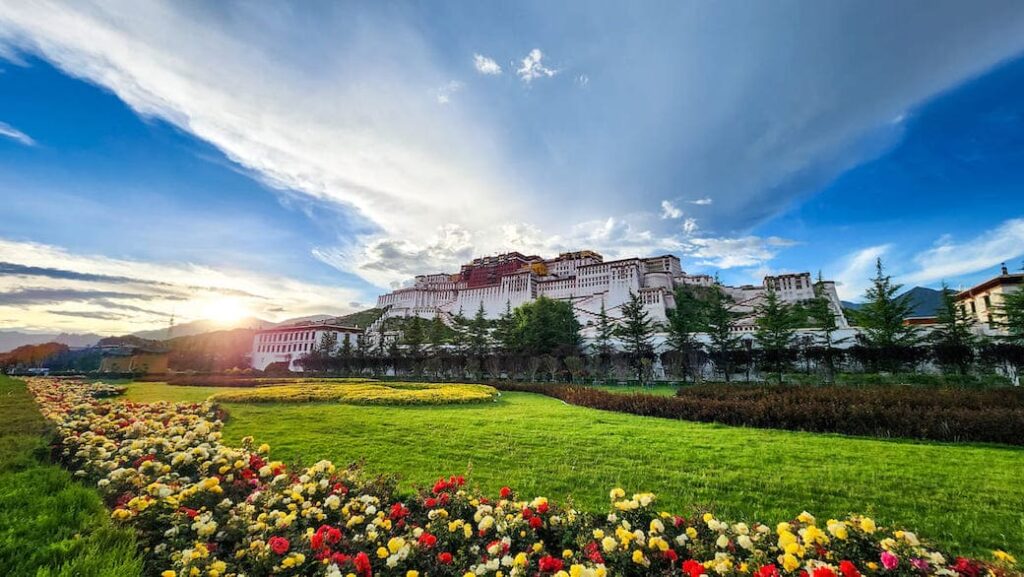
Pilgrimage allows individuals to detach themselves from their daily routines and immerse themselves in a sacred and spiritual environment. It provides an opportunity for introspection, reflection, and deepening of one’s faith or spiritual beliefs. The act of physically traveling to a sacred site can symbolize a commitment to the spiritual path and a willingness to undergo personal transformation.
One example of sacred sites that hold great significance in a spiritual journey is the ones found in Tibet. Tibet is known for its rich spiritual heritage and is home to numerous sacred sites, such as monasteries, temples, and mountains. These sites are believed to possess unique qualities that can inspire and awaken the spiritual essence within individuals.
Visiting these sacred sites in Tibet can offer a sense of awe and reverence, as well as a connection to the traditions and teachings of Tibetan Buddhism. The natural beauty of the Tibetan landscape, combined with the architectural wonders of the monasteries and temples, creates a serene and powerful atmosphere that encourages inner reflection and spiritual growth.
Furthermore, the energy and vibrations emitted by these sacred sites are believed to have a transformative effect on individuals. They are said to cleanse and purify the mind, body, and spirit, helping seekers to attain higher states of consciousness and spiritual awakening.
Sacred sites hold great significance in a spiritual journey as they provide a space for pilgrimage, introspection, and self-discovery. They offer an opportunity to connect with higher realms, deepen one’s faith or beliefs, and undergo personal transformation. Whether it be in Tibet or any other location, visiting these sacred sites can inspire and awaken the spiritual essence within individuals, making them an integral part of a spiritual journey.
Sacred Sites in Tibet
Tibet is a land rich in spiritual traditions and sacred sites, each holding a unique significance in the hearts of Tibetan Buddhists. Three of the most revered sites in Tibet are Mount Kailash, Potala Palace, and Jokhang Temple.
Mount Kailash , located in the western part of Tibet, is considered one of the most sacred mountains in the world. It is believed to be the abode of Lord Shiva in Hinduism and the dwelling place of Demchok, a wrathful deity in Tibetan Buddhism. Pilgrims from different faiths embark on a challenging journey known as the Kailash Mansarovar Yatra to circumambulate the mountain. This spiritual trek is believed to cleanse one’s sins and purify the soul.
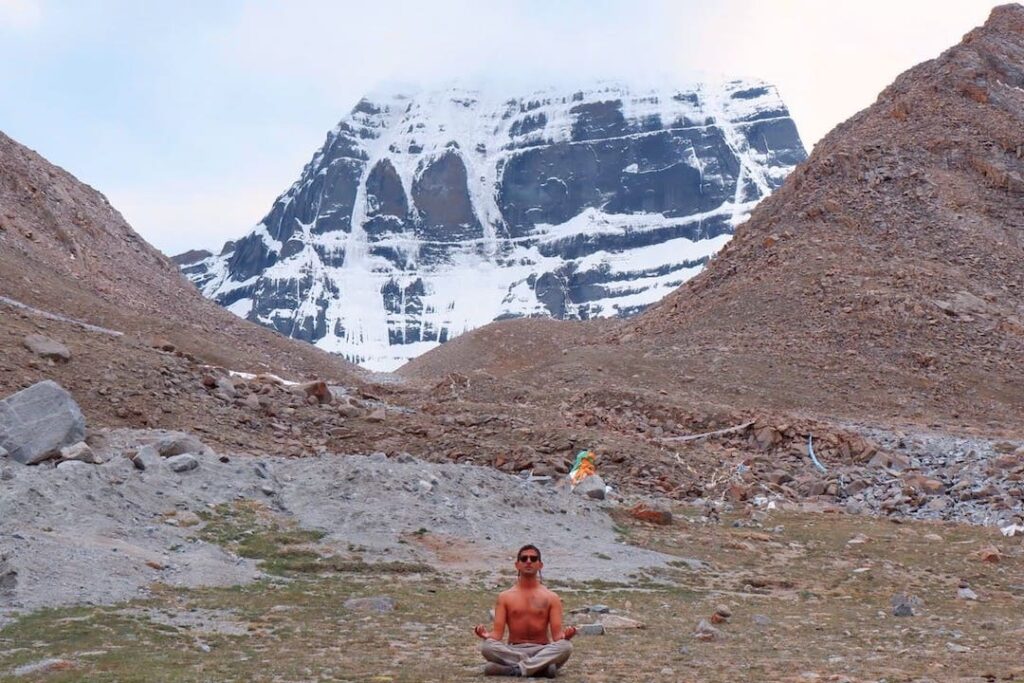
Potala Palace , situated in the capital city of Lhasa, is an architectural marvel that served as the winter residence of the Dalai Lama for centuries. This iconic palace stands as a symbol of Tibetan Buddhism and Tibetan identity. It contains numerous chapels, sacred relics, and intricate murals that depict the life and teachings of Buddha. The Potala Palace holds great historical and cultural significance, as it was once the center of political and religious power in Tibet.
Jokhang Temple , located in the heart of Lhasa, is considered the most sacred temple in Tibet. It was built in the 7th century by King Songtsen Gampo to house a revered image of Buddha brought as a dowry by his Nepalese wife. The temple’s architectural style is a blend of Indian, Tibetan, and Nepalese influences. Pilgrims from all over Tibet visit Jokhang Temple to prostrate, chant prayers, and make offerings. The temple’s spiritual atmosphere, adorned with ancient murals and statues, creates a sense of tranquility and devotion.
Each of these sacred sites holds immense spiritual significance for Tibetan Buddhists. They are places of pilgrimage, where devotees seek blessings, enlightenment, and spiritual transformation. These sites also have deep historical and cultural roots, reflecting the rich heritage of Tibet and its religious traditions. The reverence and devotion associated with Mount Kailash, Potala Palace, and Jokhang Temple make them integral parts of Tibetan identity and contribute to the spiritual fabric of the region.
Challenges during a spiritual journey
Embarking on a spiritual journey in Tibet can be both physically and logistically challenging. The region’s high altitude and rugged terrain can pose difficulties for travelers, especially if they are not accustomed to such conditions. Altitude sickness is a common concern, and it is important to acclimatize properly to avoid any health risks. Additionally, the remote locations of many sacred sites in Tibet may require long and arduous journeys, often involving treks or challenging road conditions.
Logistically, obtaining the necessary permits and visas for traveling in Tibet can be a complex process. It is essential to plan ahead and be aware of the specific requirements and regulations imposed by the Chinese government. Moreover, due to the region’s political situation, access to some areas may be limited or restricted, further complicating the logistics of a spiritual journey.
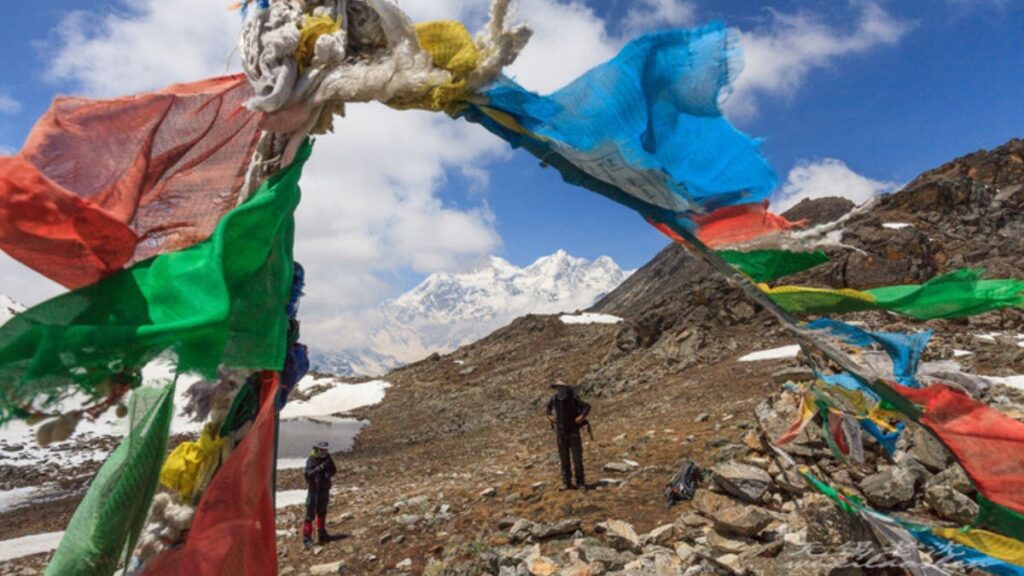
However, despite these challenges, the rewards and transformative experiences that can be gained from undertaking a spiritual journey in Tibet are immeasurable. Tibetan Buddhism is deeply ingrained in the culture and landscape of the region, offering a unique opportunity for spiritual exploration and growth. Visiting sacred sites such as the Potala Palace in Lhasa or Mount Kailash can be a deeply moving experience, evoking a sense of awe and reverence.
The spiritual teachings and practices of Tibetan Buddhism can provide valuable insights and guidance for individuals seeking inner peace and enlightenment. Engaging with local communities, monks, and spiritual masters can offer profound wisdom and a deeper understanding of the spiritual path. The serene natural beauty of Tibet’s landscapes also provides a conducive environment for meditation and self-reflection.
Moreover, the challenges and hardships faced during the journey can themselves be transformative. Pushing past physical limitations and overcoming logistical obstacles can build resilience, strength, and a sense of accomplishment. The solitude and silence of the remote Tibetan landscapes can facilitate introspection and self-discovery.
While a spiritual journey in Tibet may present physical and logistical challenges, the rewards and transformative experiences that await make it a worthwhile endeavor. The opportunity to immerse oneself in the rich spiritual heritage of the region and connect with its sacred sites and teachings can have a profound impact on one’s spiritual growth and understanding.
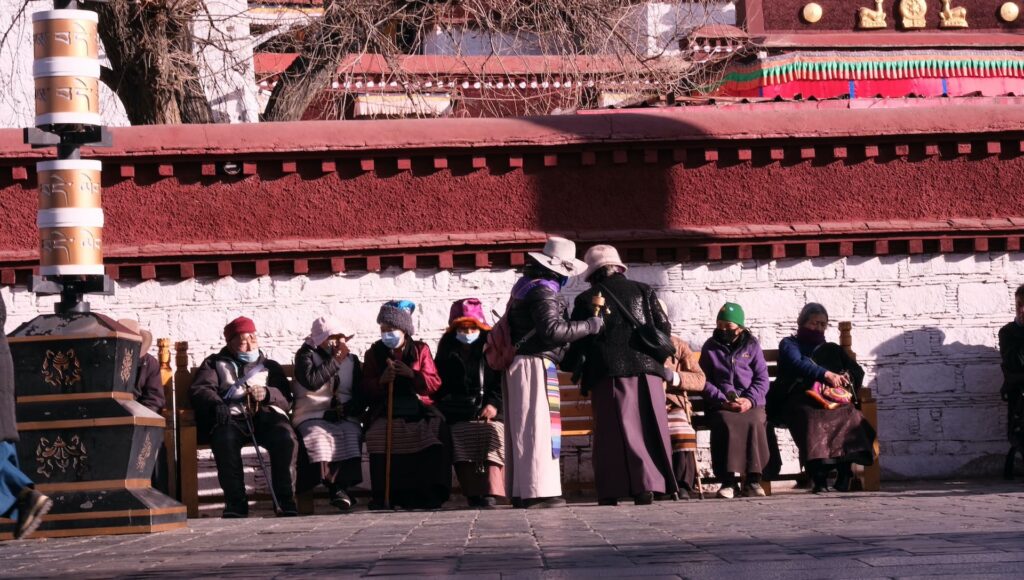
Preserving and respecting sacred sites is of utmost importance for the future generations. These sites hold deep cultural, historical, and spiritual significance, and they provide a connection to our past and our roots. By preserving these sacred sites, we ensure that future generations can continue to learn from and appreciate the wisdom and knowledge that they hold. These sites are a testament to the diversity and richness of human culture, and they deserve to be protected and respected.
Furthermore, these sacred sites have the power to inspire and educate. They can teach us about different belief systems, values, and traditions, fostering tolerance, understanding, and respect for others. They remind us of the importance of living in harmony with nature and with each other.
By preserving and respecting sacred sites, we also contribute to the preservation of biodiversity and ecosystems. Many sacred sites are located in areas of natural beauty, such as mountains, forests, or rivers. By protecting these sites, we protect the habitats of countless species, ensuring their survival for future generations.
In conclusion, preserving and respecting sacred sites is not only a matter of cultural and spiritual significance but also an essential step towards a more sustainable and harmonious future. It is our responsibility to cherish and protect these sites so that they can continue to inspire, educate, and connect us to our collective history.
Leave a Reply Cancel Reply
You must be logged in to post a comment.


Mystical Tibet Holidays – Your Journey Starts Here
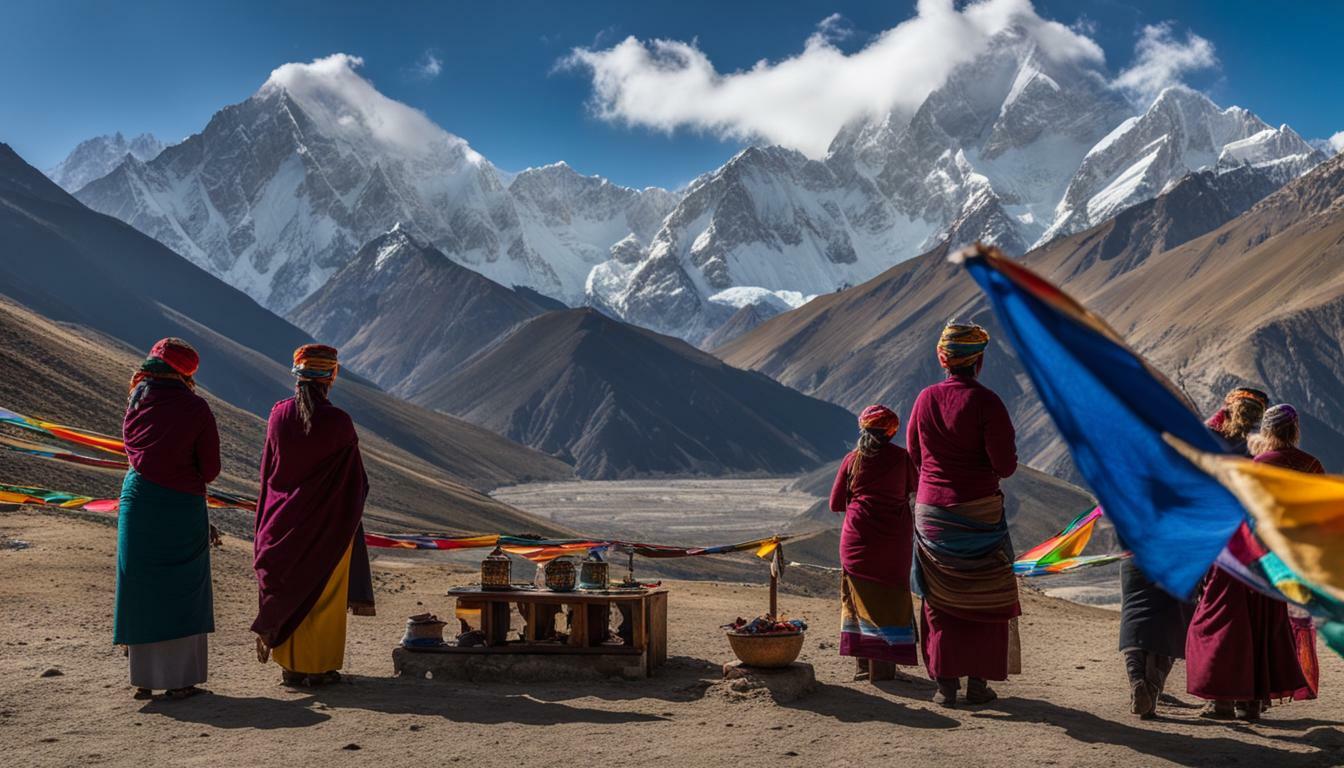
Discover the mystical beauty of Tibet and embark on a journey that will awaken your senses with our expertly crafted Tibet tours . This ancient land boasts a rich culture, awe-inspiring landscapes, and a spiritual essence that captivates the heart and mind. Let us take you on an unforgettable adventure that will leave a lasting impression.
- Embark on a transformative journey through ancient wonders, mesmerising landscapes, and a rich culture
- Explore hidden gems and venture off the beaten path for a unique and authentic experience
- Connect with Tibet’s spiritual essence and find inner peace on a spiritual retreat
- Prepare for your Tibet holidays with practical information on visa requirements and travel tips
- Experience the enchantment of Tibet and create memories that will last a lifetime
Unearth the Ancient Wonders of Tibet
Prepare to step back in time as you explore the hidden treasures of Tibet. Our expertly crafted Tibet trips take you on a journey through time, as you discover the ancient wonders of this remarkable land. From the mystical monasteries that seem to cling to the mountainsides, to the revered pilgrimage sites that hold centuries of spiritual significance, we offer a unique insight into the rich history and heritage of Tibet.
Our Tibet trips give you the opportunity to experience the culture of Tibet up close. You will encounter friendly locals in remote villages, witness traditional Tibetan festivals and learn about centuries-old traditions and rituals. Experienced guides will lead you on an adventure of discovery that will leave you with memories to cherish for a lifetime.
Unearth the Spiritual Heart of Tibet
Tibet is known the world over as a destination for spiritual seekers. With its serene atmosphere and ancient monasteries, it offers the perfect setting for contemplation and self-reflection. Tibet trips provide the ideal opportunity for a spiritual journey, as you immerse yourself in the traditions, teachings and practices of Tibetan Buddhism. Allow yourself to be transported to a higher plane of consciousness as you connect with the spiritual heart of Tibet.
China Tibet tours are designed to cater for a range of interests and requirements. Whether you are a seasoned traveller or a first-time visitor, they can tailor your trip to ensure that you get the most out of your experience. With their extensive knowledge of Tibetan travel , rest assured that every detail is taken care of, leaving you free to relax and enjoy the journey of a lifetime.
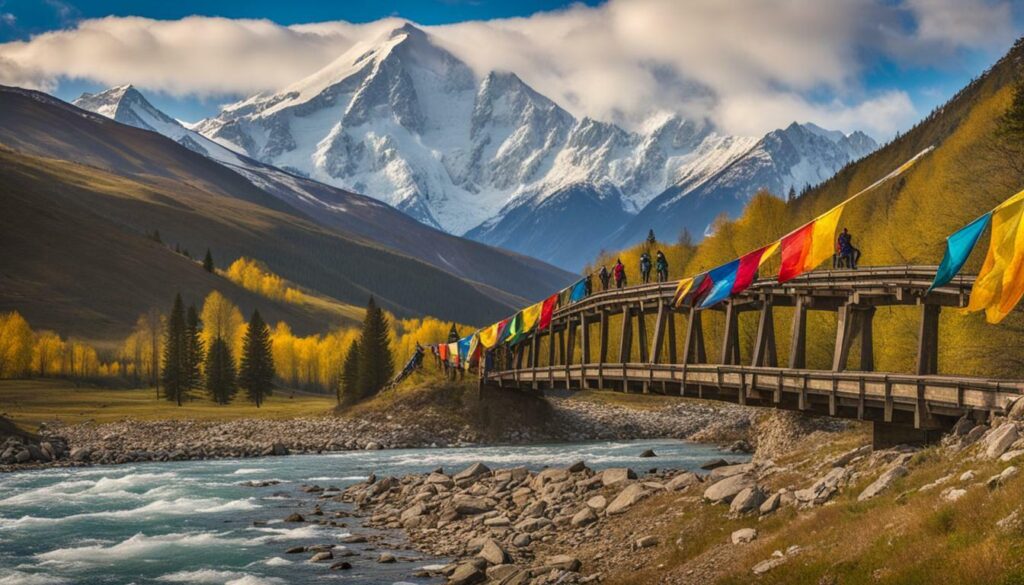
Embark on a journey of discovery and let the ancient wonders of Tibet leave you spellbound. Book your Tibet trip today and experience the magic of this mystical land for yourself.
Mesmerising Landscapes of Tibet
When it comes to natural beauty, Tibet is a destination that truly takes your breath away. From rugged mountain peaks to lush green valleys and pristine lakes, the landscapes of Tibet are nothing short of mesmerising. Tibet holidays offer the perfect opportunity to explore this enchanting land and connect with its awe-inspiring nature.
One of the most iconic features of Tibet is, of course, the Himalayan mountain range. As the highest mountain range in the world, the Himalayas offer a stunning backdrop to any Tibet tour. The snow-capped peaks of Mount Everest, Cho Oyu and Shishapangma are just some of the awe-inspiring sights you can expect to see on your journey.
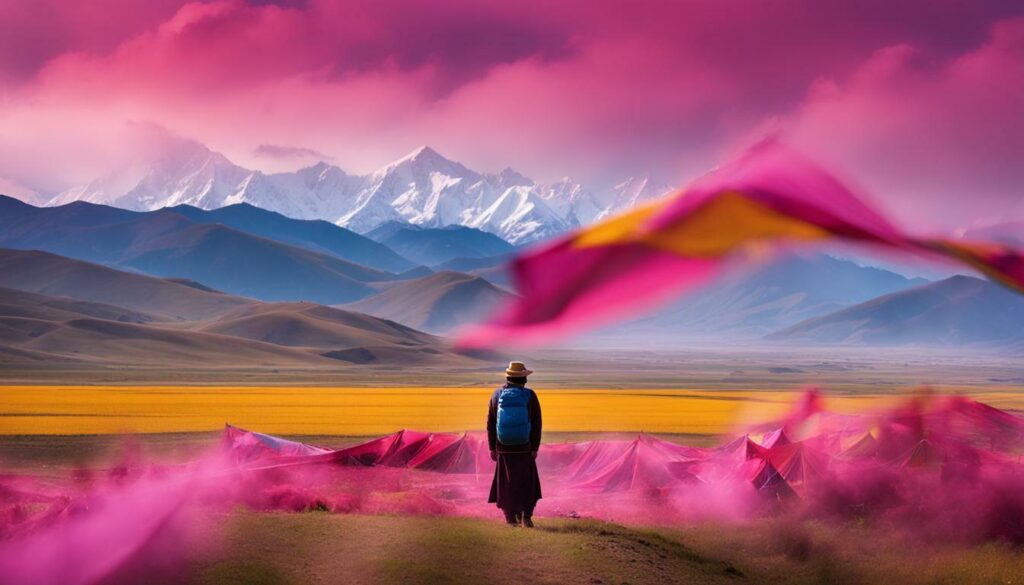
But the Himalayas are just the beginning. Tibet is also home to a variety of other natural wonders, including the serene Yamdrok Lake, the emerald-green Namtso Lake, and the stunning Yarlung Tsangpo Canyon. The latter is one of the deepest canyons in the world and is known for its rugged beauty, pristine waterfalls and breathtaking vistas.
Whether you choose to trek through the mountains, take a leisurely stroll through a valley or simply bask in the beauty of a Tibetan lake, the landscapes of Tibet are sure to leave a lasting impression. There are travel to Tibet from UK packages designed to help you make the most of your time in this enchanting land, so you can explore its natural beauty at your own pace.
Experience the Rich Culture of Tibet
Experience the vibrant and diverse culture of Tibet on your next adventure. The bustling streets of Lhasa offer a glimpse into the daily lives of the Tibetan people, and Lhasa holidays provide an authentic cultural experience that will leave a lasting impression.
Visit the awe-inspiring Potala Palace, a UNESCO World Heritage Site and former residence of the Dalai Lama. Admire the intricate murals and sculptures at Drepung Monastery, one of the largest monasteries in the world. Witness the traditional Cham dance at a Tibetan festival and join the locals in their celebrations.
A Tibet visit will also allow you to connect with the warm hospitality of the Tibetan people. Stay with a local family in a remote village, learn about their way of life, and share a meal around the fire. The sense of community and connection in Tibet is truly unique and unforgettable.
With expertly crafted Tibet tours , you’ll have the opportunity to immerse yourself in the rich culture of this ancient land and make memories that will last a lifetime.
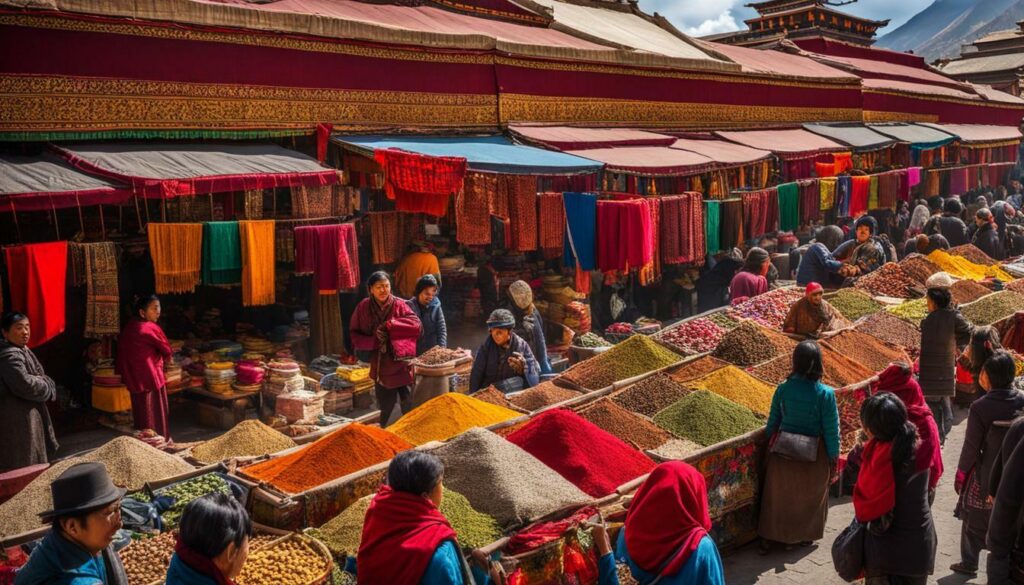
Experience the magic of the Himalayas with Tibet tours. Book your Tibet visit today and embark on a journey of a lifetime.
Discover the Hidden Gems of Tibet
While Tibet’s main attractions are well-known and highly popular, there are plenty of hidden gems waiting to be discovered. With Tibet tours , you can venture off the beaten path and witness the untouched beauty of this mystical land.
Uncovering the hidden gems of Tibet is a once-in-a-lifetime experience. With Tibetan travel packages, you can explore the most remote and undiscovered corners of Tibet. Contact a tour operator today to create your own unique and unforgettable Tibet tour.
Embark on a Spiritual Journey
For those seeking spiritual enlightenment, Tibet is truly a sacred destination like no other. Its serene atmosphere permeates the land, offering a unique opportunity for self-reflection and rejuvenation.
During Tibet trips, expert guides will take you on a spiritual journey to some of the most breathtaking and sacred sites of Tibet. The ancient monasteries tucked away in the mountains offer a glimpse into the rich and vibrant history of Tibetan Buddhism.
Embark on a pilgrimage to Mount Kailash, the holiest mountain in Tibet and a site of deep spiritual significance. The high-altitude trek can be challenging, but the rewards are truly life-changing. As you reach the peak of Kailash, you will experience a deep sense of peace and connection to the divine.
During your spiritual retreat, you will also have the opportunity to attend traditional Tibetan ceremonies and learn from local spiritual leaders. Tibet trips provide the ideal setting for a transformative experience that will remain with you long after your journey has ended.
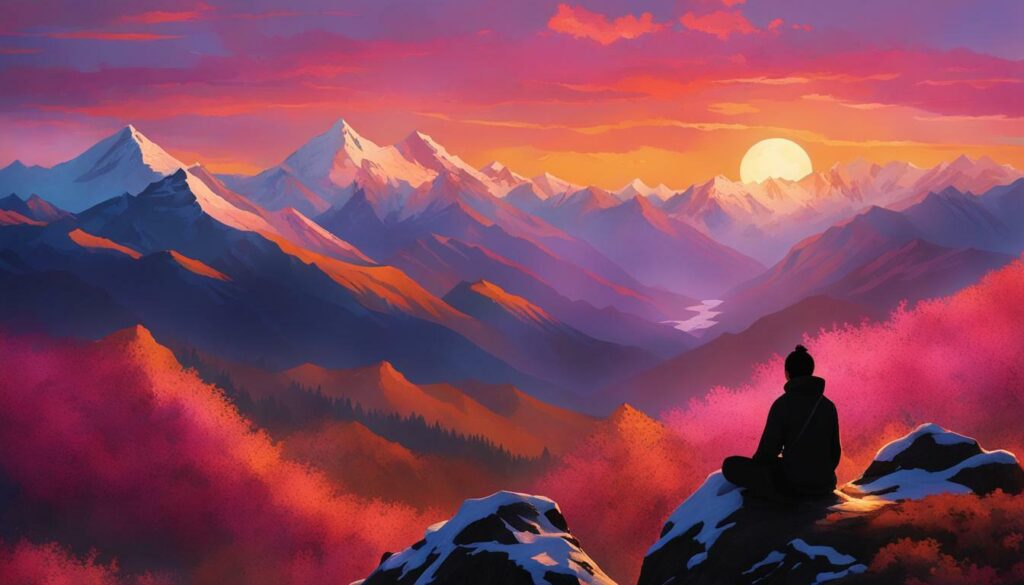
If you’re based in the UK and looking for travel to Tibet from UK , there are expert travel planners who can assist with all practical aspects of your journey so that you can fully focus on your spiritual growth and exploration.
Practical Information for Travel to Tibet
Embarking on your dream Tibet holidays requires proper planning and preparation. Here are some practical tips to make your journey to Tibet from the UK smooth and hassle-free:
With these tips in mind, you can now prepare yourself for an unforgettable journey of a lifetime. Book your Tibet tours today and get ready to experience the magic of this mystical land.
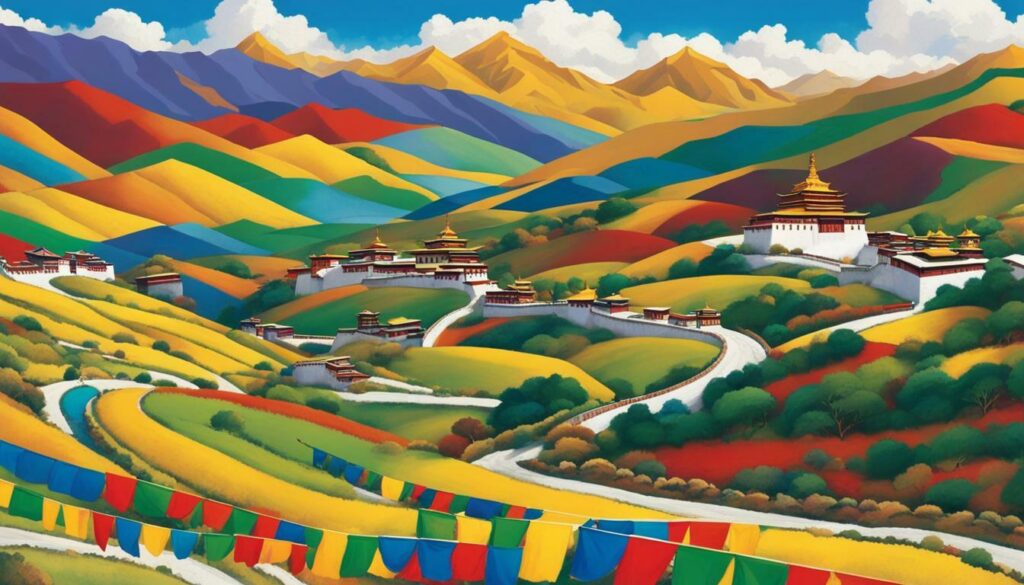
In conclusion, Tibet holidays offer a truly mystical and transformative experience that will leave you in awe. The mesmerising landscapes, rich culture, and spiritual essence of this ancient land provide an opportunity to experience something truly extraordinary.
Whether you’re interested in unearthing the ancient wonders of Tibet, discovering its hidden gems, or embarking on a spiritual journey, there are expertly crafted Tibet trips and tours that cater to every traveller’s needs.
Before embarking on your Tibetan adventure, make sure to check the practical information for travel to Tibet, including visa requirements and travel tips. Tour operators will guide you through the planning process and ensure a seamless journey.
Don’t miss out on the opportunity to immerse yourself in the captivating world of Tibet holidays. Begin your journey today and let the enchantment of this extraordinary land captivate your heart and mind.
Q: What do Tibet holidays offer?
A: Tibet holidays offer expertly crafted Tibet tours that allow you to immerse yourself in the rich culture and awe-inspiring landscapes of this enchanting destination.
Q: What can I discover during my Tibet trip?
A: During your Tibet trip, you can unearth the ancient wonders of this captivating land, explore its fascinating history and heritage, and visit mystical monasteries and sacred sites with centuries of spiritual significance.
Q: What landscapes can I expect to see in Tibet?
A: Tibet’s landscapes are truly mesmerizing, from the towering Himalayas to serene lakes and lush valleys. Each scene is a work of art waiting to be explored during your Tibet holiday.
Q: How can I experience the rich culture of Tibet?
A: Experience the vibrant and diverse culture of Tibet by immersing yourself in the traditions, rituals, and warm hospitality of the Tibetan people. Lhasa holidays provide an authentic cultural experience that will leave a lasting impression.
Q: Can I discover hidden gems in Tibet?
A: Absolutely! Venture off the beaten path and uncover the hidden gems of Tibet, including remote villages, encounters with nomadic communities, and witnessing the untouched beauty of this mystical land. Tibet tours can take you on a journey of exploration and discovery.
Q: Can I embark on a spiritual journey in Tibet?
A: Yes, Tibet is a sacred destination like no other. With its ancient monasteries, holy pilgrimage sites, and serene atmosphere, a Tibetan journey offers a unique opportunity for self-reflection and rejuvenation. Tibet trips provide the ideal setting for a spiritual retreat.
Q: What practical information do I need for travel to Tibet?
A: Before embarking on your Tibet holiday, it’s important to have all the necessary information at hand. This section will guide you through visa requirements, travel tips, and other practical aspects of planning your journey to Tibet from the UK.
- Destinations
- Accommodations
- Travel Guides

- Travel Advice
- (86)28-8175 4631

- 4 Days Lhasa City Small Group Tour From USD509
- 5 Days Lhasa and Yamdrok Lake Small Group Tour From USD689
- 7 Days Lhasa to Kathmandu Small Group Tour From USD979
- 8 Days Everest Base Camp Small Group Tour From USD939
- 8 Days Kathmandu to Lhasa Overland Tour From USD1069
- 10 Days Lhasa EBC and Namtso Small Group Tour From USD1289
- 15 Days Lhasa to Mount Kailash Group Tour From USD2059
- Lhasa Tours
- Everest Base Camp Tours
- Mount Kailash Tours
- Tibet Trekking Tours
- Tibet Bike Tours
Tibet Train Tours
- Tibet Winter Tours
- Tibet Festival Tours
- Tibet Family Tours
- Tibet Culture Tours
- Tibet Photography Tours
- Lhasa Chengdu Overland Tours
- 10 Days Beijing Xian Lhasa Shanghai Small Group Tour From USD1072
- 10 Days Chengdu to Lhasa Overland Tour via G318 National Highway From USD1990
- 12 Days Chengdu Tibet Railway Lhasa Namtso Shigatse Small Group Tour From USD1575
- 13 Days Beijing Xian Lhasa Yangtse River Shanghai Small Group Tour From USD1725
- 14 Days Beijing Xian Lhasa Shigatse EBC Chengdu Small Group Tour From USD1603
- 15 Days Beijing Xian Lhasa Chengdu Guilin Shanghai Small Group Tour From USD1787
- 7 Days Lhasa to Kathmandu Small Group Tour From USD960
- 8 Days Kathmandu to Lhasa Overland Adventure Tour From USD1000
- 13 Days Lhasa Everest Mount Kailash and Kathmandu Adventure Tour From USD2026
- 15 Days Beijing Lhasa EBC Kathmandu Small Group Tour From USD2242
- 10 Days Beijing Xian Lhasa Kathmandu Small Group Tour From USD1276
- 12 Days Beijing Lhasa Shigatse EBC Kathmandu Small Group Tour From USD1712
- 15 Days Beijing Lhasa Shigatse EBC Kathmandu Small Group Tour From USD2014
- 17 Days Kathmandu to Beijing Overland Small Group Tour From USD2283
- Beijing Lhasa Train
- Shanghai Lhasa Train
- Guangzhou Lhasa Train
- Chengdu Lhasa Train
- Chongqing Lhasa Train
- Xian Lhasa Train
- Xining Lhasa Train
- Lanzhou Lhasa Train
- Tibet Visa from Nepal
- Tibet Visa for Indian
- Permit for Everest Base Camp Tour
- Permit for Mount Kailash Tour
- Aliens Travel Permit
- How to Visit Tibet in 2024
- Best Time to Visit Tibet
- Best Places to Visit in Tibet
- How Many Days to Tour Tibet
- How Much Does It Cost to Travel to Tibet
- How to Get to Tibet
- How to Keep Safe in Tibet
- FAQs about Altitude Sickness in Tibet
- Things to Know before Choosing Hotels in Tibet
- How to Enjoy a Budget Tibet Tour
- How to Reach Lhasa from Kathmandu
- Guide on Mount Kailash Kora Trek
- Top 6 Classic Trekking Routes in Tibet
- 3 Different Ways to Travel from Chengdu to Lhasa

All Tibet Group Tour
All Tibet Tours
Tibet Group Tour
- Lhasa and Surrounding Tour
- Everest Base Camp Tour
- Mount Kailash Tour
Lhasa to Kathmandu Tour
- Nepal & Tibet Tour
- China & Tibet Tour
Kathmandu to Lhasa Tour
- Trekking Tour
Central Tibet Tour
Eastern Tibet Tour
- Biking Tour
- Cultural Tour
- Family with Kids Tour
- Photography Tour
Festival Tour
All China Tibet Tour
All Nepal Tibet Tours
- 7 Days Lhasa to Kathmandu Small Group Tour - Expedition across the Roof of the World From USD979
- 7 Days Kathmandu & Lhasa Tour By Flight
- 9 Days Kathmandu & Tibet Golden Triangle Tour
- 14 Days Nepal & Tibet Highlights Tour
- 10 Days Tibet and Nepal: Journey to the Highest Himalaya
- 13 Days Classic Tibet Nepal and Bhutan Tour
- 14 Days Lhasa to Kathmandu Overland Tour from Beijing
- 14 Days Journey to the Himalayan Kingdoms
- 17 Days An Epic Journey through India, Nepal & Tibet
- 11 Days Himalaya Overland Tour from Lhasa to Kathmandu
- 18 Days Travel through Silk Road to Tibet and Exotic Nepal
All China Tibet Nepal Tour
- 15 Days Beijing Xian Lhasa Shigatse EBC Kathmandu Small Group Tour From USD2242
- 20 Days Beijing Xian Lhasa EBC Kathmandu Pokhara Chitwan Small Group Tour From USD2799
Tibet Train
- Beijing to Lhasa Train
- Shanghai to Lhasa Train
- Xining to Lhasa Train
- Chengdu to Lhasa Train
- Guangzhou to Lhasa Train
- Xian to Lhasa Train
- Lanzhou to Lhasa Train
- Chongqing to Lhasa Train
- Tibet Travel Permit FOR FREE
- Get a Tour Quote
- Tibet Budget Group Tour
By Destinations
- About Tibettour.org

18 Days Spiritual Journey to Tibet and Bhutan
Tour Route: Lhasa-Shigatse-EBC-Kailash-Saga-Gyirong-Kathmandu-Paro-Thimpu-Punakha-Paro
Trip Overview:
This 18-day Tibet and Bhutan tour will firstly take you deeper into mysterious Tibet. After visiting the essence of Lhasa, you will go up to Everest Base Camp, which is 5,200 meters above sea level. You will marvel at the magnificence view of Mount Everest here. Then you will head for Ngari region. In there, you can enjoy beautiful Lake Manasarovar, and spend 3 days to experience a holy Mount Kailash Kora. This epic trek is a challenge for your mental and physical.
Next, you will go to Kathmandu from Gyirong border, then fly to Paro to explore this exotic south Asian country. You will experience local custom, sightsee distinctive architecture, and enjoy pristine natural scenery of this Buddhist kingdom. It must be a holy pilgrimage trip you will never forget.
Tour Code: TTO-TBT-TEB18
Trip Level:
Tour Type: Private tour with private guide and vehicle
Time to Visit:
Highlights:
- Fully explore the sunlight city Lhasa with its well-known Potala Palace and holy monasteries of Jokhang , Sera and Drepung.
- Marvel at the turquoise waters of Yamdrok-tso , one of Tibet’s most sacred lakes.
- Climb the dazzling Gyantse Kumbum , and worship before a 26m gold Buddha at Tashilhunpo Monastery .
- Take in the panoramic view of Mount Everest from the north base camp in Tibetan side.
- Join the pilgrims looking to erase the sins of a lifetime on the three-day trek around holy Mt. Kailash .
- Immerse in the Buddhist world of Bhutan to visit famous Paro Rinpung Dzong .
- Trek to the holiest temple in Bhutan, Tiger’s Nest .
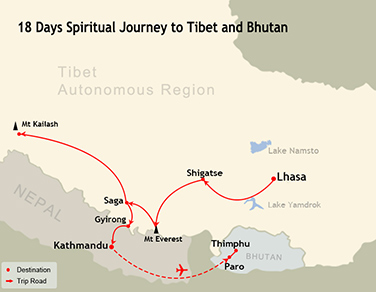
Daily Itinerary
Day 1: Arrive in Lhasa
Welcome to Tibet! Upon arrival, be greeted by our local guide at airport or train station and be presented with traditional Tibetan White Scarf to wish you good luck!
After group photo at airport, you will board on the coach and transfer to your hotel. You will enjoy the spectacular scenery and the typical Tibetan villages on the way.
Stay at the hotel after arrival for adapting to the high attitude. It is helpful to take things easy for the first few days, and try to drink some water just and now.
Stay overnight in Lhasa.
Day 2: Lhasa Sightseeing - Potala Palace, Jokhang Temple and Barkhor Street
After breakfast, we go to the Potala Palace , a golden feather upon the roof of the world, which Tibetans proudly claim to be the prime miracle since the creation of this world. It is visible from any distance, with the golden roof shinning in the sun, spend one hour wondering around the inside of this magnificent building exploring the rooms previously used by the Dalai Lama and the many Buddhist icons within.
In the afternoon we go inside of the Jokhang Temple . The Jokhang, like most of the larger temple structures have numerous individual temples within it dedicated to specific enlightened beings, protectors, high lamas, or saints. Images, both sculpted and painted, are everywhere. Every inch of wall and ceiling is brightly painted with images of clouds, beings, mandalas, or decorative patterns. Colorful silk banners, three stories high, hang in various places. Color, pattern, and images crowd in around you. The central image inside the building is a 30-foot high gilded image of Maitreya Buddha.
Then stroll around the back alleys of the Barkhor Street of Old Lhasa. The streets smelled of yak butter and incense while hordes of pilgrims shuffled along the main Kora (circumambulations) around Jokhang Temple. If someone just walked at a normal pace, one kora would take about 15-20 minutes.
Stay overnight in Lhasa
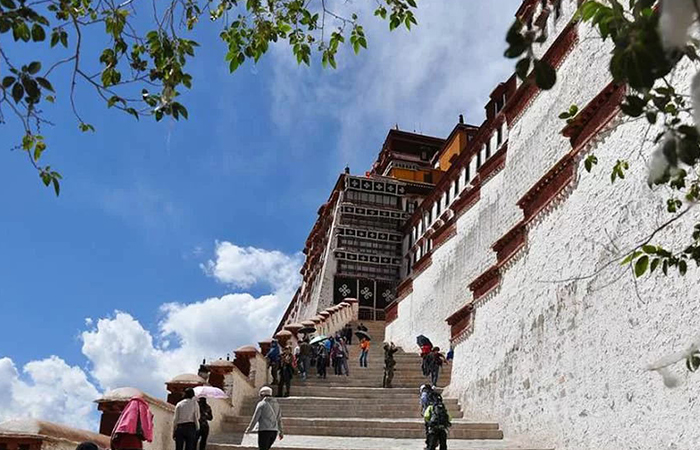
Day 3: Lhasa Sightseeing - Drepung Monastery and Sera Monastery
In the morning, you will have a tour for Drepung Monastery , the ever-largest monastery with more than 10 thousand monks, Buddhist debates often occur there. Seen from afar, its grand, white construction gives the monastery the appearance of a heap of rice. As such, it was given its name which, in the Tibetan language, means Monastery of Collecting-Rice. Learn about the lives of Tibetan monks there.
In the afternoon, you are going to visit Sera Monastery , have a little hike for the beautiful valley scenery nearby and picnic there. Sera monastery was created in 1419 and has always been an important Buddhist seminary. As rose are planted everywhere in the monastery, it is also called “the court of wild rose”. Today still 200 lamas live in there. You may have the chance to watch the famous Monks Debate (usually from 15:00 to 17:00) before returning to Lhasa.
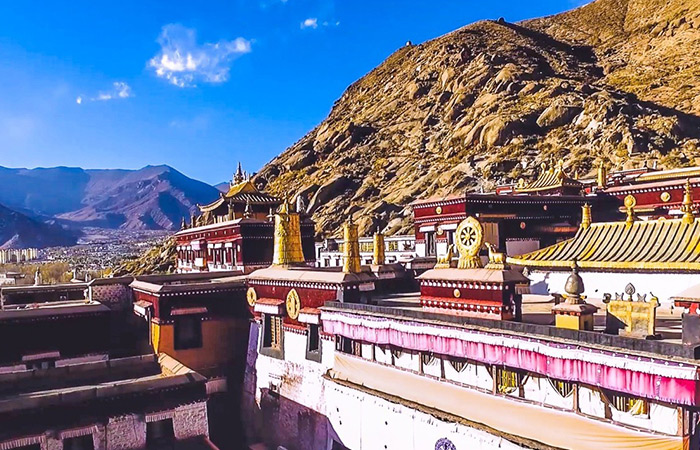
Day 4: Lhasa (3650m) to Shigatse (3900m)
In the morning, drive from Lhasa to Shigatse. On the way, drive over the Gampala pass (4790 m), and tourists will have a glimpse of Yamdrok-tso (4400m). The Lake is surrounded by many snow-capped mountains and in the distance, clients can have spectacular views of Holy Mount NyenchenKhangsar, (7191m) the highest mountain near Lhasa. Gyantse was historically Tibet's third largest city (after Lhasa and Shigatse). In Gyantse, tourists will visit the famous Pelkor Monastery and Gyantse Kumbum . After one and a half driving, we arrive in Shigatse, which is the second largest city in Tibet. In Shigatse, tourists will visit Tashilhunpo Monastery , the seat of Tibet's second highest incarnation, the Panchen Lama.
Stay overnight in Shigatse.
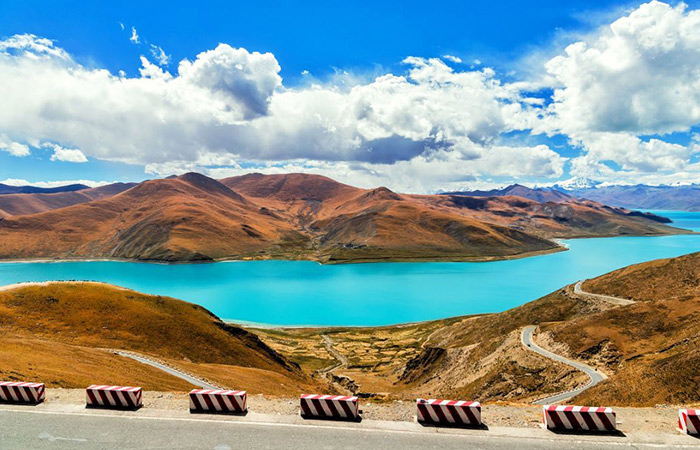
Day 5: Shigatse (3900m) to EBC (5200m)
Drive to Lhatse, it is a small town where tourists can have lunch. Then, head to Shegar and if the weather is clear enough then on the way down to Shegar tourists will view the Mount Everest in the distance. After 4 to 6 hours’ drive, tourists will arrive at Rongbuk monastery but on the way, they will pass one of the highest Passes in Tibet (pang la pass height 5050m) from that’s pass they will view the whole five highest peaks in the world.
Stay overnight in Rongbuk Tent Guest house or local Tibetan Tent.
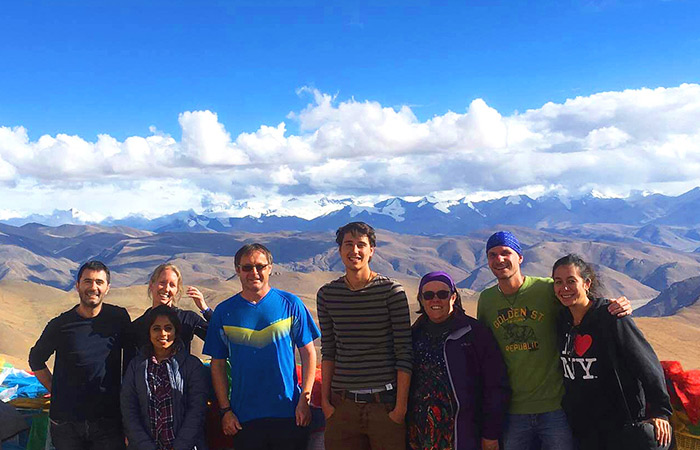
Day 6: EBC (5200m) to saga (4500m)
In the morning, you may see the sunrise appearing on the summit of Mount Everest and you can get to Everest Base Camp by local bus or trekking.
After visiting EBC, we need to drive to Saga County via the old Tingri road, which passes through the desolate plain of Digur Tang. You can see the snow peaks of mount Everest and Mout Shishapangma (8012m) en route. Then descending into the depression of Peikhu-tso Lake (4600m).
Finally, we will drive to Saga, a small town that is 69 km away from Pelkhu tso Lake.
Stay overnight in Saga.
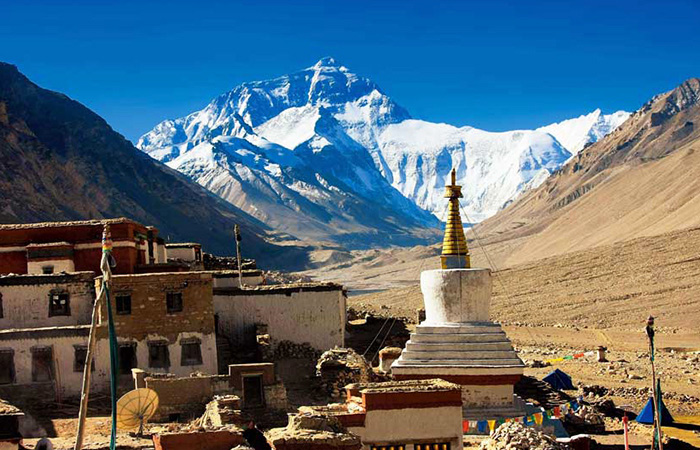
Day 7: Saga to Darchen via Lake Manasarovar
In the morning, we will first be driving about 167 km from Saga town to Drongpa County , which is at the sources of Brahmaputra River.
Next, we will make a small detour to the Lake Manasarovar , the holy lake of both Tibetan and Hinduism. You can a relaxing trip around the lake shore and experience the natural beauty of the Lake Manasarova with snowcapped mountains on the background. You may also see many pilgrims praying and circling around the lake shore. In late afternoon, we will reach Darchen , a small town at the foot of Mount Kailash.
Stay overnight in Darchen.
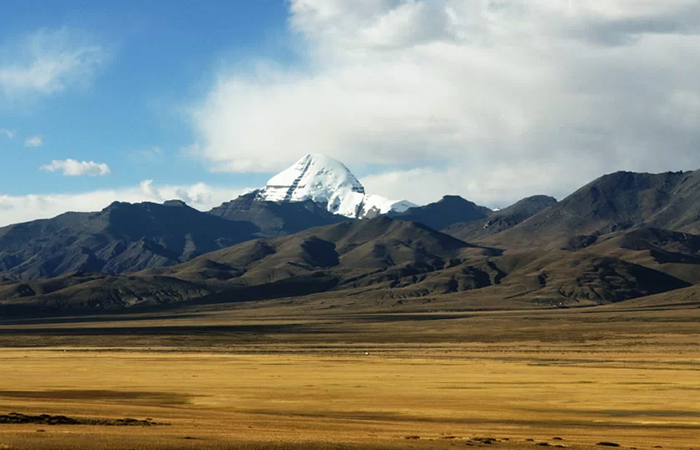
Day 8: Darchen to Drirapuk
Today, you will firstly take the environment-friendly bus from Darchen to Sarshung village, where your porters are waiting for you. The 8 kilometers’ journey takes about 40 minutes by bus. Then we start to trek.
After two hours, we come upon a grassy plain populated by nomads. For this turn in the valley it is another two hours at least before reaching Drirapuk (4920m).
Stay overnight in Guest House.
Day 9: Drirapuk to Dzultripuk
Today, start the hardest and most tough circuit with the Dolma-la pass , which is lying 6.4km ahead but 762m above Drirapuk.
It is better to set off early in the morning as the sun rays break over the ridges above the peak of Dolma-la pass at 5630m above the sea level.
After taking a rest at the peak of Dolma-la pass, you will take about one hour from the pass down to Lhachu valley floor , from which there is still four hours trekking to today’s final destination with no shelters on the way. It is better to walk on the right side of the river and finally get to Dzultripuk (with miracle cave of milarepa).
Take a good rest in the guest room and prepare for next morning's departure.
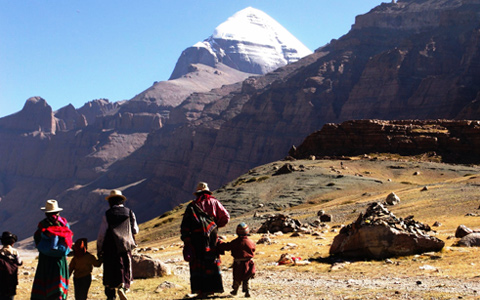
Day 10: Dzultripuk to Darchen
The last trekking day starts from a trip to Milarepa’s Cave , where the temple and shrines have been built around. Then we walk back to Darchen is easy and the exit from the valley can be reached within three hours.
At the ending point of the valley, the driver will come to pick you and take you back to Darchen.
Day 11: Darchen – Saga
Drive back to Saga from Darchen. The rest of the day is free for you to explore Saga at your leisure.
Day 12: Saga to Gyirong
Today we will drive Gyirong from Saga. Today's driving is amazing with excellent views of Himalaya Mountains, a lot of wildlife including wild horses, wolves, foxes, deer, gazelle, black-necked cranes as well as yaks and sheep.
Stay overnight in Gyirong.
Day 13: Exit Tibet via Gyirong Border to Kathmandu
In the morning, our Tibetan guide will escort you to Gyirong border. Then, you are kindly required to hike on your own to cross the border bridge which is 50m long, then check in Nepal side, you can get the Nepal visa upon arrival with US$30, please prepare one photo at passport size to get Nepal Visa.
After you get to Nepal side, please find our guide. The guide will accompany you in a comfortable vehicle to the hotel in downtown (7-8hours’ ride) and help you with the check-in procedure. The rest of the day is left for you to have a good rest or to become familiar with the capital city of Nepal by yourself.
Stay overnight in Kathmandu.
Day 14: Fly from Kathmandu to Paro, then Drive to Thimphu
During your flight to Paro , you will experience breathtaking views of the Himalayan Peaks including sacred Chomolhari and Mt. Jichu Drake in Bhutan. On arrival at Paro International Airport you will be received by our guide. Then drive for 1 hr 30 min to Thimphu.
In the afternoon, we will head to visit the landmarks in Thimphu, including the Kyichu Lhakhang and Paro Rinpung Dzong . Kyichu Lhakhang is also known as Kyerchu Temple and is the oldest and most beautiful temple in Bhutan. Paro Rinpung Dzong, built in 17th century as a fortress to protect Paro valley, offers you picturesque scenery and a sense of inner peace.
Stay overnight in Thimphu.
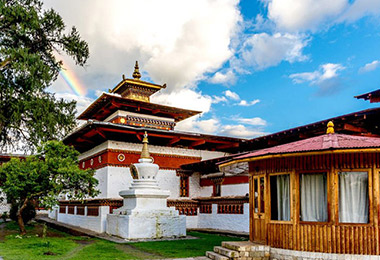
Day 15: Thimphu Sightseeing and Drive to Punakha
In the Morning, we will continue sightseeing in Thimphu. You will pay a visit to National Library that houses the world’s largest book and many ancient Buddhist texts and manuscripts, Painting School which is famous for traditional Thangkha paintings, Traditional Medicine Institute where the centuries old herbal medicine is still practiced and the folk heritage museum. And the highlight comes as you tour the Tashichho Dzong , the most beautiful Bhutan dzong as well as the headquarters of Bhutan government.
After lunch, we will drive from Thimphu to Punakha crossing Dochula pass at 3100mtrs where you can see the 108 beautiful chortens built by Her Majesty Ashi Dorji Wangmo Wangchuk. From this pass, on a clear day, you can have a superb view of the highest peaks in Bhutan.
Stay overnight in Punakha.
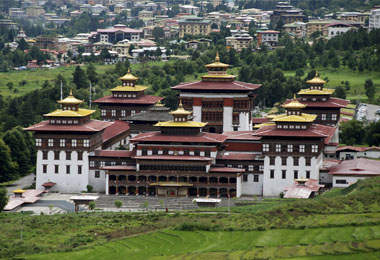
Day 16: Punakha Sightseeing and Drive back to Paro
Get up in the morning to visit Punakha Dzong , widely believed to be the most beautiful Bhutanese Dzong, built at the confluence of Pho Chhu and Mo Chhu Rivers. Never miss the Punakha festival around mid-Feb if you come at the right time.
After touring Punakha, we are about to drive back to Paro. In the afternoon, we head to the National Museum of Bhutan , which looks like a round watchtower. You can trace back to the ancient Bhutan history and explore the diverse wild lives as well as splendid local culture and arts. Then we drive to visit Drukgyel Dzong , where you can enjoy the enchanting village lying at its foot.
Stay overnight in Paro.
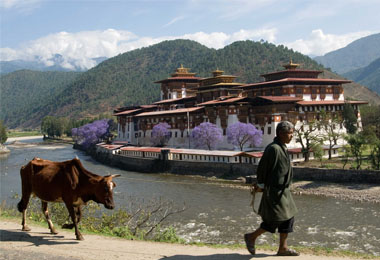
Day 17: Trek to Taksang Lhakhang (Tiger’s Nest)
Today, we will enjoy the wonderful trek to Taktshang Goemba , also known as Tiger's Nest . Perched on the cliff of Paro Valley, Taktshang Goemba (3120 meters) is the landmark of Paro as well as the holiest temple in Bhutan. It’s said that Guru Rinpoche had flied here on the back of a tigress and meditated in the caves on the cliffside for three months. From here, you can catch a panoramic view of Paro Valley.
In the afternoon, you may opt for a stone bath or enjoy free exploration nearby.
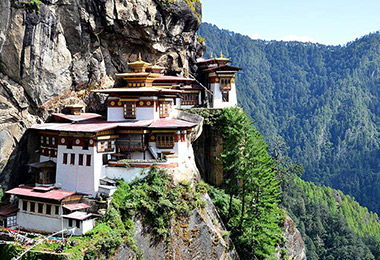
Day 18: Departure from Paro
Our guide will pick you up from the hotel and send you to the airport so that you can board the flight back home after this pleasant tour. Tour service end.
What’s included?
1.Tibet Entry Permit
2. Comfortable, clean and safe vehicle depending on your group size with reliable local driver;
3. Admission fees of tourist sites listed in the itinerary;
4. Professional English speaking tour guide;
5. Accommodations depend on your preference. Please tell us your preferred accommodation class when submitting the enquiry, and we will arrange the best-value hotels for you.
6.All measl listed in the itinerary;
7.Tourist Accident/Casualty Insurance
What’s not included?
1. International flight to and out of China;
2. Chinese Visa
3. Domestic flight / train not listed in the itinerary (If you need ticket booking service, please leave your requirements in the Online Inruiry form.)
4.Meals not specified in the itinerary;
5.Tips to driver and tour guide, Tip as you wish
6.Personal expenses, such as laundry, phone call, optional tour activities and so on.
1. How to Get the Tibet Travel Permit?
The Tibet Travel Permit is essential for any Tibet tour. We help to obtain this permit free of charge when you book your Tibet tour through us. Simply send us copies of your passport and China visa at least 20 days in advance. Once we receive your documents, we will promptly process the permit application with the Tibet Tourism Bureau. After obtaining your permit, we will notify you and send it to your hotel in mainland China.
In exceptional cases, our staff can personally deliver the permit to you at the airport or railway station. With years of experience in handling Tibet Travel Permit, we assure you a smooth visit to Tibet by ensuring the acquisition of your permit.
2. Where to Stay in Tibet?
Accommodation facilities and services in Tibet might not match those found in the coastal and central parts of China. However, there's a diverse range of hotel options available. However, you can choose from a wide range of hotel options. In big cities like Lhasa and Shigatse, from cheap and clean youth hostels to distinct Tibetan-style 3-star and international 5-star luxury hotels, you will find one that suits your interests and budget.
As you travel to remote areas of Tibet, such as EBC and the Mount Kailash region, the accommodations tend to be more basic. Some may have air-conditioning in the hotel, while others may only offer electric blankets in the guesthouses. Nonetheless, we always handpick cozy and safe accommodations for you along your itinerary in Tibet, ensuring a pleasant night's stay for your Tibet tour.
3. How about the Guiding and Tipping in Tibet?
Our English-speaking guides are natives of Tibet with good knowledge of Tibetan culture, history, and Buddhism. Most are trained to offer Western-standard service. Throughout your stay in Tibet, we will monitor your health and provide prompt assistance to you. If you encounter any trouble, please do not hesitate to contact them or our customer service manager.
Travelers' tipping to Tibetan guides and drivers is seen as extra gratitude for their excellent service, much like what you do in the West. Normally, a tipping amount of 7 USD per day is acceptable. The basic principle is rewarding good service with fair pay.
4. How are the Toilets in Tibet?
Undoubtedly, for many Western tourists, using toilets in Tibet can be a challenging experience. Therefore, it's advisable to moderate your expectations. If you travel to Lhasa by Tibet train, both western-style and squat toilets are available onboard. Staying in hotels rated above 3 stars in cities like Lhasa and Shigatse ensures access to standard Western flush toilets, eliminating any discomfort.
However, when visiting attractions like Yamdrok or Namtso or outdoor sites like EBC, you're likely to encounter smelly and unclean pit toilets. It's recommended to carry sufficient toilet paper for such occasions.
5. How is the Weather in Tibet? What to Pack for Visiting Tibet?
One of the notable weather features on the Qinghai-Tibet Plateau is the significant temperature fluctuation between day and night. In Lhasa, the annual temperatures range from -2℃ to 12℃ (spring), 9℃ to 22℃ (summer), 7℃ to 19℃ (fall), and -7℃ to 9℃ (winter). Ensure proper clothing, such as thermal tops, a fleece jacket, breathable underwear, a down jacket, jeans, a beanie, and other essentials.
Moreover, essentials like sunscreen, lip balm, and sunglasses are crucial to shield yourself from the intense, blinding sunlight of the plateau. Staying hydrated by drinking more water and including vegetables in your diet is advisable to prevent dehydration during your travels in Tibet.
6. How to Prevent from Altitude Sickness in Tibet?
For first-time visitors to Tibet, whether arriving by flight or train, allowing ample rest is crucial for quick acclimation to the high altitude in Lhasa. Avoid rushing to explore the streets or attractions independently. Walk at a slower pace and refrain from exerting yourself by running or jumping. Spending at least two days in Lhasa before venturing to places like Shigatse or Namtso allows for better acclimatization. If you experience any discomfort, inform your guide, and they will assist you.
7. Are There some Dos and Don'ts while Touring Tibet?
Photography is generally prohibited in monasteries. If you wish to capture images of Tibetan pilgrims, kindly seek their permission or maintain a considerable distance while taking photos. Swimming and fishing are prohibited in the sacred lakes of Tibet. Avoid discussing sensitive topics like politics. According to policy, international tourists are not permitted to travel alone in Tibet.
While navigating Barkhor Street, adhere to the custom of walking clockwise. Refrain from exploring unfamiliar trails. Take proactive steps to preserve Tibet's delicate ecosystem.
Given that Tibetan Buddhism profoundly influences the lives of Tibetans, always show reverence and respect for their unique customs. If uncertain about any practice, it's advisable to seek guidance from your tour guide before proceeding.
- Trip Overview
- Detailed Itinerary
- Book This Tour Now
Quick Inquiry
We'll get back to you within 24 hrs FOR FREE.
You can also contact us with our Wechat.
Why Choose Us?
We're all about keeping you safe and comfortable. When you arrive in Lhasa, we're ready to support you for a smooth and enjoyable trip across Tibet. Choose us for a pleasant and hassle-free tour in Tibet!
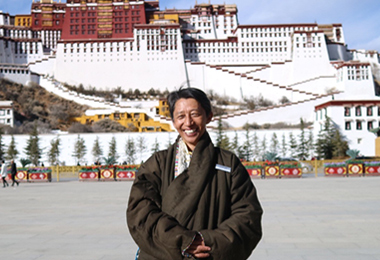
Personalized Care with Our Award-Wining Service Manager
Meet Mr. Kunga, our awesome customer service manager! He's here to help everyone, whether you've booked with us or not. With over 30 years of experience and having won the "National Golden Tour Guide" award in Tibet, he ensures that every client has a fulfilling trip.
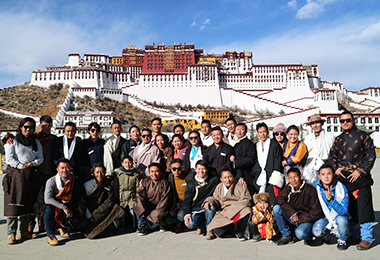
Elite Team: 40 Top Tibetan Guides at Your Service
Since 1984, we've been a local Tibet travel agency, and we now have an amazing team of 40 top Tibetan guides. They'll make your Tibet trip super enjoyable and comfortable, promising unmatched happiness and satisfaction!
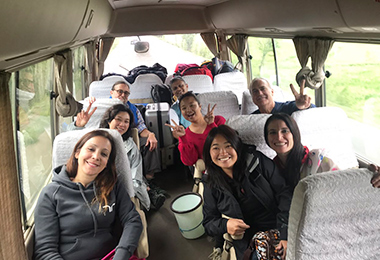
Experienced Drivers for Safe and Scenic Routes
Our skilled drivers make sure your journey is safe and fun, going through different routes like winding mountains and wide grasslands. Get ready for an amazing adventure exploring Tibet's beautiful landscapes with us! And don't worry—we always have oxygen and bottled water in our vehicles for your safety and comfort.
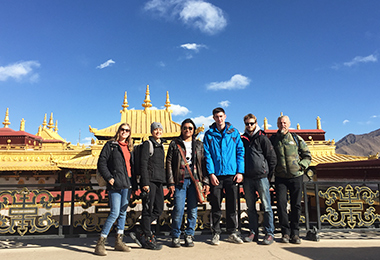
Pioneers in Small Group Tours with Varied Itineraries
We're the top Tibetan tour operator, focusing on small group tours—our specialty! Our trips offer classic experiences with lots of choices and often leave at great prices. No shopping pressure, just budget-friendly fun! Our groups stay small, maxing out at 12 people, and we get over 5,000 clients every year.
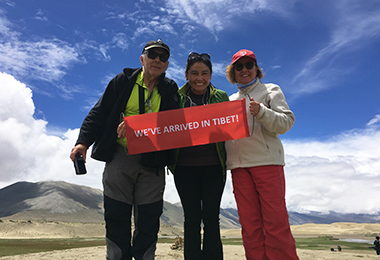
Guaranteed Tibet Permit and Complimentary Service
With 30+ years of experience, we provide you with a free Tibet Permit! Count on us to handle all your travel needs smoothly, ensuring your trip to explore stunning Tibet is stress-free. Your permit is our promise for an amazing adventure in the Himalayas!
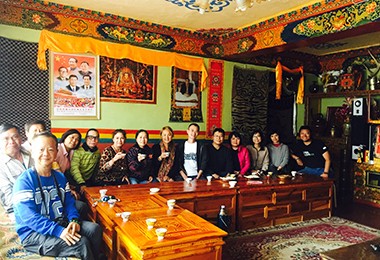
Supporting Local Communities through Tibetan-Owned Businesses
We only pick Tibetan-owned restaurants and hotels to help our community. Your trip with us directly helps the Tibetan community by supporting local businesses. Come embrace real Tibet and make a positive impact while exploring with us!
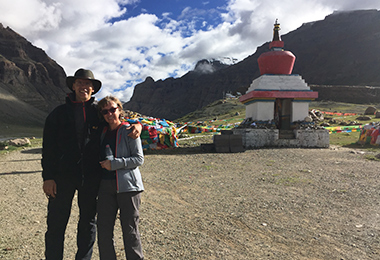
Authentic Exploration of Tibet's Rich Culture
Discover the real Tibet with us! We're dedicated to showing its true spirit and exploring its lively culture. Our aim is to give you an authentic experience, sharing the beauty and richness of Tibetan traditions. Come along for a journey deep into the heart of Tibet!
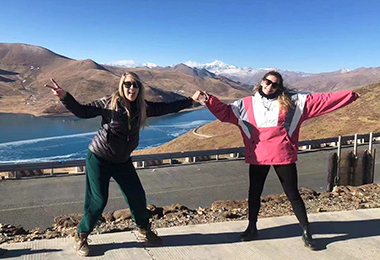
Unhurried Exploration of Every Destination
We never hurry on our tours, so you can enjoy every spot fully. We promise a relaxed pace, letting you take in each place on our list. Journey with us for a truly satisfying experience!
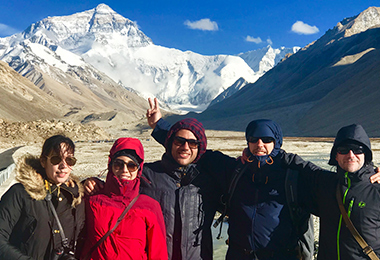
24/7 Support & Daily Communication with Guide
Feel safe with our 24/7 local support! Your safety and comfort matter most to us. We talk to our guides every day to keep your trip smooth. Count on us for ongoing help, making your journey hassle-free and fun. Relax knowing we're here for you throughout your adventure!
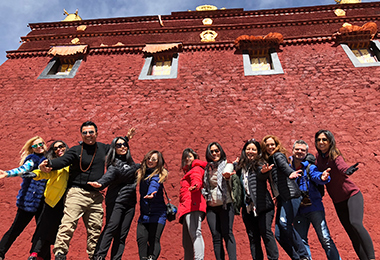
Constant Optimization for Superior Travel Experiences
Join us for amazing travel adventures! We keep making our trips better every year, improving quality wherever we go. We're dedicated to giving you the best service possible. Come with us on unforgettable journeys where every detail shows how much we care about making you happy!
What Our Customers Say
Once in a life time.
14 days from Beijing to Tibet and Nepal. The reality was beyond my expectations. A trip that I will remember for the rest of my life. The trip was arranged in an exceptional way! Laura Tang did an amazing job! She responded to all my questions immediately, she supported and solved any problems very quickly. The hotels she arranged for me were amazing!! ... More reviews
Nice view in winter!
The view was magnificent. got to see snow and snow capped mountains. Thanks to Gemma Wei for helping with all the planning. Also thanks to Kunchok and Tsering for going accomodating to my needs as i was not used to the altitude. They also helped alot with the trek up the hills! ... More reviews
Tibet is beautiful
The tour was great! We visited amazing places and could feel the sacred atmosphere in all the temples. The nature is breathtaking with beautiful mountain and lake views. Our guide Jingme told us all about the history and showed us great places. All the hotels were much better than what I expected... More reviews
Unforgettable Experience
The 8-day trip with Tibet Vista was remarkable, combining cultural depth with stunning Tibetan landscapes. Our guide Jig Me was really knowledgable, the journey well-organized, and each destination, especially Everest Base Camp, was a highlight. Great value; highly recommended... More reviews
Visiting Tibet with Tibet Visa agency is a once in a life time experience! They take care of everything and you just need to enjoy! Our tour guide was AMAZING... More reviews
Exploring Tibetan culture
Tibet vista made the entry process into Tibet super easy. Jing mei our guide had a wealth of knowledge about all the locations we visited and happily answered questions we had. Also organising a birthday cake for one of the guests showed how thoughtful he was... More reviews
Lhasa to Kathmandu
Can't recommend this company enough. We did it very last minute and got our Chinese visas a few days before we flew to Chengdu and got the train to Lhasa. Lycoris our contact was patient and reassuring over the applications. The trip itself was something else... More reviews
Private tour with guide and driver… wow!
After much research, my wife gave the desired itinerary to the agency rep that she was working with. It covered a huge area from Lhasa all the way West to the Ali area and back along a Northern route. Of course having a private driver and Land Cruiser along with a very experienced guide, the trip was just fantastic... More reviews
Best trip I have ever had
I just arrived home this morning after a one-month trip in India, Nepal, Tibet and Bhutan. I have travelled a lot in my life but this trip is the best trip I have ever had. It really stands out by its geographic particularity, historical and cultural knowledge and most of all, its emotional/spiritual impact... More reviews
Unforgetable Tibet
The trip was great, the view was amazing. Our tour guide, Gijme, is very professional and very knowledgeable about the sites and the history... More reviews
Similar Trips
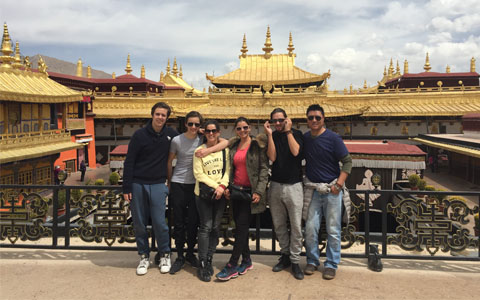
8 Days Tibet Bhutan Impression Tour
Tour Route: Lhasa-Kathmandu-Paro-Thimphu-Paro
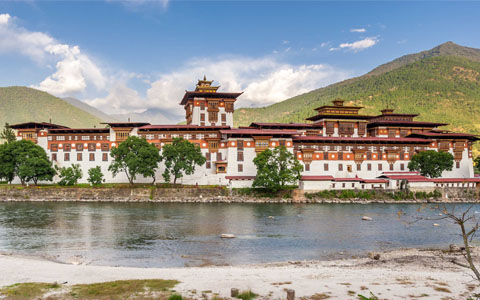
12 Days Tibet and Bhutan Scenic and Cultural Discovery Tour
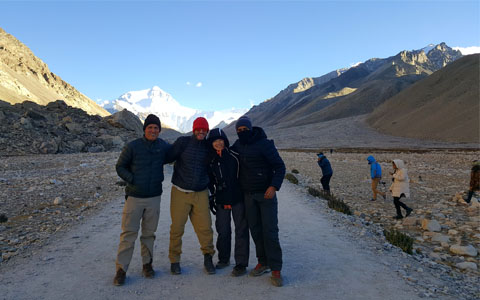
12 Days Tibet Bhutan Tour with Everest Exploration
Tour Route: Lhasa-Shigatse-EBC-Gyirong-Kathmandu-Paro-Thimphu-Punakha-Paro
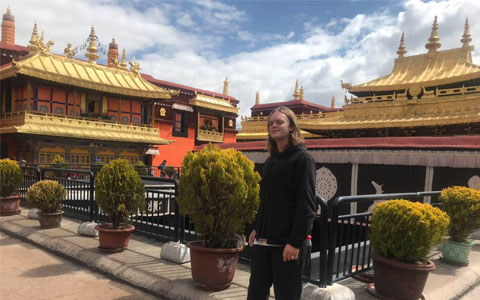
15 Days Chengdu Lhasa Everest Nepal Bhutan Tour
Tour Route: Chengdu-Lhasa-Shigatse-EBC-Kathmandu-Paro-Thimphu-Paro
Inquiry on - 18 Days Spiritual Journey to Tibet and Bhutan
Start planning your Tibet tour by filling out the form! Our travel counselors will reply you within 24 hours.
- Top 5 star hotel
- Standard 5 star hotel
- Comfortable 4 star hotel
- Economic/budget 3 star hotel
- Budget Guesthouse
- Video appointment
Budget Tibet Group Tours
- > 4 Days Lhasa Tour
- > 5 Days Lhasa & Ganden Monastery Tour
- > 6 Days Central Tibet Tour
- > 8 Days Everest Base Camp Tour
- > 15 Days Mount Kailash Tour
Our Best Tours
- > Tibet Small Group Tours
- > Tibet Nepal Tours
- > Tibet China Tours
- > Tibet Nepal China Tours
- > Tibet Train Tours
Office Address : Room 8102 (first floor) of Lhasa Gang Gyan hotel, Beijing East Road, Chengguan district, Lhasa.
News & Updates
Sign up to receive our newsletter for great articles, stunning photos, and special deals.
Featured On:
Exploring the Spiritual Journey in Tibet: Visiting Temples and Retreats

Embarking on a spiritual journey in Tibet involves exploring its serene temples and sacred retreats. Tibet, often referred to as the “Roof of the World,” offers a unique blend of breathtaking landscapes and profound spiritual experiences. This article delves into the essence of such a journey, highlighting key temples and retreats that you must visit.
1. Potala Palace: A Historical and Spiritual Icon
- Location and Significance : Situated in Lhasa, the Potala Palace is not just a stunning architectural wonder but also a symbol of Tibetan Buddhism.
- Experience : Visiting this historic site, you can expect to witness a blend of religious and cultural heritage, with impressive statues, murals, and ancient manuscripts.
2. Jokhang Temple: The Spiritual Heart of Tibet
- Cultural Importance : As the most sacred temple in Tibet , Jokhang Temple holds a special place in the hearts of Tibetan Buddhists.
- What to See : Marvel at the intricate architecture, and participate in the spiritual practices and rituals that are a daily occurrence here.
3. Samye Monastery: A Blend of Architectural Styles
- Historic Relevance : Known as the first Buddhist monastery in Tibet , Samye Monastery is a must-visit for its historical significance.
- Unique Features : The monastery showcases different architectural styles, representing the universality of Buddhism.

Want to know the price of tours? Need to ask for a travel permit? Feel free to contact us. Funtrip can discuss your planned itinerary, assisting with customized, comprehensive planning and cost estimation.
4. Drepung and Sera Monasteries: Centers of Learning
- Monastic Education : These monasteries are renowned for their scholarly environment and are key centers of Tibetan Buddhist learning.
- Activities : Engage in philosophical debates and observe the daily life of monks, providing a deeper understanding of their practices.
5. Mount Kailash: A Sacred Pilgrimage Site
- Spiritual Significance : Although not a temple, Mount Kailash is an essential part of any spiritual journey in Tibet, revered by multiple religions.
- Pilgrimage Experience : Undertake the Kailash Kora, a pilgrimage around the sacred mountain, for a truly transformative experience.
6. Retreats in Remote Locations
- Solitude and Reflection : Discover various retreats located in the remote corners of Tibet , offering solitude and an opportunity for deep spiritual reflection.
- Activities : Engage in meditation, yoga, and other spiritual practices in these serene settings.
A spiritual journey in Tibet is a profound experience, offering insights into Tibetan Buddhism and its practices. Visiting these temples and retreats allows for not just cultural immersion but also personal reflection and growth. Whether you are seeking spiritual enlightenment or simply wish to explore a unique culture , Tibet’s temples and retreats are destinations that should not be missed.
- What is the best time to visit Tibet for a spiritual journey? The best time is generally from April to October, with clearer weather and numerous festivals.
- Do I need special permits to visit these sites in Tibet? Yes, foreign visitors require a Tibet Travel Permit, which can be arranged through travel agencies.
- Is it suitable for beginners in spirituality to undertake this journey? Absolutely, Tibet’s spiritual sites are welcoming to everyone, regardless of their level of spiritual experience.
Questions or requests about travel to China? Feel free to reach out, we’d love to hear from you. We will reply to you within one day.

Things Need to Know: Understanding Healthcare for Expats in Beijing

Exploring Beijing: A Journey Through Time and Modernity for Expats
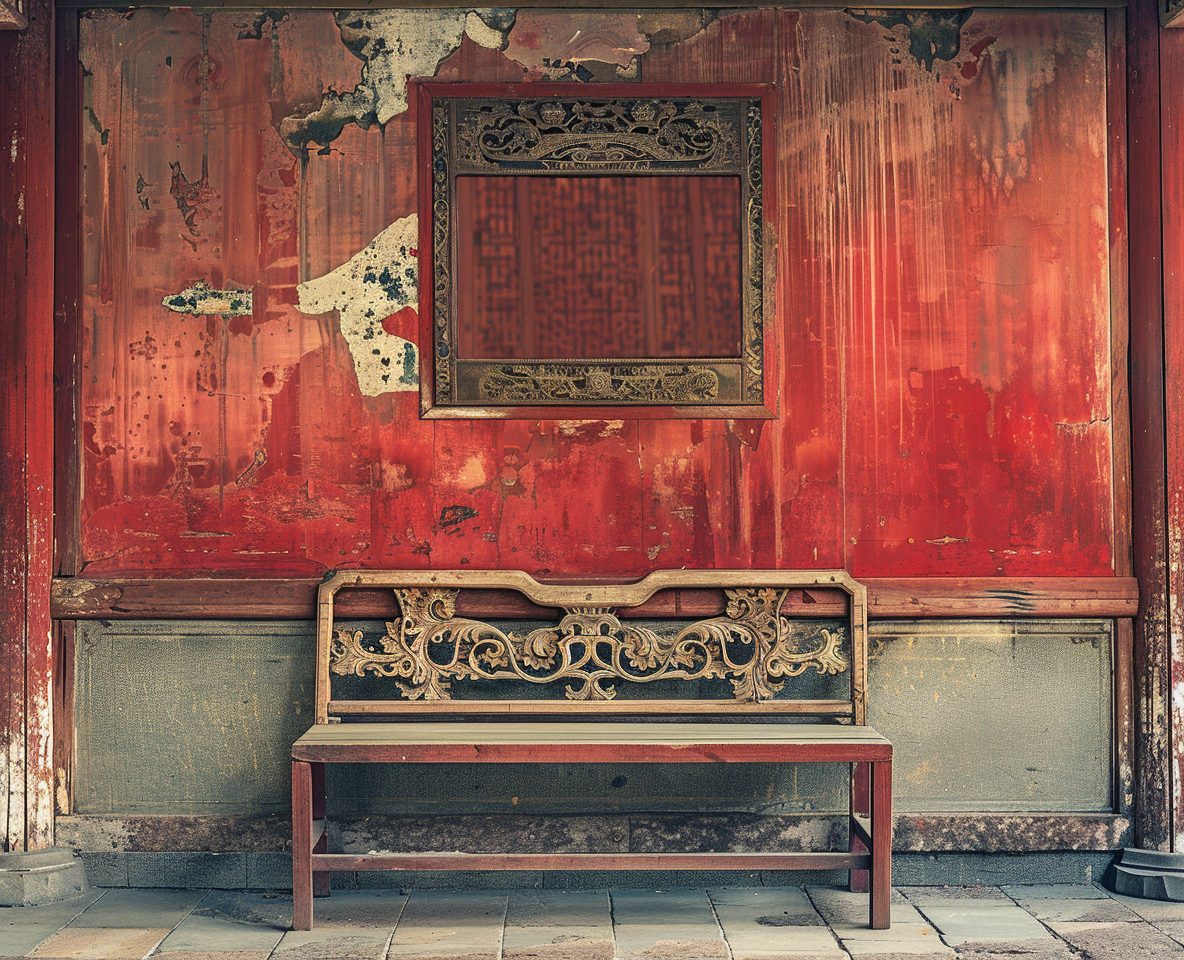
Imperial Elegance: Exploring the Cultural Significance of the Guifei Chaise Longue

Collect beautiful moments, start your journey.
Leave a reply cancel reply.
Blog at WordPress.com.
Discover more from Funtrip
Subscribe now to keep reading and get access to the full archive.
Type your email…
Continue reading

Kora, The circumambulation སྐོར་ར།
In the mystical land of Tibet, where the lofty Himalayan peaks touch the heavens, a profound practice called Kora holds great significance for Tibetan Buddhists. Kora, also known as circumambulation, involves walking in a clockwise direction around sacred sites, such as mountains, monasteries, and temples.
In this article, we will delve into the essence of Kora, its rich history, symbolic meanings, popular routes, rituals, benefits, challenges, and its impact on modern-day spirituality.
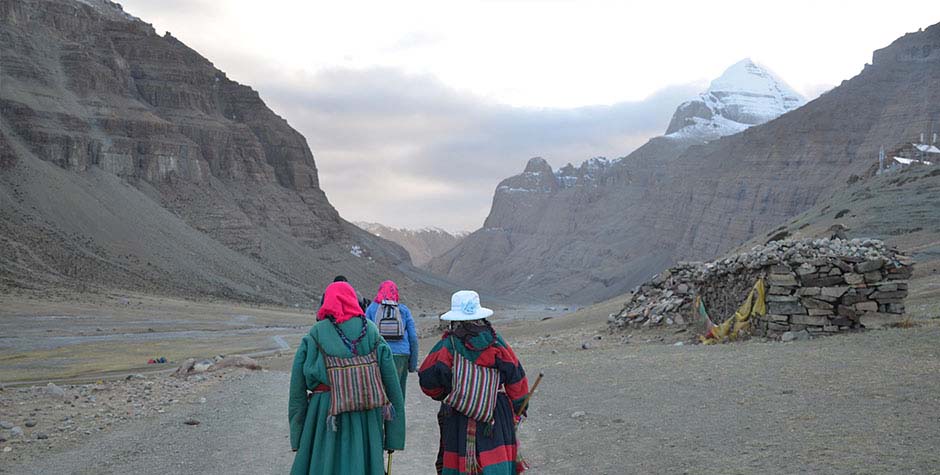
Introduction to Kora
Definition of Kora : Kora (བསྐོར་བ།), derived from the Tibetan word “khor,” means “circumambulation” or “revolution.” It is a sacred ritual of walking around a revered site, typically in a clockwise direction, as a form of devotion, meditation, and spiritual practice.
Significance in Tibetan Buddhist tradition : Kora holds deep religious and cultural significance in Tibetan Buddhism. It is believed to purify negative karma, accumulate merit, and bring spiritual transformation to practitioners.
Origin and History of Kora
Tibetan Buddhist beliefs and practices formed the foundation for Kora. Tibetan Buddhism incorporates elements of Bon, an indigenous pre-Buddhist religion in Tibet , which also had pilgrimage traditions. With the advent of Buddhism in Tibet in the 7th century, Kora practices intertwined with Buddhist teachings.
The introduction of Kora in Tibet is attributed to the famous Tibetan king Songtsen Gampo . He is believed to have ordered the construction of numerous sacred sites and initiated the tradition of circumambulating them. Over the centuries, Kora evolved and adapted, influenced by different Buddhist sects and local customs, resulting in a diverse range of Kora routes across Tibet.
Purpose and Symbolism of Kora
The primary purpose of Kora is to deepen one’s spiritual connection and progress along the path to enlightenment. It serves as a means to cultivate mindfulness, devotion, and compassion. By engaging in Kora, practitioners seek to purify their minds, accumulate positive merit, and overcome obstacles on their spiritual journey.
The circular path of Kora holds profound symbolism. It represents the cyclical nature of existence, the eternal cycle of birth, death, and rebirth. Each step on the Kora is a metaphorical step closer to liberation from the cycle of suffering.
Different Types of Kora or Circumambulation
While you are in Tibet. You will find Tibetan people circumambulation around Temple, Stupas , Monasteries and even the Entire mountain or Hill. The Object of Circumambulation of always of the higher spiritual importance. The Tibetan word for the pilgrimage is called Nekhor, གནས་སྐོར། Meaning circumambulation around the Object of veneration or Ne གནས་.
Ne generally falls into the following categories as is the Different type of Circumambulations.
1) Natural Sites:
We will find Tibetan people circulating the Natural sites like Spring, Lake, Rock, Cave and Sky Burial Sites. The most momentous of all the Ne or site is the holy mountains and lakes like Namtso lake , Mount Kailash . The kora associated with the natural site can be both easier and arduous long trek like Mount Kailash Kora which includes long distances, high passes and difficult terrains.
2) Man-Made Sites:
The second categories of the circumambulation site are the Made Site. It composes all the palaces, Temple, Monastery or even the entire city or town. The holiest made site for the circumambulation is the Jokhang Temple as it is considered the holiest of all temples or Monasteries in the inner Himalayas for it houses the holy statue of Sakyamuni Buddha . You will also people in Lhasa going to Kora around the Barkhor and Lingkhor ( the entire Old Town of Lhasa).
3) Holy person
All the holy people or Lamas are considered as important as the Buddha himself. When we recite the three refuge prayer ( the core prayer of any Buddhism). We in Tibetan Buddhism place our Guru or teacher even more important than buddha. So the Holy person becomes a very important Ne for Circumambulations. So where ever the holy lama’s or Holy person is residing You will find us make circumambulation around it.
Popular Kora Routes in Tibet
Tibet boasts several revered Kora routes, each associated with sacred sites and spiritual significance. Let us explore some of the most prominent ones:
1. Mount Kailash Kora : Located in western Tibet, Mount Kailash is considered the most sacred mountain in Tibetan Buddhism. The Kora around Mount Kailash is known as the ultimate pilgrimage, believed to bring immense spiritual merit and liberation.
2. Jokhang Temple Kora : Situated in Lhasa, the capital of Tibet, Jokhang Temple is a significant pilgrimage destination. The Kora around the temple is an integral part of the spiritual journey for Tibetan Buddhists. This Kora is also kown as Barkhor.
3. Potala Palace Kora : The iconic Potala Palace in Lhasa, the residence of the sussessive Dalai Lamas, holds historical and spiritual importance. The Kora around the palace offers panoramic views of Lhasa and is cherished by both pilgrims and tourists.
Rituals and Practices During Kora
Preparing for a Kora involves physical, mental, and spiritual preparations. Pilgrims often prostrate, make offerings, and chant sacred mantras as they walk the circular path. The rhythm of footsteps blends with the recitation of prayers, creating a meditative atmosphere.
Prostrations are a common practice during Kora, where practitioners lie face down, stretch their bodies, and touch their foreheads to the ground as an act of reverence. This physical act symbolizes humility, surrender, and the cultivation of a compassionate heart.
In addition to prostrations, devotees may also carry prayer wheels, spin prayer beads, or hold prayer flags, further enhancing the spiritual ambiance of the Kora.
Benefits and Rewards of Kora
Participating in Kora offers various benefits and rewards to practitioners:
Purification of negative karma : Kora is believed to cleanse past negative actions, thoughts, and emotions, thereby purifying one’s karma and paving the way for spiritual growth.
Accumulation of merit : Each step taken during Kora is considered an opportunity to accumulate positive merit, leading to favorable conditions for future lives and spiritual progress.
Spiritual transformation : The intense devotion, contemplation, and immersion in the spiritual practice of Kora have the potential to bring about profound transformations in the practitioner’s mindset and consciousness.
Challenges and Obstacles of Kora
While Kora is a spiritually fulfilling practice, it is not without challenges and obstacles. Pilgrims undertaking Kora face physical hardships, such as high altitudes, treacherous terrains, and extreme weather conditions. The arduous journey requires endurance, resilience, and a strong determination to overcome these obstacles.
Moreover, Kora presents mental and emotional challenges as well. The mind may wander, distractions may arise, and doubts may cloud the practitioner’s focus. Maintaining unwavering devotion, concentration, and mindfulness throughout the Kora requires inner strength and discipline.
Kora as a Pilgrimage Destination
The allure of Kora extends beyond Tibetan Buddhists; it attracts pilgrims and spiritual seekers from all walks of life, regardless of their religious background. The pilgrimage routes have become hubs of cultural exchange, where people from diverse backgrounds come together in search of meaning, connection, and personal transformation.
The influx of pilgrims has brought economic and cultural benefits to local communities. The growth of infrastructure, accommodations, and services has provided employment opportunities and contributed to the economic development of regions associated with Kora routes.
Preservation of sacred sites is of paramount importance to ensure the sanctity and integrity of the Kora experience. Efforts are made to maintain and restore ancient monasteries, temples, and natural landscapes to safeguard the spiritual heritage embedded in these sacred sites.
Modern-Day Adaptations of Kora
In the age of technological advancements, Kora has undergone modern adaptations to cater to the needs of contemporary practitioners. Virtual Kora experiences now exist, allowing individuals to engage in circumambulation digitally, bringing the essence of Kora to those unable to undertake physical pilgrimages.
Kora practices have also transcended the borders of Tibet, spreading to different parts of the world. Buddhist centers and monasteries outside Tibet offer Kora opportunities, enabling individuals to experience the spiritual essence and connect with the profound teachings of Tibetan Buddhism.
Western spiritual seekers have been drawn to Kora as a transformative practice that resonates with their own spiritual quests. The circular path of Kora serves as a metaphorical journey inward, a quest for self-discovery, and an opportunity to explore the depths of consciousness.
Conclusion of Kora
Kora, the sacred practice of circumambulation, is a cherished tradition in Tibetan Buddhist culture. It holds profound spiritual significance, symbolizes the eternal cycle of existence, and offers a transformative experience for pilgrims. As pilgrims walk the circular paths, they seek purification, accumulate merit, and embark on a journey toward spiritual awakening. Kora routes in Tibet, such as Mount Kailash, Jokhang Temple, and Potala Palace, attract devotees and curious travelers alike, contributing to the cultural and economic vitality of the region. In the modern era, virtual Kora experiences and the global spread of Kora practices have made this sacred tradition accessible to a wider audience. Whether walking the physical path or exploring the inner realms of consciousness, Kora remains a powerful and revered practice that continues to inspire and uplift countless spiritual seekers
FAQs on Kora
How long does a typical Kora take to complete?
The duration of a Kora varies depending on the specific route and individual factors. Some Kora routes can be completed in a few hours, while others may take several days or even weeks.
Can anyone participate in a Kora?
Yes, anyone with the physical ability and sincere intention can participate in a Kora. It is open to people of all ages, backgrounds, and religious beliefs.
Are there any age restrictions for Kora?
There are no strict age restrictions for Kora. However, certain Kora routes may involve challenging terrain and high altitudes, requiring a certain level of physical fitness and endurance.
What should one wear during a Kora?
It is advisable to dress modestly and respectfully during a Kora. Comfortable and layered clothing, suitable for the weather conditions, along with sturdy walking shoes, is recommended.
How can I prepare myself physically and mentally for Kora?
Physical preparation includes regular exercise, building stamina, and acclimatizing to high altitudes if necessary. Mental preparation involves cultivating mindfulness, devotion, and a positive mindset. It can be helpful to engage in meditation and familiarize oneself with the teachings and practices associated with Kora.
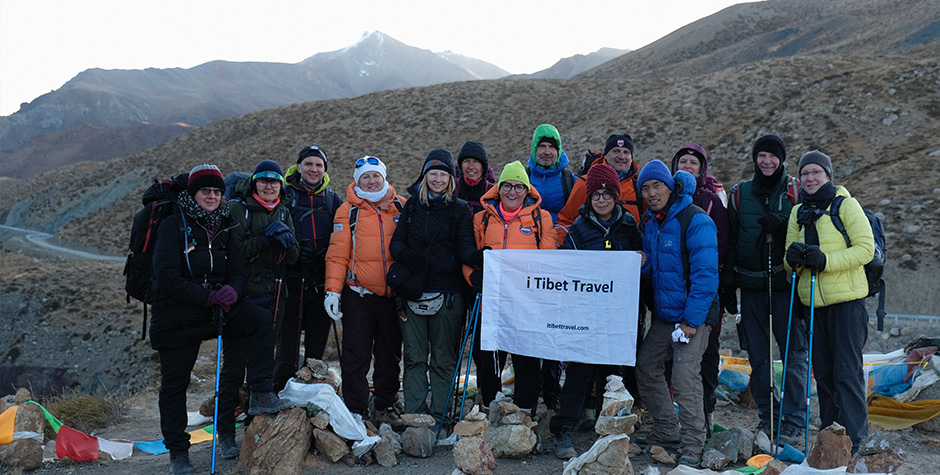
Design Your Tibet Travel Experience
Receive a personalized itinerary from a top-rated local tour operator in Tibet.
About Tibet Travel & Tours
Tibet Travel & Tours is a local travel agency in Tibet that offers unique and authentic experiences to travelers from all around the world. As a leading tour operator in Tibet, we provide high-quality Tibet Travel services that are tailored to our clients’ needs and preferences.
Our team of experienced and knowledgeable professionals strives to ensure that our clients have a hassle-free and memorable trip in Tibet . We specialize in various types of tours, including cultural tours, trekking and hiking tours, and adventure tours.
Our commitment to providing exceptional service has earned us a reputation as one of the best local travel agencies in Tibet . Contact us today to plan your unforgettable trip to Tibet.
Explore Tibet with a local Tibetan Travel Agency
If you’re looking to explore Tibet, starting your journey with a reputable Tibetan travel agency in Tibet is crucial. Tibet Travel & Tours is a great choice to begin your adventure with their extensive knowledge of the region and commitment to responsible tourism.
Their Tibet tour packages cater to a range of interests and budgets, making it easy to plan a trip that suits your needs. Before embarking on your tibet tour , it’s essential to have the right Tibet travel information and necessary documents, including a Tibet travel permit .
The Tibet Travel Planner provided by i-Tibet travel is an excellent resource to plan your trip, including tips on what to pack, where to stay, and what to see.
For beginners, the “ About Tibet ” guide provided by i-Tibet travel offers a comprehensive overview of the region’s history, culture, and top attractions. So, start your Tibet travel plan here with i-Tibet travel and discover the magic of Tibet for yourself.
Related Posts
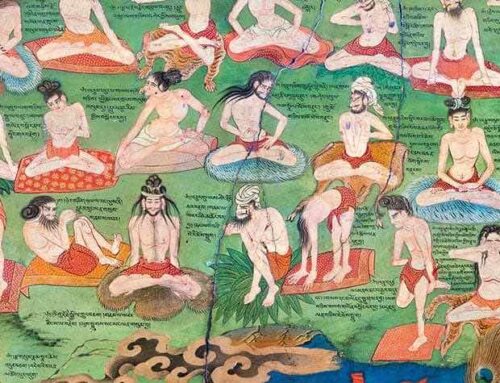
Tibetan Yoga
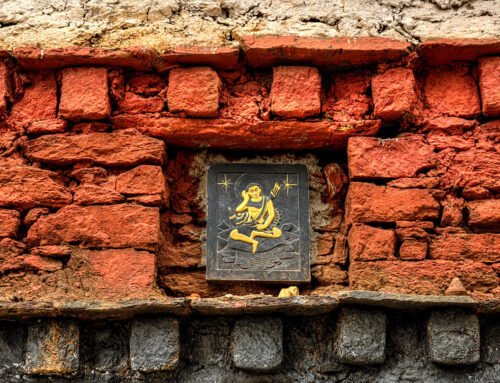
Drukpa Kunley
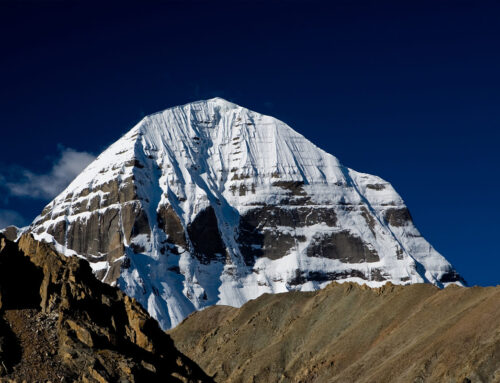
Four Faces of Mount Kailash
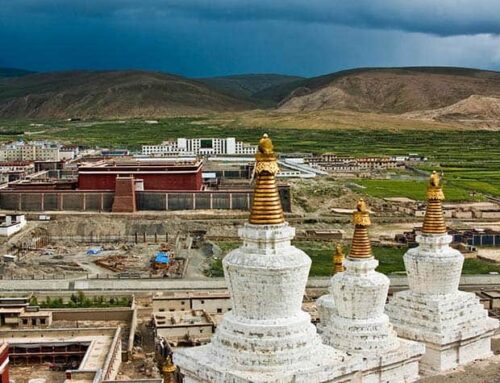
Sakya Sect of Tibetan Buddhism ས་སྐྱ།

Bön Religion བོན་པོ།
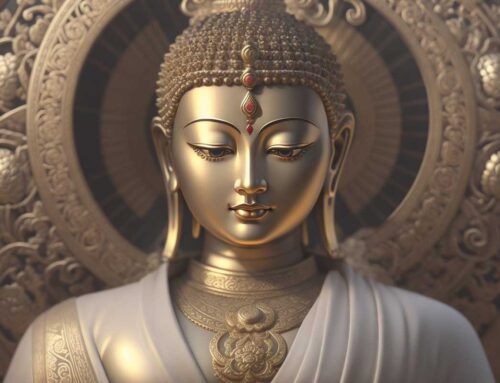
The Four Noble Truths འཕགས་པའི་བདེན་པ་བཞི།
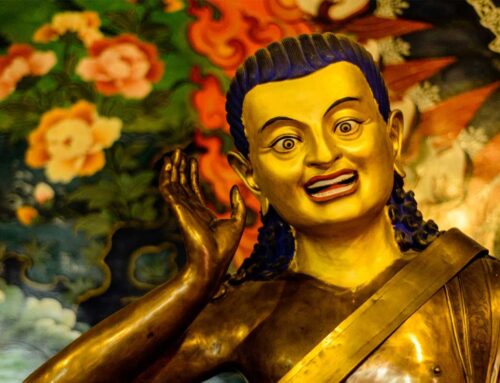
Mahamudra ཕྱག་ཆེན།
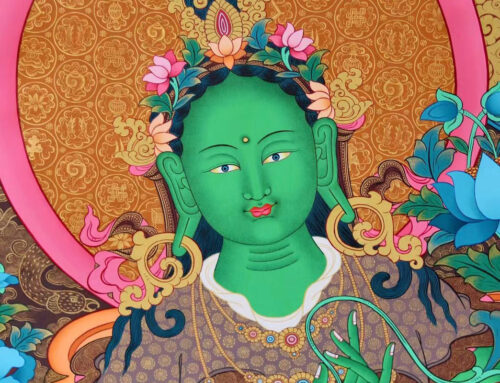
Tara, Tibetan’s fairy godmother
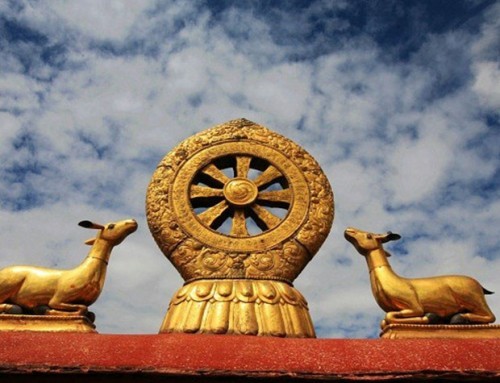
Buddha Dharma
Friday, 5 April, 2024

Find your true self through a spiritual journey to Tibet

Brussels Airlines to strike between 23-25 June

IATA urges governments to ensure safe aviation systems with 5G services

Alexandra Figueiredo is a journalist and communication consultant with a postgraduation in Psychological Assessment. She’s specialized in health journalism and in medical and scientific consultancy. Worked as a radio newscaster and was journalist at SIC Notícias, Expresso, and in two RTP programs, between others. Also coordinated a health program for RTP TV channel. She won several poetry contests, having published poems. She was director of a solidarity association chaired by the former Minister of Health Ana Jorge and was press advisor for the former President of the Portuguese Republic, Dr. Jorge Sampaio, during his time as Ambassador of Tuberculosis in the World. You can follow Alexandra on Instagram .
Spirituality has precious teachings for the daily living of the human being, for which it is indispensable to understand where we can feed on lessons that could be fundamental in our lives.
One of the destinations where this spirituality can be found is Tibet, where nature and spirituality come together in perfect harmony.
In the Himalayas mountain range, you can follow the most beautiful roads going through mountains and embark on a rail journey of the highest point in the world. Along the trip you will immerse yourself in the ancestral mystic of Tibetan Buddhism, discovering monasteries, palaces and stupas . Feel Lhasa’s sacred atmosphere, the “Place of the Gods” and bring unique memories of these experiences with you, as well as that of the majestic Everest, a divine symbol of the local culture. Diving in the teachings of Tibetan Buddhism is like rebirth.
The origin of Tibetan Buddhism
As we recall from the historical perspective, Buda Sakiamuni was an Indian prince who in the first half of his life was surrounded by comfort. Later, negative aspects that affected him profoundly started to appeared, among which disease, ageing and the fear of death. All of these made him see life in a new light and led him to become a monk and dedicate himself to extremely rigorous meditation practices that allowed him to reach the so called enlightenment, which he then started teaching based on his experience.
Everything started in the region of Sarnat, India, from where he spread the message of his first teachings, by introducing the Four Noble Truths . These lessons constitute the foundation of Buddhism for all those who wholly accept them.
What are the Four Noble Truths ?
The Truths of Suffering, of the Causes of Suffering, of the Cessation of Suffering and of the Path that is followed to reach the Permanent Cessation of Suffering. It is also important to know that among Buddhism different schools of thought are also found, such as the School of the South, the School of the North (Inaiana) or the Mahaiana School. The three main teachings from Buddha are called The Three Turnings of the Wheel (Dharma).
These lessons seek to demonstrate that all beings want to reach happiness and distance themselves from suffering. It should be noted, however, that joy and suffering depend on the causes and conditions of the Law of Cause and Effect .
To stay away from suffering, we need to know its causes, as well as whether it is possible to overcome them. For Buddhists, there is a continued transformation, and things do not happen by the will of a Creator but depending on causes and conditions.
Tibet, an unforgettable journey…
Day 1: Xining: Cultural richness and ethnical diversity
To better dive into the deepest spirituality, go to Tibet.
Begin your trip in Xining, from where you can travel to the north of Amdo, one of the provinces of ancient Tibet that does not integrate the current Tibet Autonomous Region (TAR).
In Amdo, Tibetan culture strongly shows itself and stays preserved as in few other places. Tenzin Gyatso, the current Dalai Lama, was born here and the Tibetan nomads continue to migrate to this region.
Xining, capital of the province of Qinghai, has more than 2 million inhabitants and its cultural richness results from the ethnical diversity that converges here.
Ver esta publicação no Instagram Uma publicação partilhada por SnowLion Tours – Tibet (@snowliontours)
Day 2: Xiàhé: a Monastic city full of life
Along the road, we start to see the mountains of Amdo rise in the landscape.
Head south to explore the prairie of Ganjia. The Tibetan life is traditionally lived in the prairies. Later, it is time to visit the temple of Bon, the religion that existed in Tibet before Buddhism.
The natural beauty of Amdo will guide you to Xiàhé, a monastic city located at 2920 metres of altitude. This is one of places in the world where the monastic day-to-day life of Tibetan Buddhism is stronger.
You will feel surrounded by an absolutely mystic environment, created by the light from yak milk lamps and the monks that wander about to the rhythm of their daily routine. You will also feel fascinated by the grand doors decorated with the Tibetan symbol of the Endless Knot, all in a scenery framed by magnanimous mountains.
Ver esta publicação no Instagram Uma publicação partilhada por Mikel (@thecatalanboss)
Day 3: Labrang: so many places to meet
In this spiritual area, the kora , a ritual in which you do circles around a monastery, starts at dawn.
This is one of the sites where you can easily connect yourself with the depths of the spirituality brought by this solemn moment. Join the monks in the morning prayers and you will feel an inexpressible peace.
Labrang is one of the most evoked monasteries in Tibetan Buddhism and where over 2 thousand monks inhabit today. Around it, many buildings give life to this emblematic place. From the chapels to the monks’ residences, the prayer halls, the tratsang (buddhist colleges or institutes) and the prestigious Institute of Tibetan Medicine, there are numerous locations to know.
Do not resume your journey without committing the sin of gluttony a little, and tasting the traditional yak yogurt prepared by the locals, while you do a short trek along the beautiful landscapes of Sangke.
Ver esta publicação no Instagram Uma publicação partilhada por kristel ouwehand(Tenzin Dolma) (@snowlandartists)
Day 4: Monastery of Wútún Sì: Feel the art
One of the most important schools in the world, where you can find the famous Thangkas. Thankgas are sacred paintings which originated in the 8 th century and are a fundamental part of the artistic expression in Tibetan Buddhism.
Ver esta publicação no Instagram Uma publicação partilhada por Xana Pessoa (@pessoaxana)
Day 5: Lhasa, the heart of Tibet
Taking the train to Lhasa, will take you 22 hours on the rails that cross the Tibetan Plateau. Look at the mountains through the window and admire the nomad camps that spread across the green prairies for almost 2000 kilometres.
In the second half of the route, between Golmud and Lhasa, the trip will be almost always above 4000 metres of altitude. The highest point is Tanggula, which imposes itself at 5072 metres. The journey allows the body to get used to the slow rise in altitude and the trains offer good conditions for a comfortable acclimatisation. Later, the night will bring you a starry mantle to gaze at.
You will finally see Lhasa, standing from its 3940 meters, which is the heart of Tibet and the sacred center of Tibetan Buddhism.
Lhasa means “Place of the Gods” and here you will find some of the most important monasteries and palaces belonging to this culture. Many Tibetans go to Lhasa in pilgrimage, at least once in a lifetime to do the kora of the Jokhang temple.
This sacred and multicultural city has a lot to discover. Visit the Palace of Potala, which we will describe further on, and the Jockhang temple, the most important of Tibet, as it is considered the spiritual core of Lhasa and the great reference of Tibetan Buddhism for the followers of the faith all over the world. Wander about in the narrow but mysterious streets of the old neighbourhood of Barkhor, so full of secrets to tell.
Make sure you also visit the Sera Monastery where you will be able to watch the ceremony of the Debate, a fundamental event in the studies of Tibetan Buddhism. Here, monks gather in pairs and one of them inquires the other about a determined teaching – the apprentice studies it from all angles. There is a whole ritual involving this symbolic moment of apprenticeship. This is one of the three major monasteries and universities of the Gelugpa Order of Tibetan Buddhism.
Ver esta publicação no Instagram Uma publicação partilhada por Travel.cruise (@travel.cruise.world)
Day 6: Eat, Pray, love
We start our day in the Tsankhung convent (right in the heart of Barkhor, in Lhasa), where about 150 female monks reside. Morning starts with a prayer, accompanied by Yack Tea and the traditional bowl of tsampa , made from barley wheat and yack butter. The convent smells like the burning butter candles and pilgrims circle in the central part of the temple, offering butter so that the grand candles remain lit.
We now follow to one of Lhasa’s (and Tibet’s) most emblematic monuments: the imposing Palace of Potala, former residency of the Dalai Lamas. Built in 1645, the palace has over 1000 halls and over 10000 sanctuaries, as well as 200 thousand images. Before, it was a small city within the city, with chapels, schools, prisons and tombs for the Dalai Lamas. Nowadays, it is a museum of reference and an inspiration for both travellers and pilgrims.
Ver esta publicação no Instagram Uma publicação partilhada por VHS_Austria (@vhs_travel_lovers)
Day 7: The scenic Friendship Highway
This is the road that connects China to Nepal. Along its course, you will go through Kampala at 4797 metres of altitude, and the lap of Karo at 5050 metres. Peek at the Kagsang glacier at an altitude of 7206 metres. A small detour could take you to explore one of the three sacred lakes of Tibet, the Yamdrok Tso, the scenery will be unforgettable.
Ver esta publicação no Instagram Uma publicação partilhada por ༄ཿ TIBETAN Portraits བོད། བོད་པ། བོད་མི། བོད་རིགས། ✊🏽👊🏽 (@tibetanportraits)
Day 8: The Everest: “Goddess Mother of the Universe”
Everest means “Goddess Mother of the Universe”.
For Tibetans, each mountain is home to a God, and, according to local belief, Everest is the address of Miyo Langsangma, one of the five goddesses of longevity.
After Gyatso La, the Everest will finally unveil itself. It imposes itself majestically between the range of the Himalayas. From the Friendship Highway, take an unpaved road to the Camp Base of the Everest, the place where the first expeditions departed to reach the peak of this mountain. On your way you will enjoy a magnificent scenery: the grand range of the Himalayas will appear in the horizon along with the grand mountains Makalu (8463 m), Chomo Lonzo (7816 m), Lhotse (8516 m), Nuptse (7861 m), Cho You (8201 m), Shishapangma (8013 m) and the inevitable Everest (8848 m). During the night, marvel at the Milky Way.
Ver esta publicação no Instagram Uma publicação partilhada por Everest Base Camp Trek 📍🇩🇪 (@everestbasecamptrek)
Day 9: Monastery of Tashilhunpo: do the Kora around the hill
Containing numerous buildings and stupas , this is one of the most impressive monasteries in our itinerary. Tashilhunpo was one of the temples least affected by the Cultural Revolution. You might opt out of doing the kora , and instead take the route around the hill where the monastery lies and enjoy the unique landscape that such altitude offers us. You will feel at absolute peace.
Ver esta publicação no Instagram Uma publicação partilhada por Tibet Travelers (@tibettravelers)
Day 10: Lake Namtso: dive in the “Sacred Lake”
Because water is life and purification, you can dive in this lake of extraordinary beauty. It is the salted lake at highest altitude in the world, at about 4718 meters. It reaches 33 meters at its deepest point.
The water comes from the rain and the melting of the Nyenchen Tonglha, mountain range that surrounds the Namtso, which means “sacred lake” in Tibetan and, believe it or not, you will find your true essence when you walk here, where the extraordinary beauty that surrounds the lake will invite you to introspection and reflection. An extraordinary voyage that ends here, but which will no doubt lead you to a better knowledge of yourself and others, and to absolute spiritual serenity.
Ver esta publicação no Instagram Uma publicação partilhada por @travel_with_tobi
You may be interested in reading

5 places to visit during tulip season in the Netherlands

China unveils driverless AI vehicle that drifts like a pro

China Southern Airlines announces 17 new international routes for 2024

How China is connecting Southeast Asia by high-speed rail
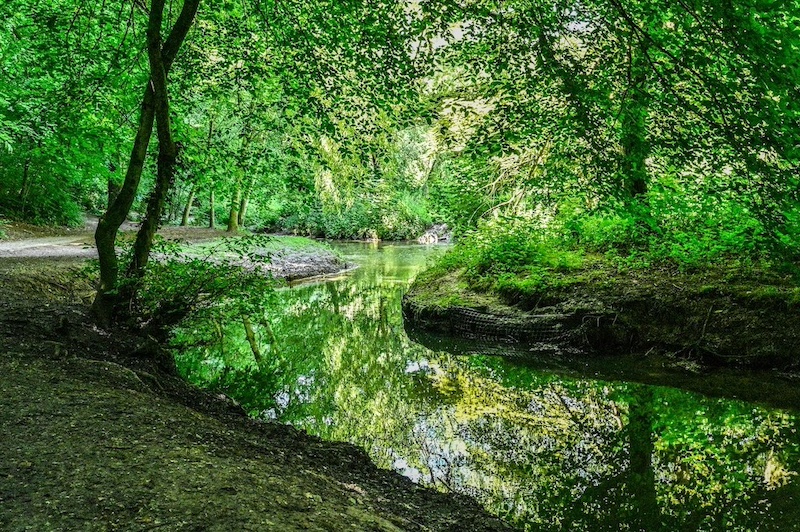
8 of the most beautiful UK forests
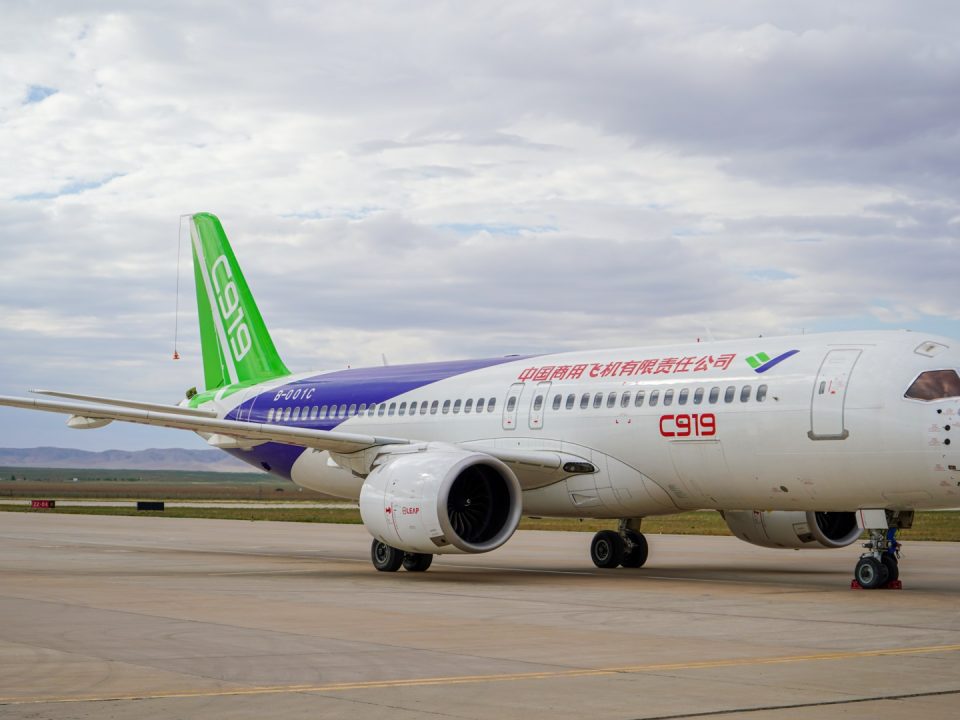
Could the first passenger plane made in China compete with Airbus and Boeing?

China’s latest tourist attraction is a toilet

Belgium to open historic Westmalle Castle to public early in 2025


Embark on a spiritual quest to Mount Kailash, Tibet
Mount Kailash, located in the remote corners of Tibet , stands as a symbol of purity and spirituality. This sacred mountain is revered by millions across different faiths including Buddhism, Hinduism, Jainism, and Bon. Not just a pilgrimage site, its untouched natural beauty and the challenging journey to reach it make Mount Kailash a unique destination for adventurers and spiritual seekers alike.
Trekking the sacred path
The kora or circumambulation of Mount Kailash is an essential part of the journey. Spanning about 52 kilometers, this trek takes you through rugged terrains, offering breathtaking views of the mountain and surrounding landscapes. It's not just a physical challenge but also a spiritual experience. Trekkers usually complete this journey in three days, staying at guesthouses or monasteries along the way.
Exploring Lake Mansarovar
Close to Mount Kailash lies Lake Mansarovar, one of the highest freshwater lakes in the world. Believed to be created by Lord Brahma in Hindu mythology, its crystal-clear waters are said to cleanse sins. Pilgrims often perform rituals and take holy dips here. The serene beauty of the lake against the backdrop of snow-capped mountains is mesmerizing.
Witnessing Saga Dawa Festival
If your visit coincides with the full moon day of the fourth lunar month (usually May or June), you'll have the unique opportunity to witness the Saga Dawa Festival at Mount Kailash. This festival celebrates Buddha's birth, enlightenment, and nirvana with much fervor among Tibetan Buddhists. Observing or participating in these sacred ceremonies offers deep insight into Tibetan culture and spirituality.
Practical tips for travelers
Planning a trip to Mount Kailash is essential due to its isolation and extreme conditions. Travelers must use an authorized agency, as going alone is not permitted in Tibet. Get all permits through your agency ahead of time. To prevent altitude sickness, it's important to acclimate by spending time at high altitudes before beginning the trek.

Discovering Spirituality: 7 Places That Connect Us All
T he human spirit, throughout history, has been drawn to places that resonate deeply with our sense of purpose and connection. These special locations across our planet have been imbued with significance, often echoing tales of ancient cultures, rituals, and spiritual beliefs. Delving into the depths of such places not only educates us but also connects us to our shared human heritage.
1. Varanasi, India
Varanasi, with its ethereal charm, captures the very essence of spiritual India. Nestled along the Ganges, this city has been a melting pot of religious fervor, traditions, and mystical experiences.
- Age-old Legacy: Varanasi is one of the world's oldest continually inhabited cities. It has borne witness to countless rituals, ceremonies, and whispered prayers over millennia.
- Sacred Significance: For Hindus, the Ganges isn’t just a river—it's the embodiment of sanctity. Bathing in its waters or having one's ashes spread upon it is believed to offer moksha, or liberation from the cycle of rebirth.
- Temples and Ghats: The city teems with temples, each narrating a unique spiritual tale. The ghats—steps leading down to the river—are venues for daily spiritual ceremonies, offering a visual and sensory treat for anyone visiting.
2. Jerusalem, Israel
A city sacred to three of the world's major religions—Judaism, Christianity, and Islam—Jerusalem stands as a testament to faith's enduring power and the lengths humans will go to safeguard their beliefs.
- Holy Nexus: The Western Wall, Church of the Holy Sepulchre, and the Dome of the Rock are more than architectural marvels; they're the beating heart of Jerusalem, each reverberating with prayers and hopes of countless souls.
- Centuries of Faith: The history of religious coexistence and conflicts, intertwined with the city's alleys and stone pathways, offers a deeper understanding of the significance this city holds for millions worldwide.
3. Machu Picchu, Peru
Perched atop the Andes, the ruins of Machu Picchu are remnants of the Incan empire, drenched in history and spiritualism.
- Sun Worship: The Incans venerated Inti, the Sun god. The precision with which Machu Picchu is constructed to capture the sun's rays during solstices is testimony to this devotion.
- Mysteries Unveiled: The reasons for building this monumental city and its subsequent abandonment remain subjects of intrigue. Yet, the energy felt here—be it due to its altitude or its history—can't be denied.
4. Uluru (Ayers Rock), Australia
Emerging from Australia's desert landscapes, Uluru is more than just a geological wonder—it's a spiritual beacon for the Anangu people.
- Dreamtime Stories: For the Anangu, every crevice and shade on Uluru narrates a story from Dreamtime, their ancient mythology.
- Connection with Land: Uluru is deeply entrenched in Tjukurpa, the traditional law, which dictates their relationship with the land, animals, and each other.
5. Mecca, Saudi Arabia
The very name 'Mecca' evokes a sense of profound reverence among Muslims. As the epicenter of Islamic faith, it pulses with spirituality and devotion.
- Birthplace of Prophet: Prophet Muhammad was born here, and it's where the revelations of the Quran were first received.
- Hajj: Every year, millions undertake the pilgrimage, making their way to the Masjid al-Haram and the Kaaba. It’s an act that underscores the deep spiritual significance Mecca holds in the hearts of believers.
6. Sedona, USA
Tucked away in Arizona, Sedona with its arresting red rocks and verdant valleys, is a spiritual haven known for its energy vortexes.
- Native Foundations: For Native Americans, Sedona has always been sacred, offering a connection to ancestral spirits and the earth itself.
- Energy Vortexes: Many believe that Sedona is a hotspot for cosmic energy, making it a sought-after destination for those on spiritual quests and retreats.
7. Mt. Kailash, Tibet
Rising majestically in Tibet, Mt. Kailash isn't just a peak. It's the spiritual apex for various religions, each seeing it as a path to enlightenment.
- A Multifaceted Beacon: Hindus view it as Lord Shiva's abode, while for Buddhists, Jains, and Bönpos, it holds varying yet profound spiritual significance.
- Pilgrimage for Purification: The journey around Mt. Kailash, despite its physical demands, is undertaken by many in the belief that it purifies the soul, offering a fresh start.
Why These Places Matter
Understanding these places isn't just about learning history or geography; it's about grasping the essence of human beliefs and the lengths to which we go to seek spiritual fulfillment. They remind us of our intrinsic need for connection, reflection, and understanding in a fast-paced world. They stand as testament to our shared heritage, bridging past, present, and future.
These spiritual hotspots, scattered across the globe, serve as reminders of our shared human quest for purpose and connection. Their tales of faith, hope, and resilience inspire us to look beyond the mundane and seek deeper meanings, guiding us in our journeys, both outward and inward.


IMAGES
VIDEO
COMMENTS
Tibet Spiritual Tour Overview. Tibet spiritual tour: Awaken your own spirituality and open your heart through a deep connection with the people and culture of the Rooftop of the World. Tibet's spiritual tour offers an experience full of inner awakenings.It traces the footsteps of Tibetan pilgrims, who often spend six months to a year on the road as they journey to Tibet's most sacred places.
Drak Yerpa Retreat. Drak Yerpa Monastery is one of the four major meditation retreats in Tibet. It was built in the 7th century and has a history of 1,500 years. Located about 20 kilometers northeast of Lhasa, it belongs to Dazi County. Unlike the surrounding mountains with only a shallow layer of turf on the surface, the mountain where Drak ...
According to Hindu Mythology, the lake is the epitome of purity. This freshwater lake is a pilgrimage site for Hindus and other religions, and part of the Tibet spiritual retreat. It is located 15,060 ft above sea level. 2. Lhasa. Lhasa is the administrative capital of the Tibet Autonomous Region of China.
Welcome to book 14 days Kailash Everest Group Tour! Local. $ 1.900 $ 1.730. view tour. 14 Days. Kailash,West Tibet. 5-6/10. Sacred and spiritual Tibetan journeys provides a unique travel experience. Tibet Travel Expert offers Tibet spiritual tours,sacred sites tours, retreats and many other types of Tibet Tours.
A spiritual journey to Tibet The Spiritual Heart of Tibet. Tibetan Buddhism is deeply ingrained in the fabric of Tibetan society, and its influence can be felt in every aspect of life. From the magnificent monasteries that dot the landscape to the prayer flags fluttering in the wind, spirituality is an integral part of the Tibetan way of life.
10 Days Spiritual Journey is a tour itinerary based on suggestions from clients. The tour provides you to discover Tibet's most profound spiritual and cultural elements.
Embark on an unforgettable journey to Tibet, a land that beckons with its spiritual allure and natural wonders. From the rich cultural heritage to the enigmatic beauty of the Tibetan Plateau, this extraordinary destination promises an experience that will leave a lasting impression.
A spiritual journey to explore the sacred sites of Tibet is a profound and enlightening experience that allows individuals to connect with their inner selves and explore the depths of their spirituality. This journey takes individuals to some of the most revered and sacred sites in Tibet, each holding immense importance and significance in the […]
Tibet holds great spiritual significance for many people around the world. The region is known for its rich spiritual traditions and practices, Book Now! Login ; ... For those seeking a deeper connection with their spirituality, a journey to Tibet can be a transformative experience. The peacefulness and serenity of the region, combined with the ...
"Eight Days of Enlightenment: A Spiritual Journey Through Tibet" is a captivating account of a life-changing spiritual journey undertaken by the author in the mystical land of Tibet. The book takes readers on an immersive journey through the stunning landscapes, ancient monasteries, and profound teachings of Tibetan Buddhism. The author embarks on an eight-day pilgrimage
Embarking on a 7-day journey through Tibet is an experience of a lifetime. From the enchanting city of Lhasa to the serene lakes, majestic mountains, and vibrant festivals, Tibet offers a unique blend of spiritual exploration, natural beauty, and cultural immersion. Plan your trip carefully, respect the local customs, and open your heart to the ...
A spiritual retreat with Alexander Northern Deer. Visiting The Potala palace. Visiting Some of The Oldest and Most Sacred Monasteries of Tibet. Visiting Sacred Lakes. Hiking/Pilgrimage (sacred Cora), 3 days, around Kailash Mt - the Holy Mt. of Tibet. Visiting The Holy Cave of The Enlightened Yogi Milarepa.
A Spiritual Tour in Tibet reveals the religious, cultural and spiritual history dated back to more than a thousand years ago. For a devoted pilgrim, a visit to Mansarovar Lake or a Mount Kailash tour will be the eventual attainment of their spiritual quest. Different spiritual tours covering different spiritual destinations will take you across ...
A Spiritual Tour in Tibet reveals the religious, cultural and spiritual history dated back to more than a thousand years. For a devoted pilgrim, a visit to Mansarovar Lake or a Mount Kailash tour will be the eventual attainment of their spiritual quest. Different spiritual tours covering different spiritual destinations will take you across ...
Whether it be in Tibet or any other location, visiting these sacred sites can inspire and awaken the spiritual essence within individuals, making them an integral part of a spiritual journey. Sacred Sites in Tibet. Tibet is a land rich in spiritual traditions and sacred sites, each holding a unique significance in the hearts of Tibetan ...
September 28, 2023 Debra Stevens. Discover the mystical beauty of Tibet and embark on a journey that will awaken your senses with our expertly crafted Tibet tours. This ancient land boasts a rich culture, awe-inspiring landscapes, and a spiritual essence that captivates the heart and mind. Let us take you on an unforgettable adventure that will ...
A Spiritual Journey to Mt Everest Base Camp Duration 10 days / 9 nights ... This is Tibet's oldest Buddhist monastery, nestled between the Yarlung Zangbo River and Habort Mountain. For the rest of the day, visit Yumbu Lhakhang Palace, the oldest palace built for the first king of Tibet. If time permits, tour Trandruk Monastery and appreciate ...
Allow your culinary journey to complement your exploration of Tibet's landscapes and traditions. Conclusion - The Ultimate Guide to the Best Travel Destinations of Tibet In conclusion, Tibet is a land of unparalleled beauty, spirituality, and cultural richness.
If you're looking to explore Tibet, starting your journey with a reputable Tibetan travel agency in Tibet is crucial. Tibet Travel & Tours is a great choice to begin your adventure with their extensive knowledge of the region and commitment to responsible tourism.. Their Tibet tour packages cater to a range of interests and budgets, making it easy to plan a trip that suits your needs.
Day 11: Darchen - Saga. Day 12: Saga to Gyirong. Day 13: Exit Tibet via Gyirong Border to Kathmandu. Day 14: Fly from Kathmandu to Paro, then Drive to Thimphu. Day 15: Thimphu Sightseeing and Drive to Punakha. Day 16: Punakha Sightseeing and Drive back to Paro. Day 17: Trek to Taksang Lhakhang (Tiger's Nest)
Embarking on a spiritual journey in Tibet involves exploring its serene temples and sacred retreats. Tibet, often referred to as the "Roof of the World," offers a unique blend of breathtaking landscapes and profound spiritual experiences. This article delves into the essence of such a journey, highlighting key temples and retreats that you ...
The Kora around the temple is an integral part of the spiritual journey for Tibetan Buddhists. This Kora is also kown as Barkhor. ... and embark on a journey toward spiritual awakening. Kora routes in Tibet, such as Mount Kailash, Jokhang Temple, and Potala Palace, attract devotees and curious travelers alike, contributing to the cultural and ...
The journey allows the body to get used to the slow rise in altitude and the trains offer good conditions for a comfortable acclimatisation. Later, the night will bring you a starry mantle to gaze at. You will finally see Lhasa, standing from its 3940 meters, which is the heart of Tibet and the sacred center of Tibetan Buddhism.
Embark on a spiritual quest to Mount Kailash, Tibet. By Anujj Trehaan. Apr 04, 2024 10:48 am. What's the story. Mount Kailash, located in the remote corners of Tibet, stands as a symbol of purity ...
A journey across seven of Earth's most spiritually significant destinations, from the ghats of Varanasi to the peaks of Tibet, and discover the profound connections they offer to our shared human ...